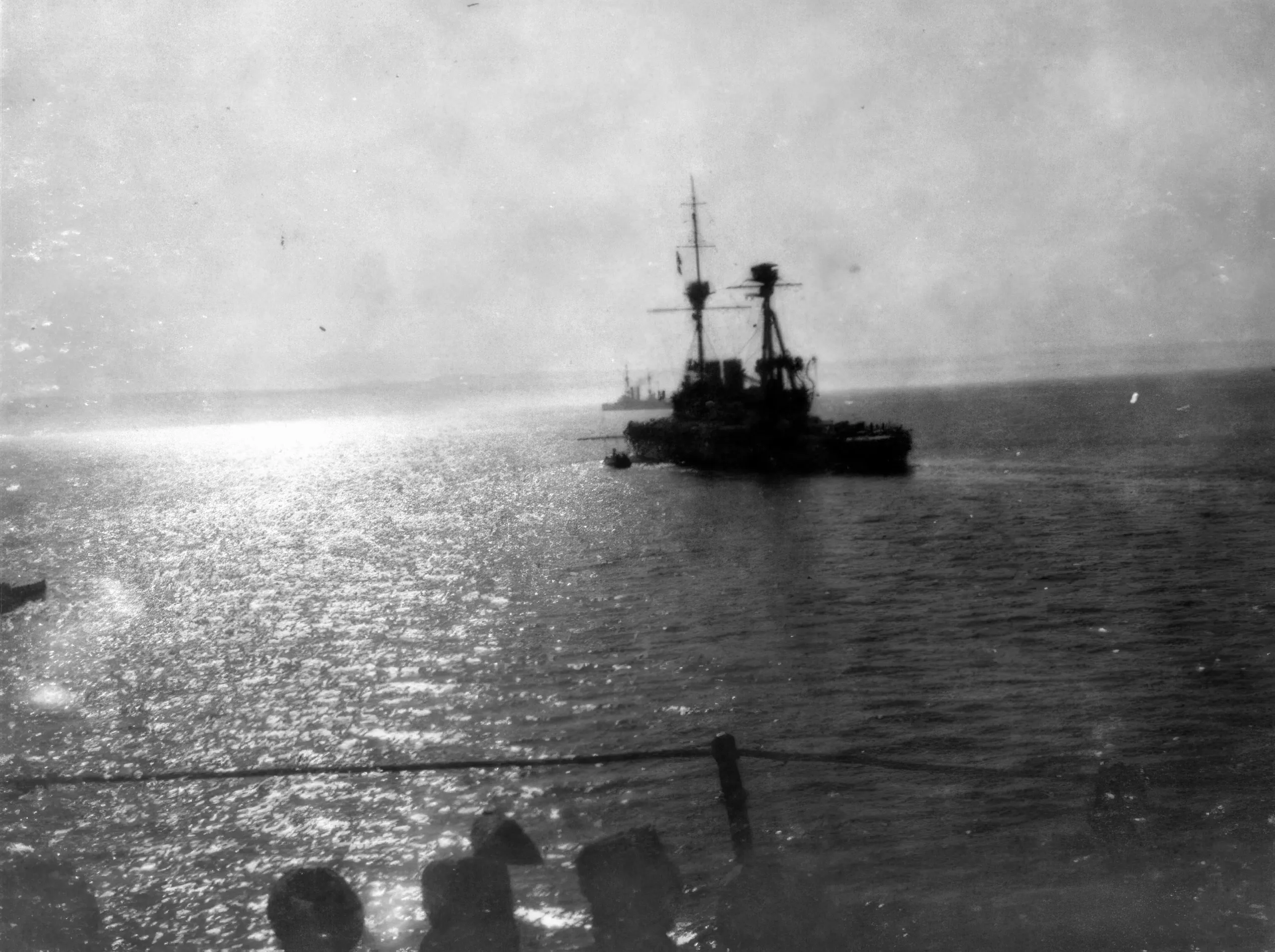LEMNOS IS A GREEK ISLAND IN THE NORTHERN AEGEAN SEA, WITH A WIDE, SHELTERED BAY AND SITUATED LESS THAN 100 KILOMETRES FROM THE GALLIPOLI PENINSULA.
IN 1915, IT WAS USED AS A STAGING BASE FOR THE NAVAL ASSAULT ON THE DARDANELLES AND THEN FOR THE GALLIPOLI LANDINGS.
IT SUBSEQUENTLY SERVED AS THE SITE FOR LOGISTICAL INSTALLATIONS, SUCH AS HOSPITALS, SUPPLY DEPOTS AND REST CAMPS, WHICH SUPPORTED THE GROUND CAMPAIGN.
WINTER 1914–15
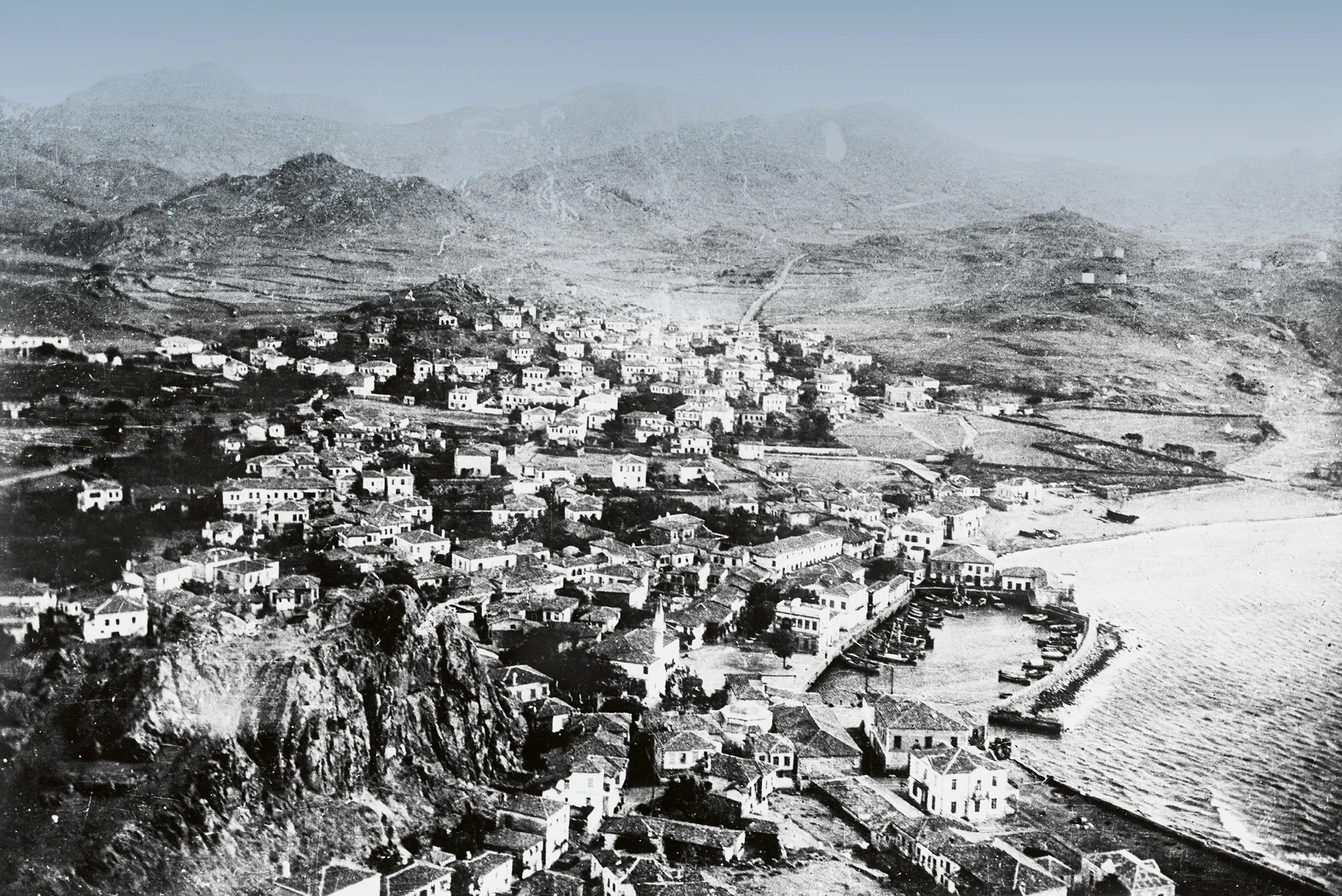
WAR WAS DECLARED IN AUGUST 1914, YET LIFE CONTINUED LARGELY UNDISTURBED ON LEMNOS UNTIL EARLY 1915, AS GREECE WAS FORMALLY NEUTRAL.
THE NAVAL ASSAULT ON THE DARDANELLES IN FEBRUARY DREW LEMNOS INTO THE CONFLICT. THE ISLAND BECAME AN ADVANCED BASE FOR THE ALLIED CAMPAIGN.
Britain declares war on Germany
On 28 June 1914, Serbian nationalist Gavrilo Princip shot Archduke Franz Ferdinand of Austria in Sarajevo, in the province of Bosnia-Herzegovina.
The assassination of the heir to the Austro-Hungarian throne set in motion a crisis that threatened the balance of power in Europe and triggered a chain of events that led to the First World War.
Alliances were invoked and, on 30 July, Austria declared war on Serbia. Russia, an ally of France and Britain, then supported Serbia. On 1 August, Germany declared war on Russia, and then on France. Following Germany’s invasion of the neutral Belgium, on 4 August Britain declared war on Germany. This meant Australia and other British dominions were also at war.
The battlelines were drawn and nations from across the globe entered the Great War.
Australia responds
Australia gave Britain its full support. It immediately pledged 20,000 troops, and the Royal Australian Navy was placed under Admiralty command.
Some Australians greeted news of the war with a level of enthusiasm. Many saw enlistment as an adventure abroad or a chance for a regular income, among a host of reasons, and they expected the war would be short.
Under the Defence Act (1903), only volunteers could serve overseas. On 10 August, efforts began to build an infantry division and light horse brigade that could be deployed overseas. By month’s end, close to 900 officers and 20,000 men of other ranks had joined the newly formed Australian Imperial Force (AIF).

The first convoy departs Albany, Western Australia
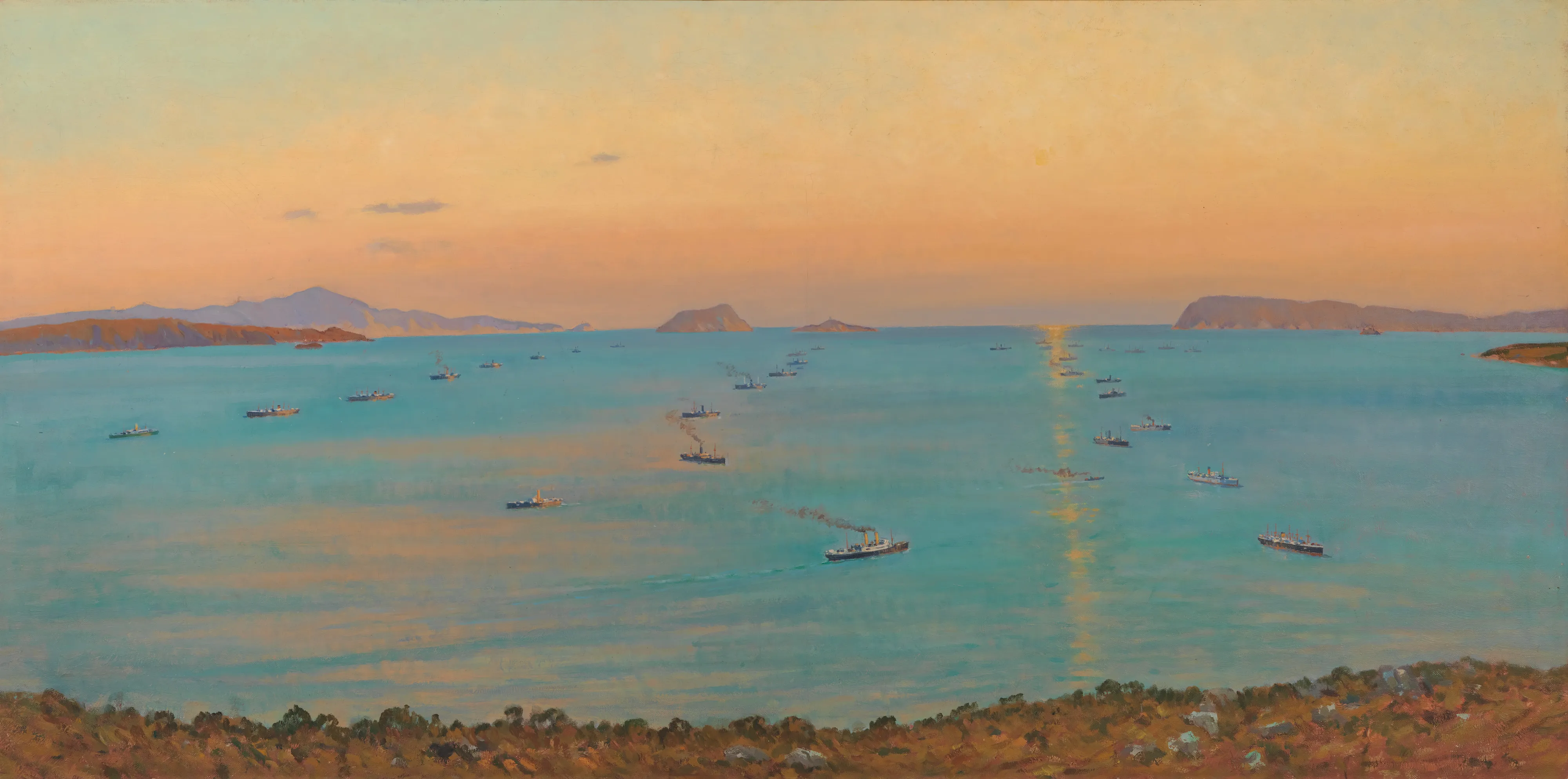
Thirty-eight Australian and ten New Zealand troopships sailed with a security escort of four warships in the first convoy of troop transports to leave Australia.
Volunteers had embarked at ports around the country before the troopships assembled at Albany, Western Australia. The vessels carried 30,000 troops, 12,500 horses and military and medical supplies. They also carried the first 25 nurses of the Australian Army Nursing Service to serve abroad in this war.
The Ottoman Empire – often referred to as Türkiye, though the nation-state did not then exist – entered the conflict as the convoy left Australia for England. The ships were diverted to Egypt, and there troops camped at a major base at Mena, close to the Pyramids.
Allies request Lemnos
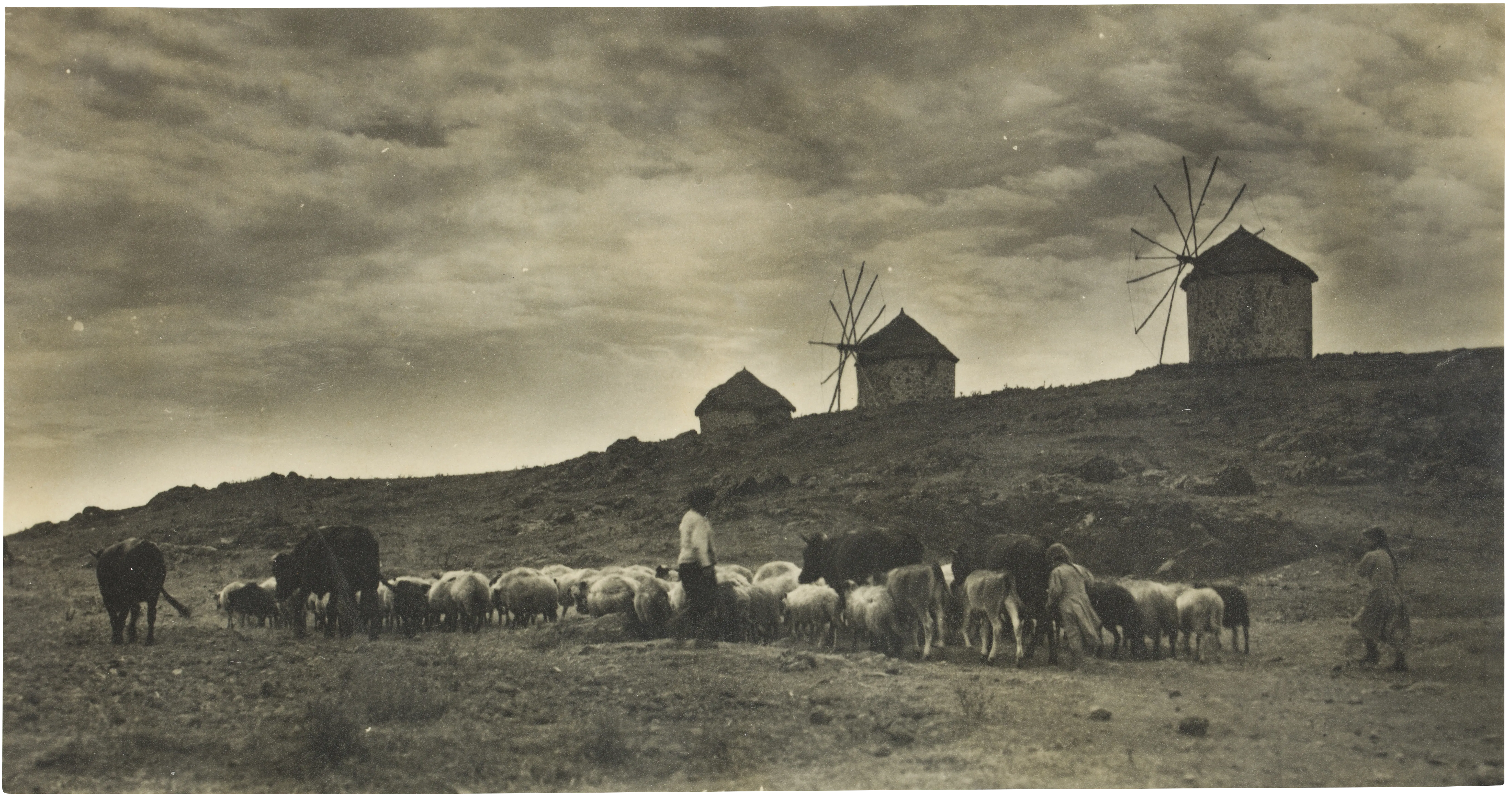
Lemnos was a tranquil Greek island before the Allies established a military base there. It was home to around 30,000 Greek (Hellenic) and 5,000 Turkish Lemnians. Greece had only recently taken control of the island from the Ottoman Empire.
In February 1915, Prime Minister Eleftherios Venizelos of the neutral Greece agreed to the Allies’ request to use Lemnos as an advanced base for its Dardanelles campaign. This was not universally supported. King Constantine I had family connections to Germany, including his German-born wife. Greece’s neutrality was also complicated by its pre-war treaty with Serbia.
For the Allies, Lemnos was perfectly positioned, less than 100 kilometres from the Gallipoli peninsula. The large, deep bay on its southern side would allow for the transfer of troops and supplies and for many ships to lie at anchor.
Allied naval assault on the Dardanelles
The Gallipoli campaign had its origins with a Russian request in January 1915 for help to take control of the Dardanelles strait. This would weaken the Ottomans, open a shipping route to the Black Sea from the Mediterranean and divert enemy forces from the Caucasus.
The British War Council decided to attempt this through naval force only. On 25 February, a small fleet of British and French warships was dispatched to shell the Turkish forts and batteries at the entrance to the strait. However, the well-prepared Ottomans withstood the assault.
The British and French intensified their efforts. A large fleet attempted, once again, to force the Narrows, inside the waterway’s entrance, and take the Dardanelles. After four days’ engagement, the Ottomans repelled the Allies on 18 March. Three of the great warships had been lost to sea mines and three others were badly damaged.
It became clear the Dardanelles could not be forced using naval vessels alone. Allied planning began for an amphibious assault.

SPRING 1915
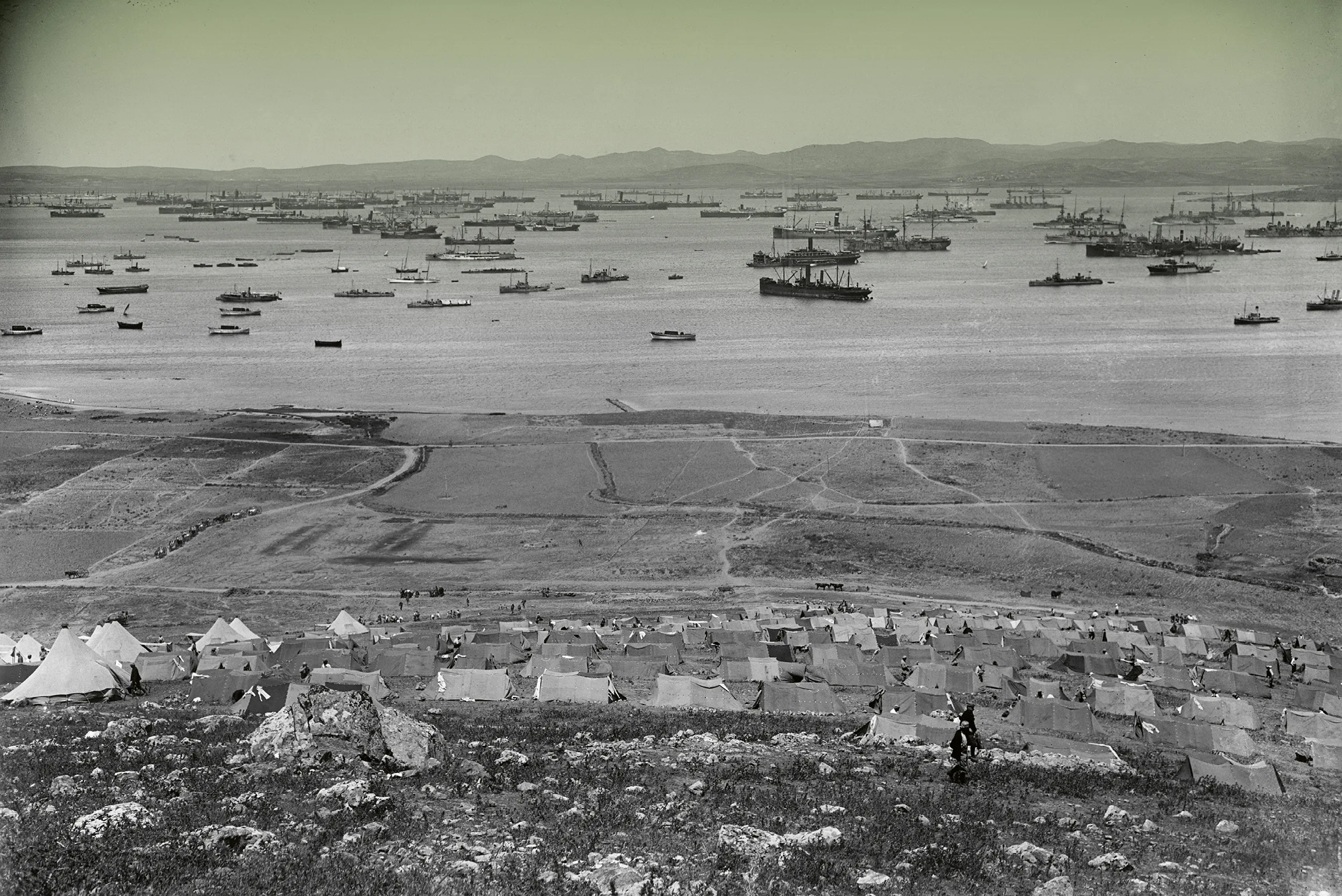
AS WINTER TURNED INTO SPRING, MUDROS HARBOUR BECAME A SITE OF INTENSE ACTIVITY. EAST MUDROS WAS TRANSFORMED INTO A MILITARY BASE, WITH CAMPS, HOSPITALS, DEPOTS, PIERS AND ROADWAYS AMONG THE NEW INFRASTRUCTURE.
BY MID-APRIL THE HARBOUR WAS FILLED WITH COUNTLESS TROOPSHIPS, SUPPLY SHIPS AND BATTLESHIPS. The TROOPS HAD BEEN TRAINING INTENSELY FOR THE SPRING ASSAULT ON GALLIPOLI. BATTLE WAS IMMINENT.
Birdwood arrives on Lemnos
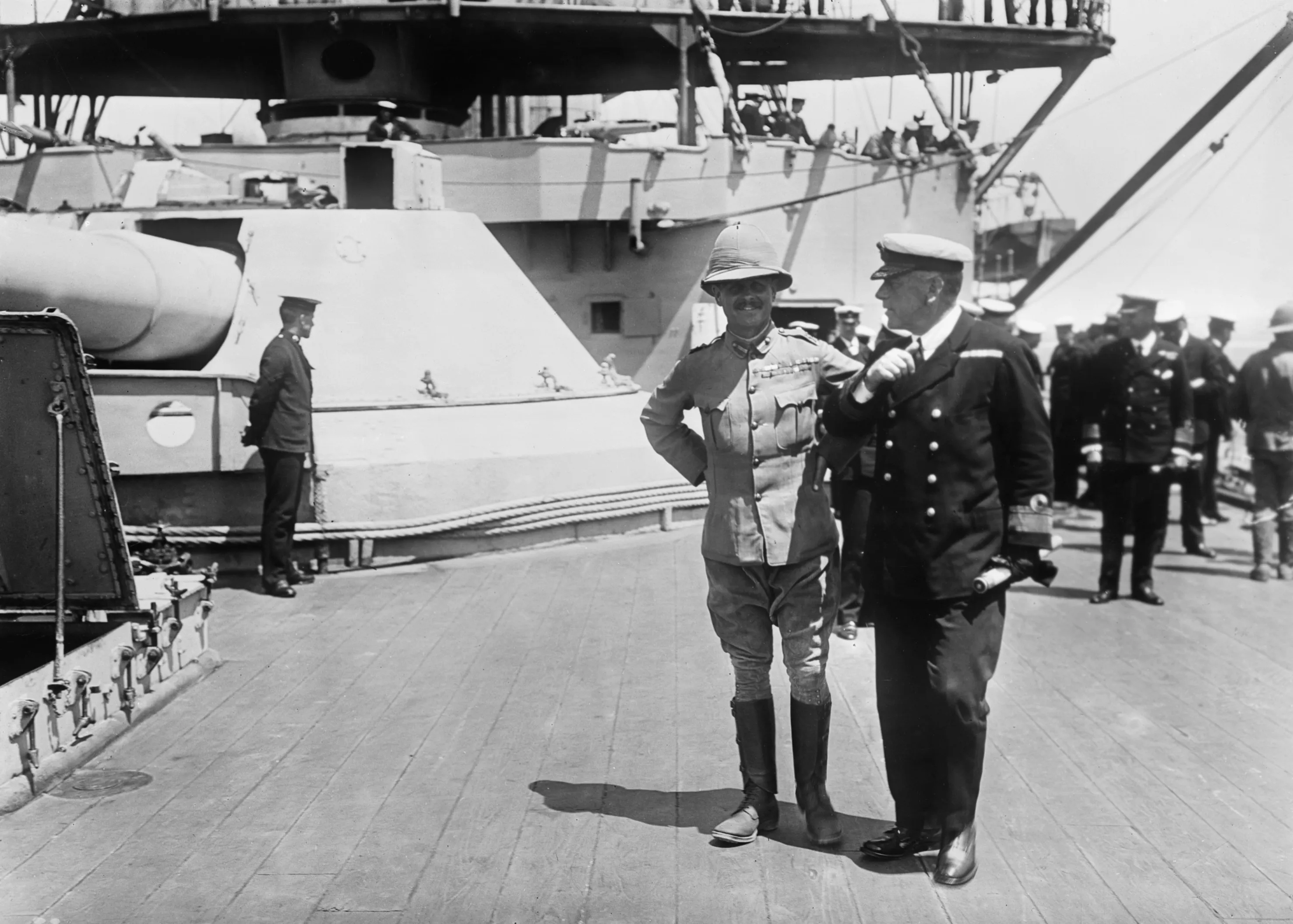
On 1 March, Lieutenant-General William Birdwood arrived at Lemnos, the first Anzac soldier on the island. A senior officer, he commanded the Australian and New Zealand Army Corps (ANZACs) during much of the war, beginning with the Gallipoli campaign.
The corps had been formed before the first convoy left Australia. They arrived on Lemnos from March to prepare for the Gallipoli landings.
First Australian troops arrive on Lemnos
The first Australian arrivals began establishing an Australian camp and building critical infrastructure for the military base. The Australian 3rd Brigade was accompanied by a contingent of other units. They included Australian Field Ambulance units, the 1st Australian Field Company Engineers, 1st Australian Division Signals Company and 1st Casualty Clearing Station.
Building a military base
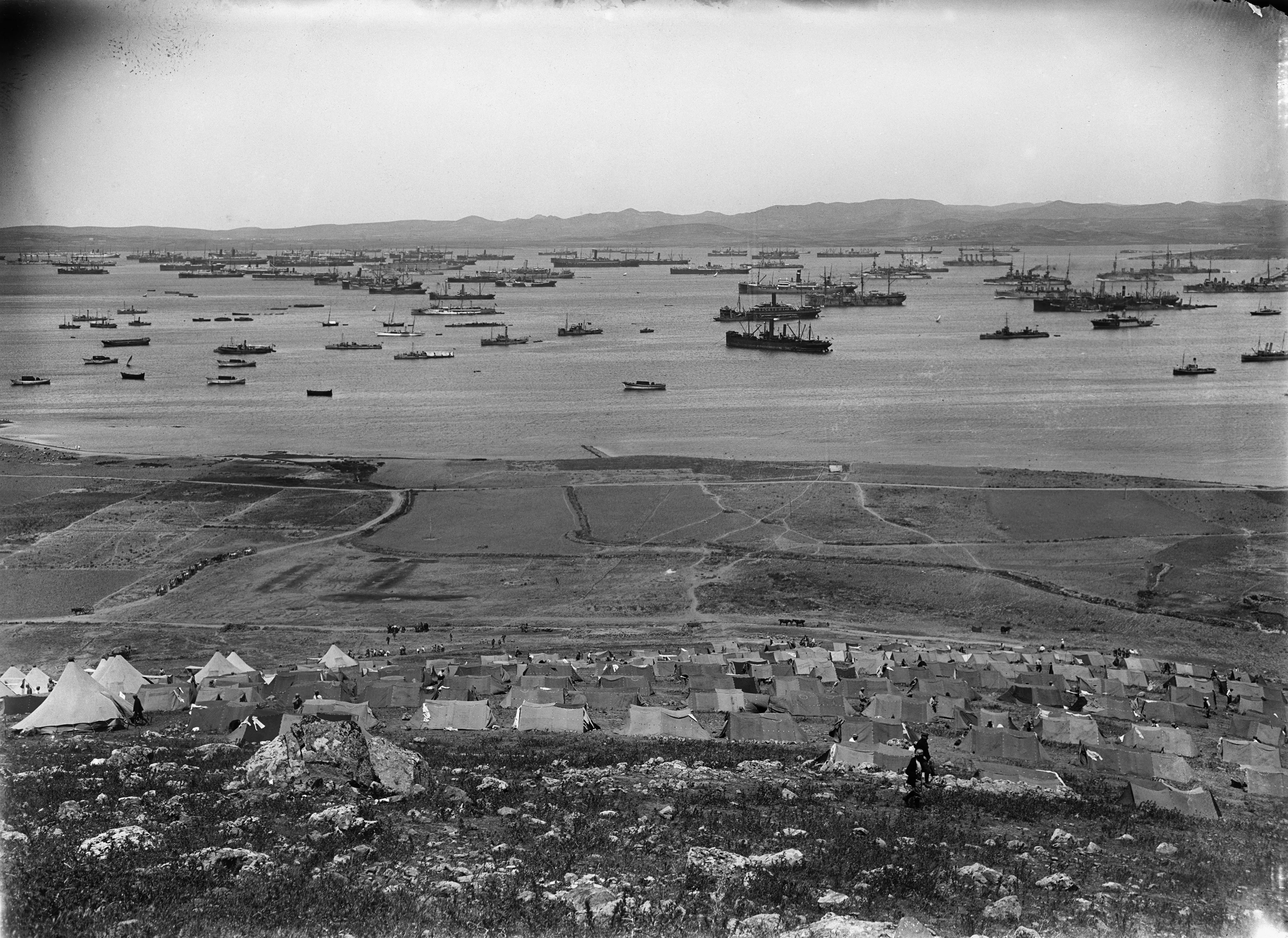
From early March, Lemnos became a hub of intense activity. Governor Rear Admiral Rosslyn Wemyss RN and the first British forces had landed in late February 1915. Within weeks, thousands of troops from many Allied nations began arriving.
‘I wish I could explain to you how this place is expanding. In the last three weeks there has practically arisen a new town of about 10,000 inhabitants’
– Lord Wester-Wemyss (Rosslyn Erskine Wemyss), quoted in The Navy in the Dardanelles Campaign, p. 187
Grounding of HMAS AE2
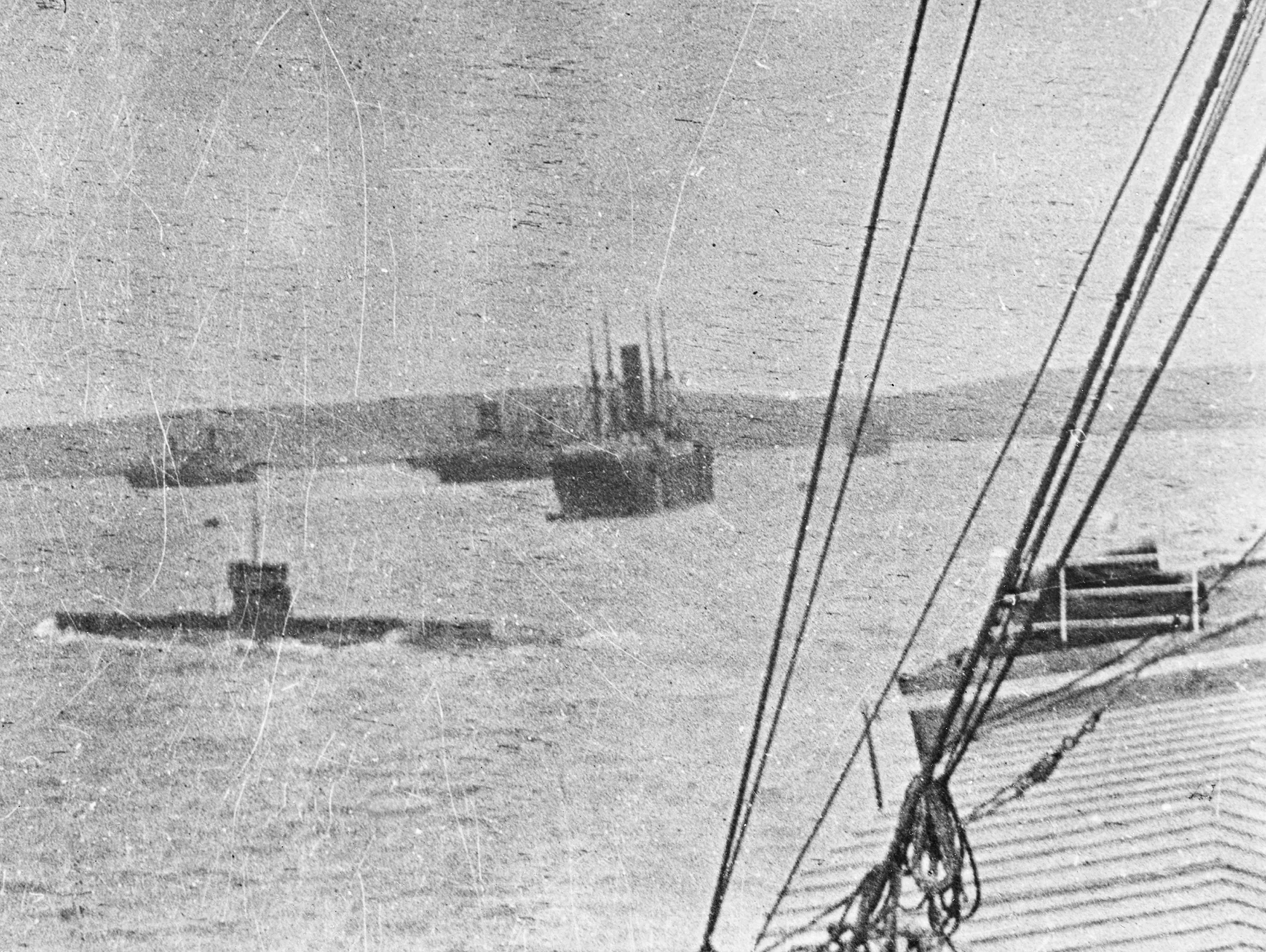
On the night of 10 March, the Australian submarine HMAS AE2 ran aground on Buda Point, near present-day Fanaraki.
Following a patrol, AE2 had been entering Mudros Harbour after dark. The grounding resulted from the Sangrada Point lighthouse not being lit to avoid revealing the harbour’s location to the enemy. The grounding damaged the sub’s hull, but after speedy makeshift repairs on Lemnos, AE2 travelled to Malta where 13 of its hull plates were replaced.
It then returned to Lemnos to prepare for the landings.
Construction of the Australian Pier
On 12 March, construction began on one of the first Allied piers, the Australian Pier, and roadways to nearby facilities and Mudros town. The 1st Field Company Australian Engineers and 9th Australian Infantry Battalion built the pier.
The Australian Pier provided greatly improved landing options for troops, supplies and, in time, casualties from Gallipoli.
'One thing the inhabitants will remember us by is a pier built by our engineers for our use. It is known as the Australian pier.'
- 119 Corporal George Ernest Richards of the 9th Battalion in 1915
No. 1 Australian Stationary Hospital established
Australia’s first medical facility on Lemnos, No. 1 Australian Stationary Hospital (1ASH) arrived at East Mudros on 12 March. Troops helped erect its many tents to the north of the Australian camp. They also fetched vital medical equipment and supplies from the ships.
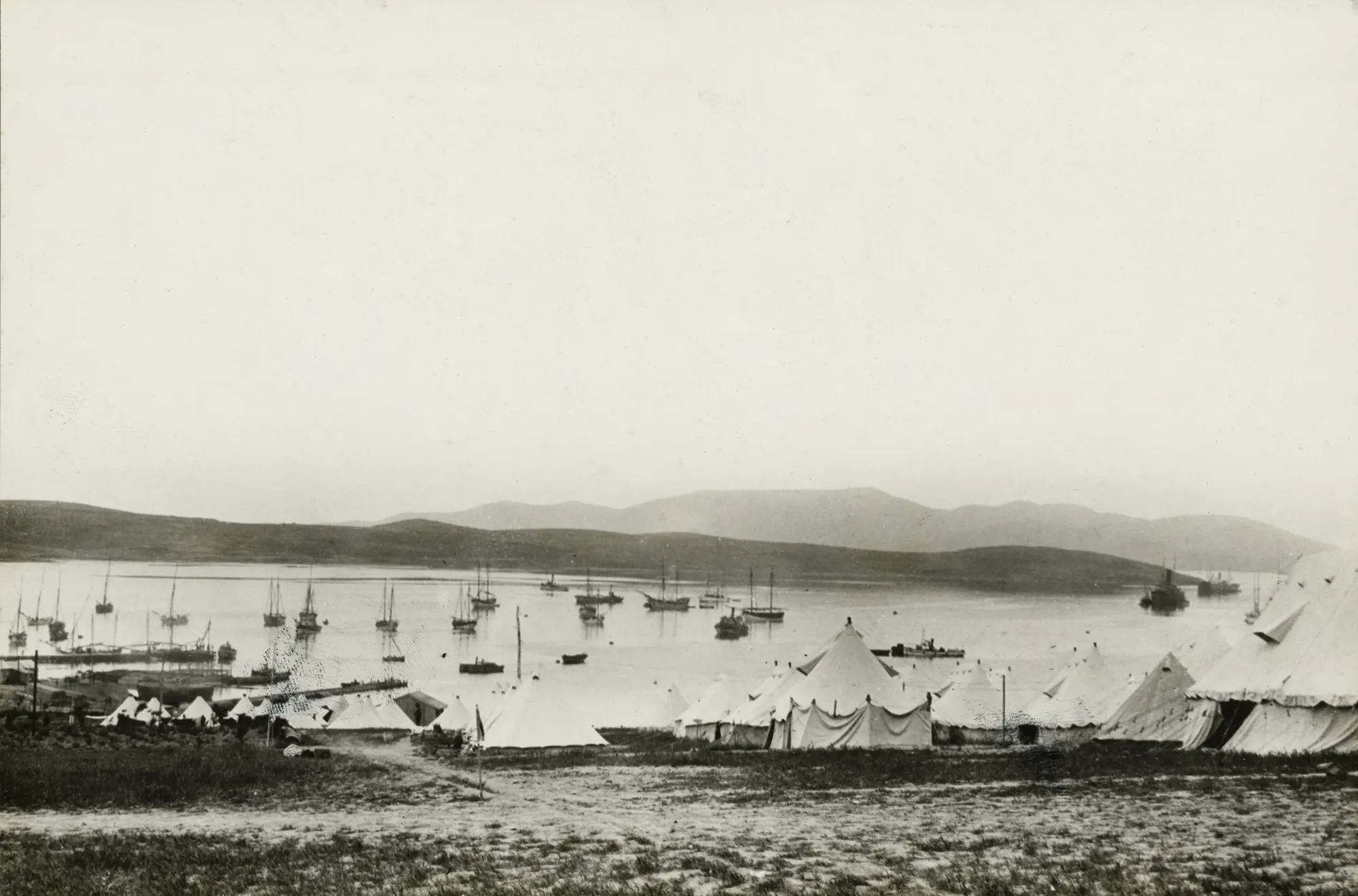
‘Our camp looks imposing. We have 34 marquees, 2 open tents, and 20 bells ... Ward tents are pitched, two or three together, with one of the larger sides of each interlaced with that of another.’
– 1ASH staff member, quoted in Lemnos and Gallipoli Revealed, p. 11
Troops arrive and infrastructure established
Most Anzac troops arrived from Egypt between 7 and 17 April.
Their training intensified for the Gallipoli landings and fighting that would follow. Mudros Harbour quickly became a hive of activity. A great number of troopships, supply vessels and battleships moved through its waters. Troops also used its shores to practise for the Gallipoli landings.
A navigational beacon system was essential to marine safety in the harbour. The 1st Field Company Australian Engineers helped install some of the 13 or so beacons during April.

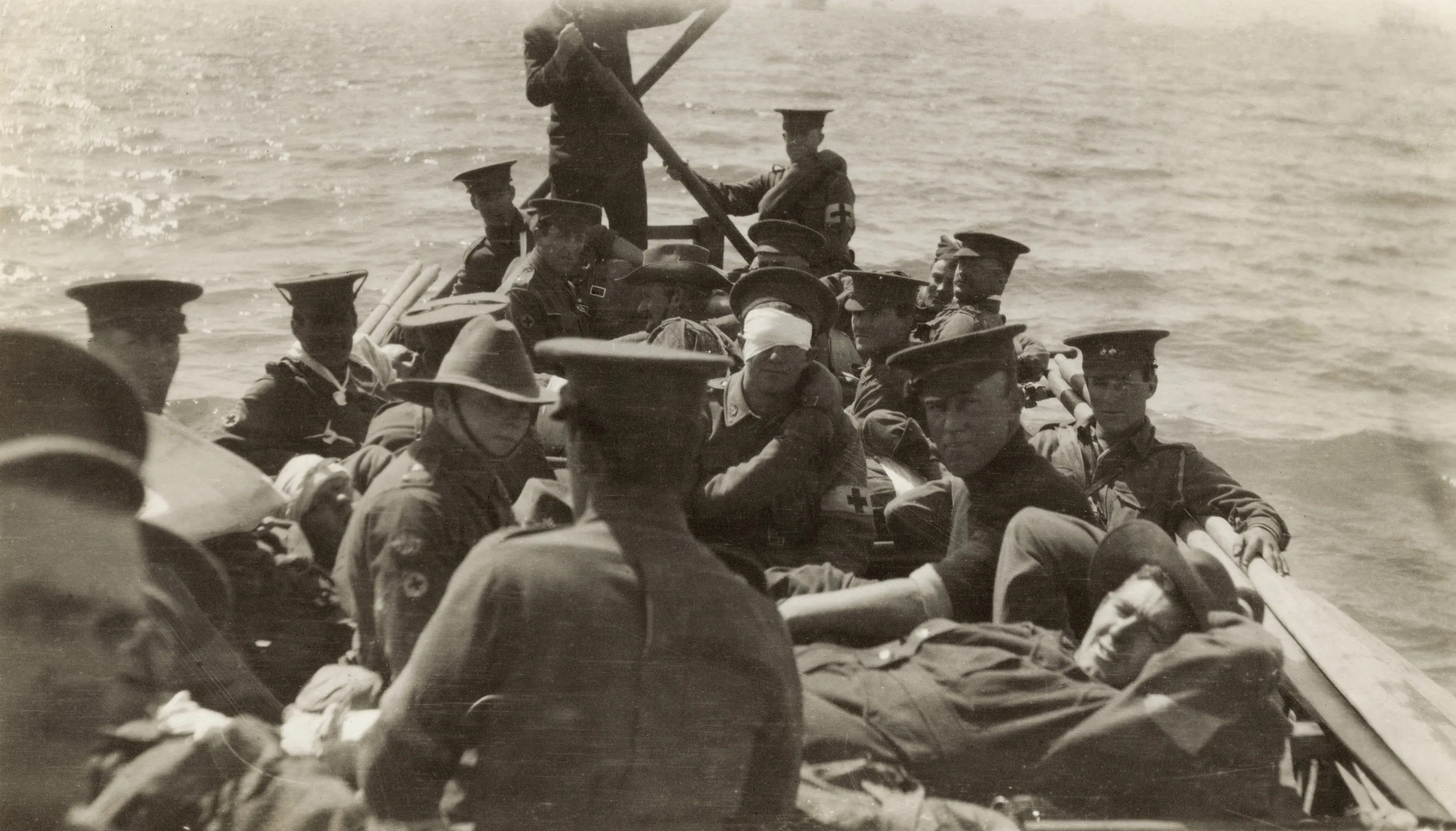
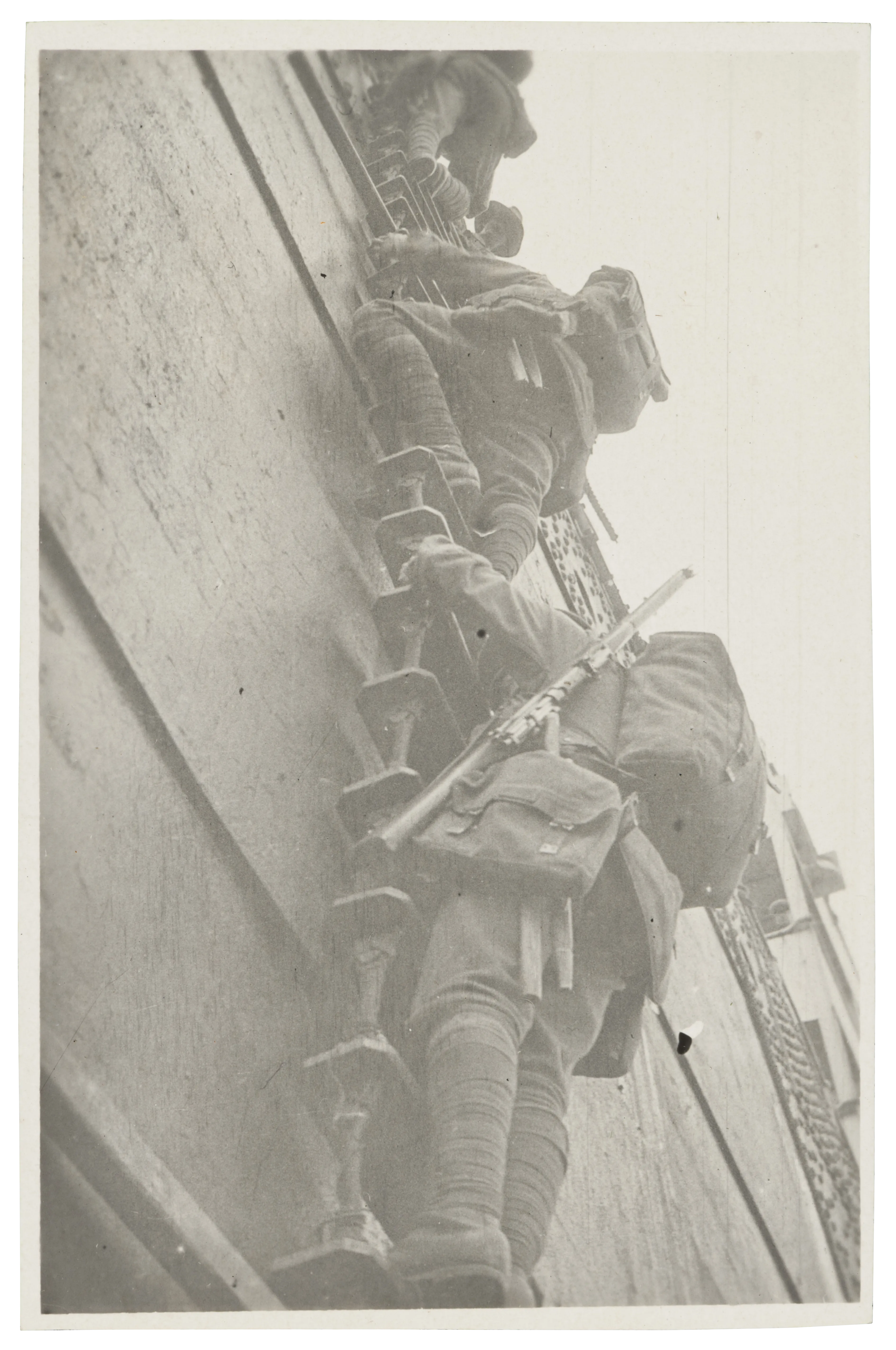
East Mudros Military Cemetery established
Located east of Mudros town, this military cemetery is the resting place for the largest number of Allies buried on Lemnos. It holds the graves of 98 Australians, including 11 men from the torpedoing of HMT Southland.
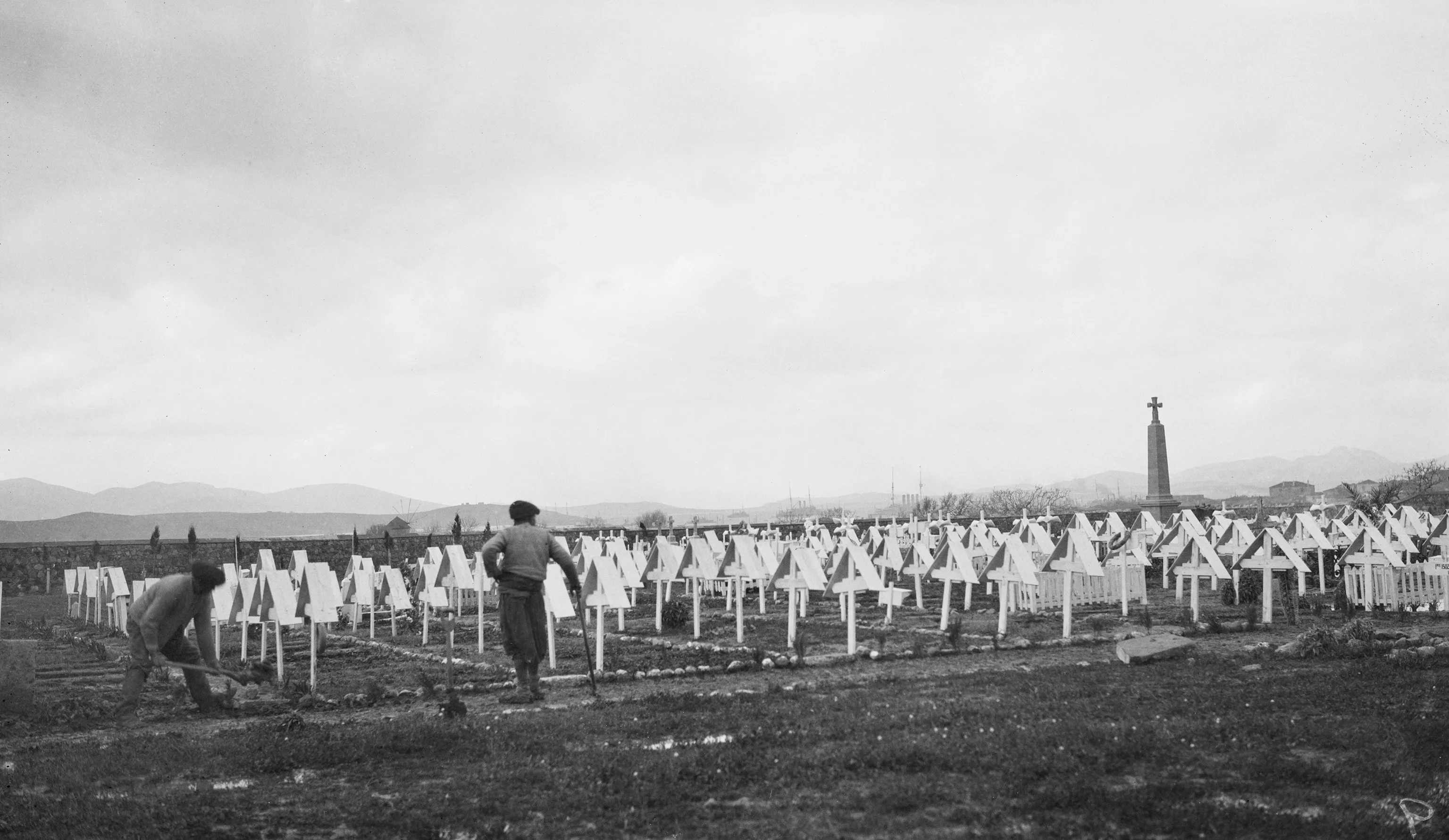

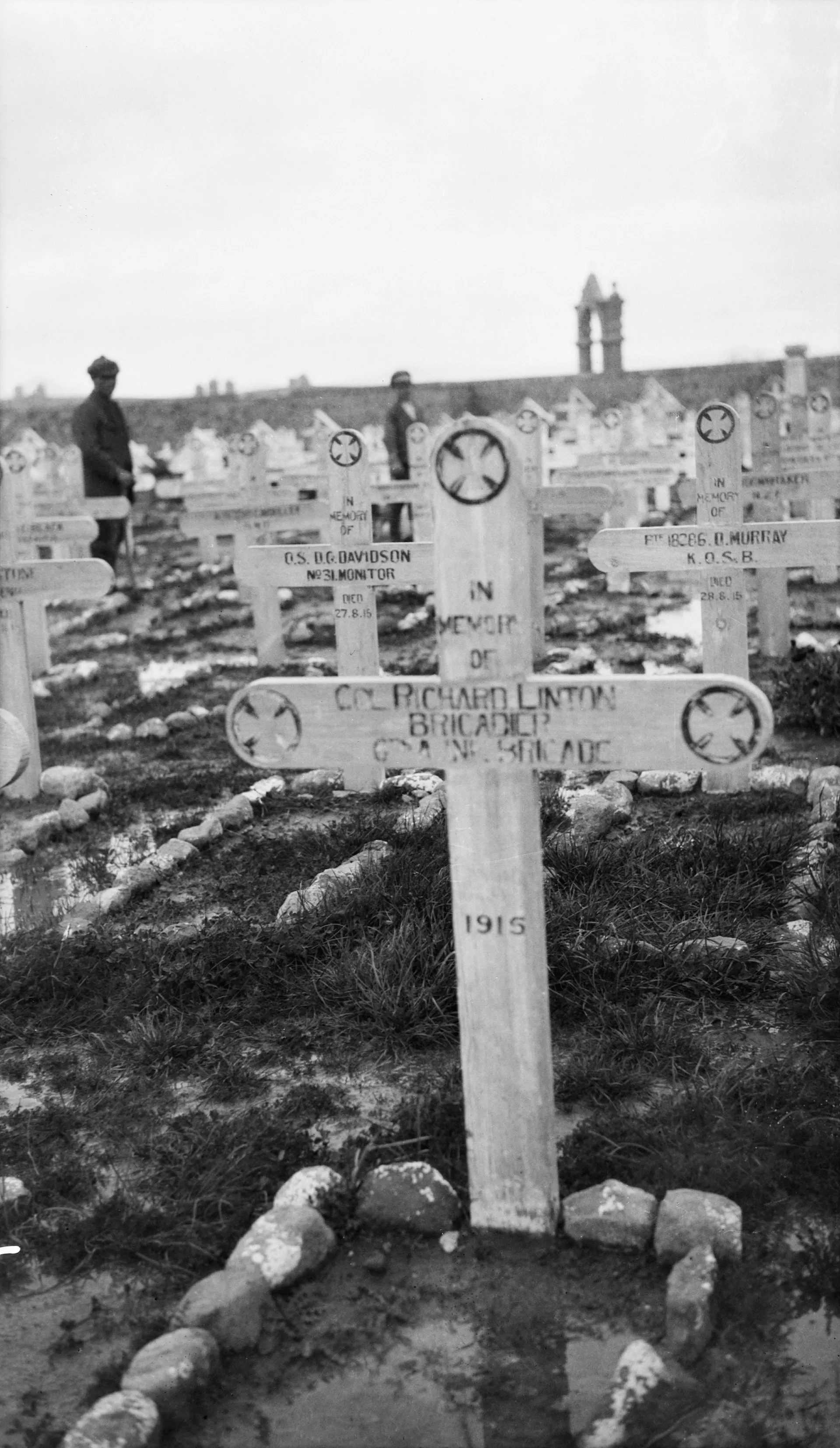
The Gallipoli landings
The Gallipoli landings were originally to occur on 23 April. Bad weather delayed them by 48 hours, with buffeting winds whipping up rough seas. The weather prevented small vessels from moving troops and supplies through the harbour.
On the eve of departure, around 200 troopships and destroyers filled Mudros Bay. They held some 75,000 Allied troops, most of whom had been based on Lemnos during the previous weeks. This included the two Anzac Divisions, the British 29th Division and the French Division.
Gallipoli lay nearly 100 kilometres to the north-east. The campaign was expected to be short, but the lesson from February had not been learnt. The Allies underestimated the Ottomans.

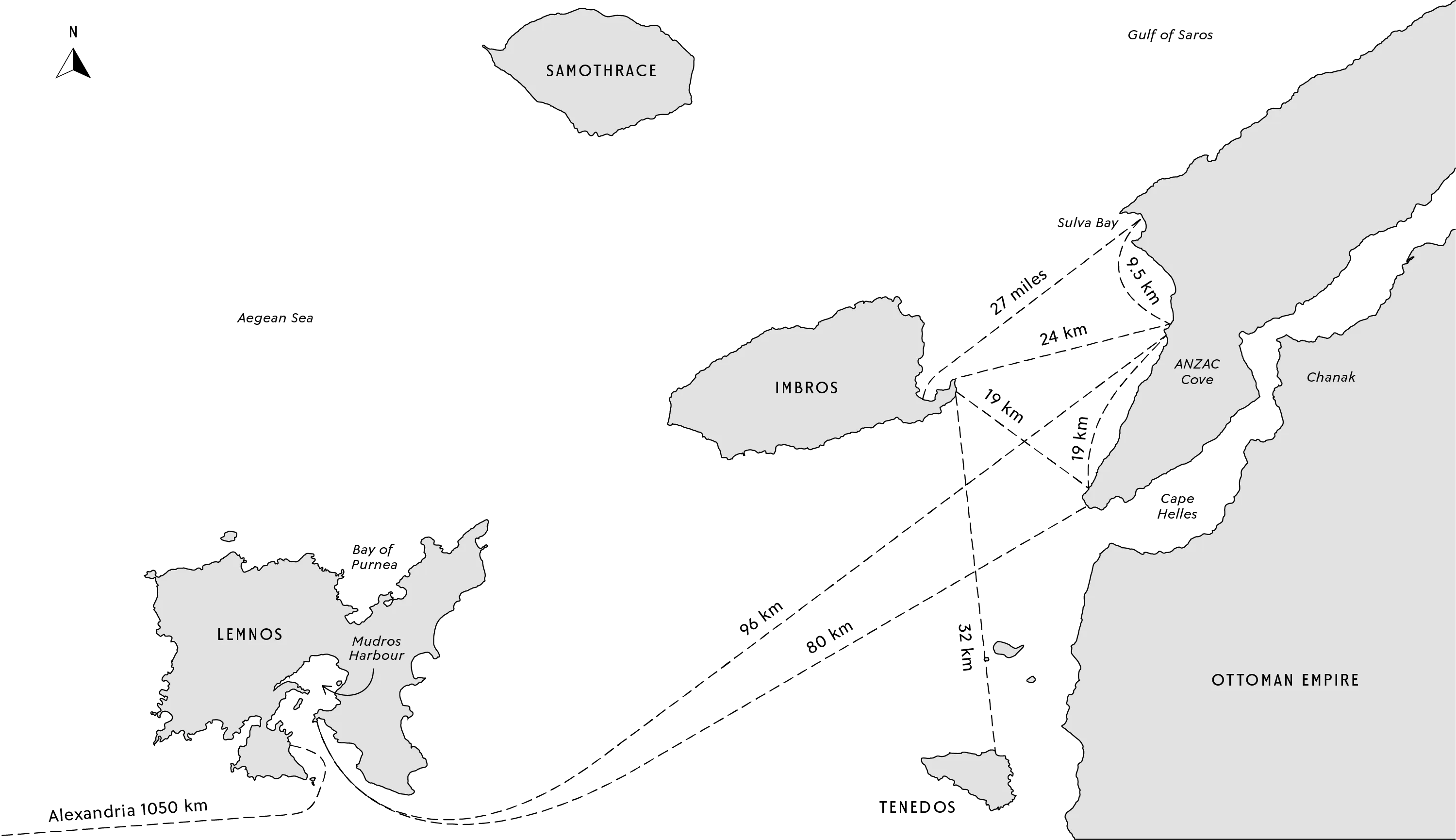
No. 3 Australian General Hospital departs Australia for England
After landing in Britain for further training, the personnel of No. 3 Australian General Hospital (3AGH) learnt that they were bound for Lemnos rather than France, as originally expected.

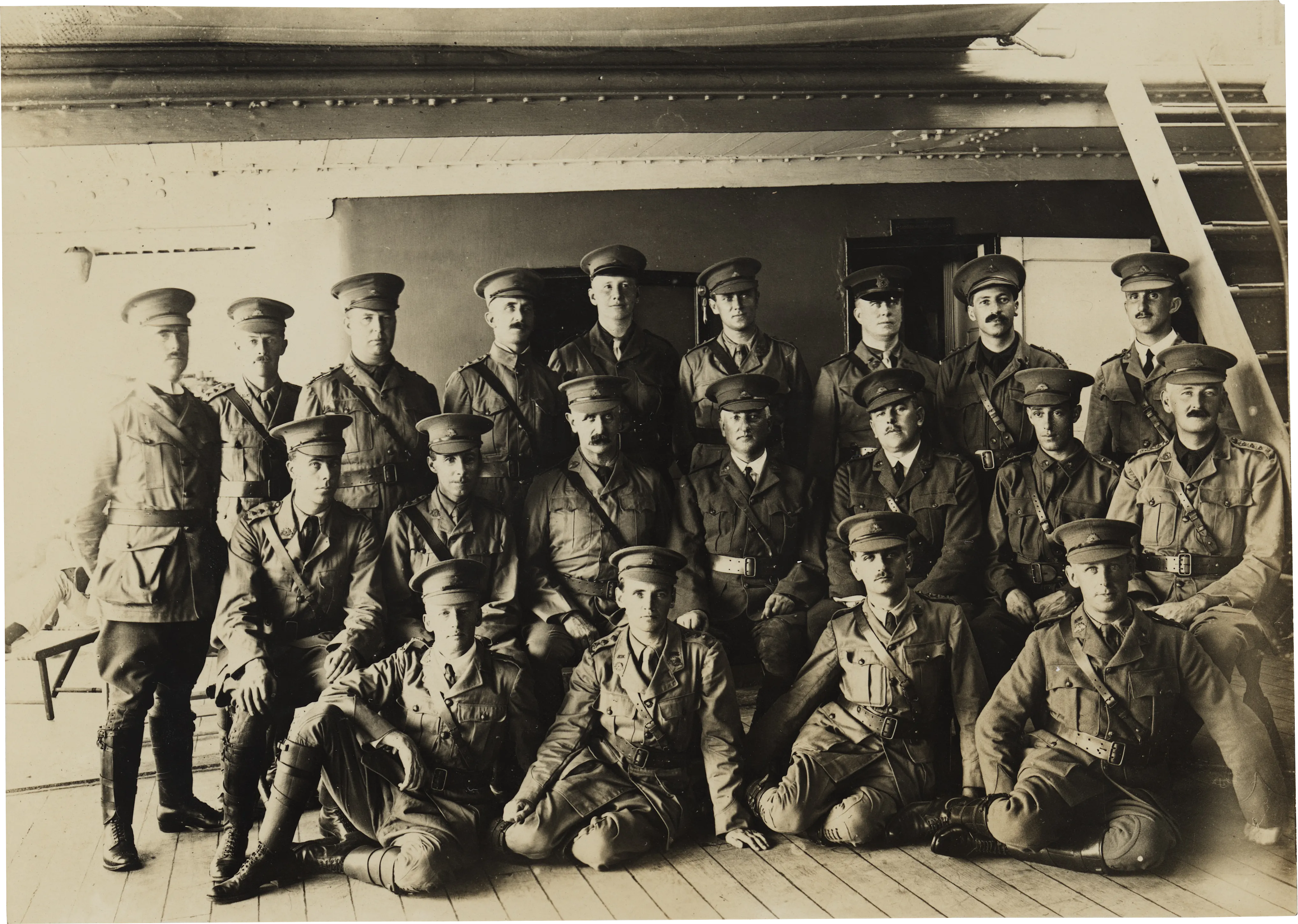
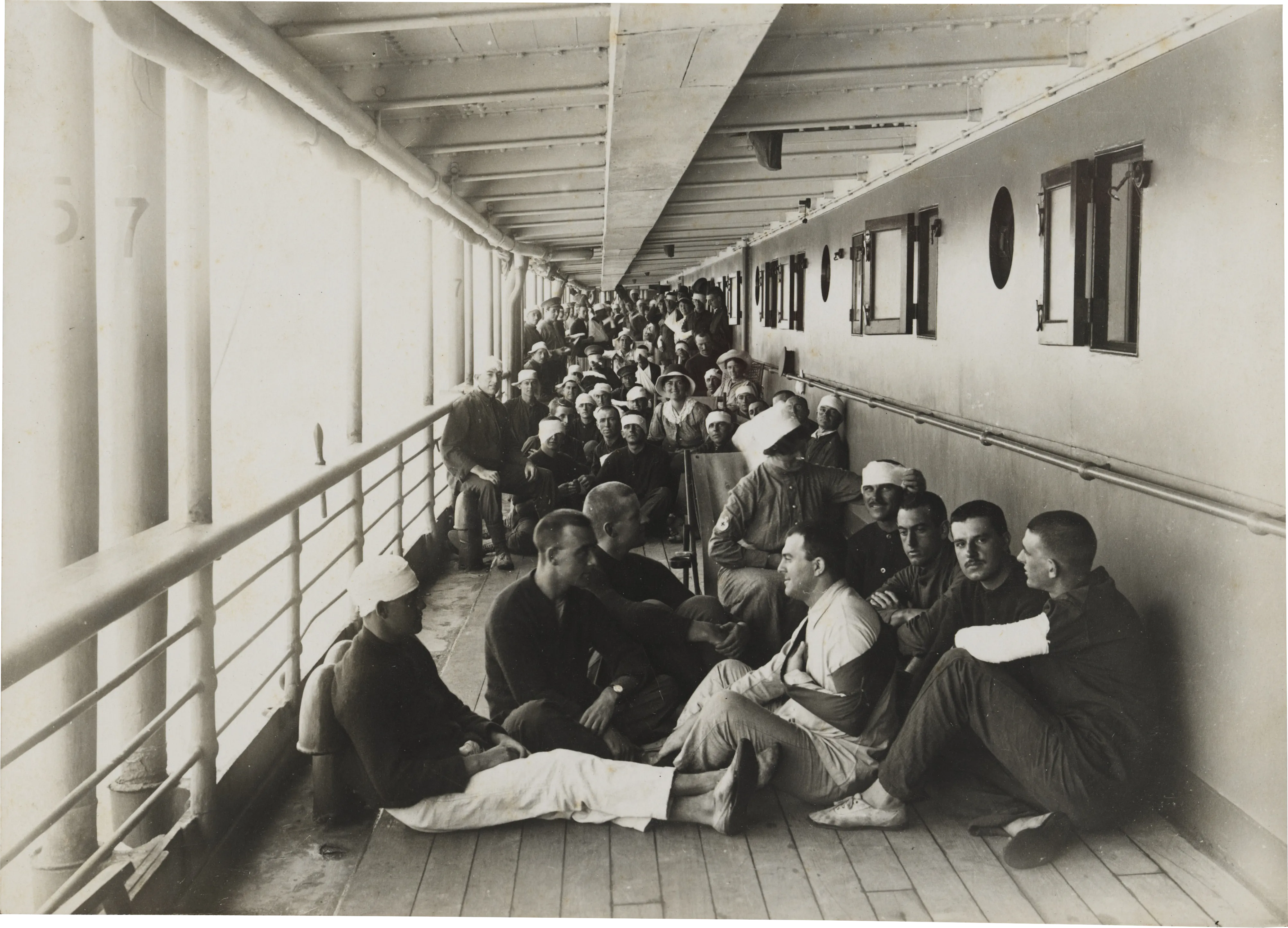
Australian Army Postal Unit commences operation
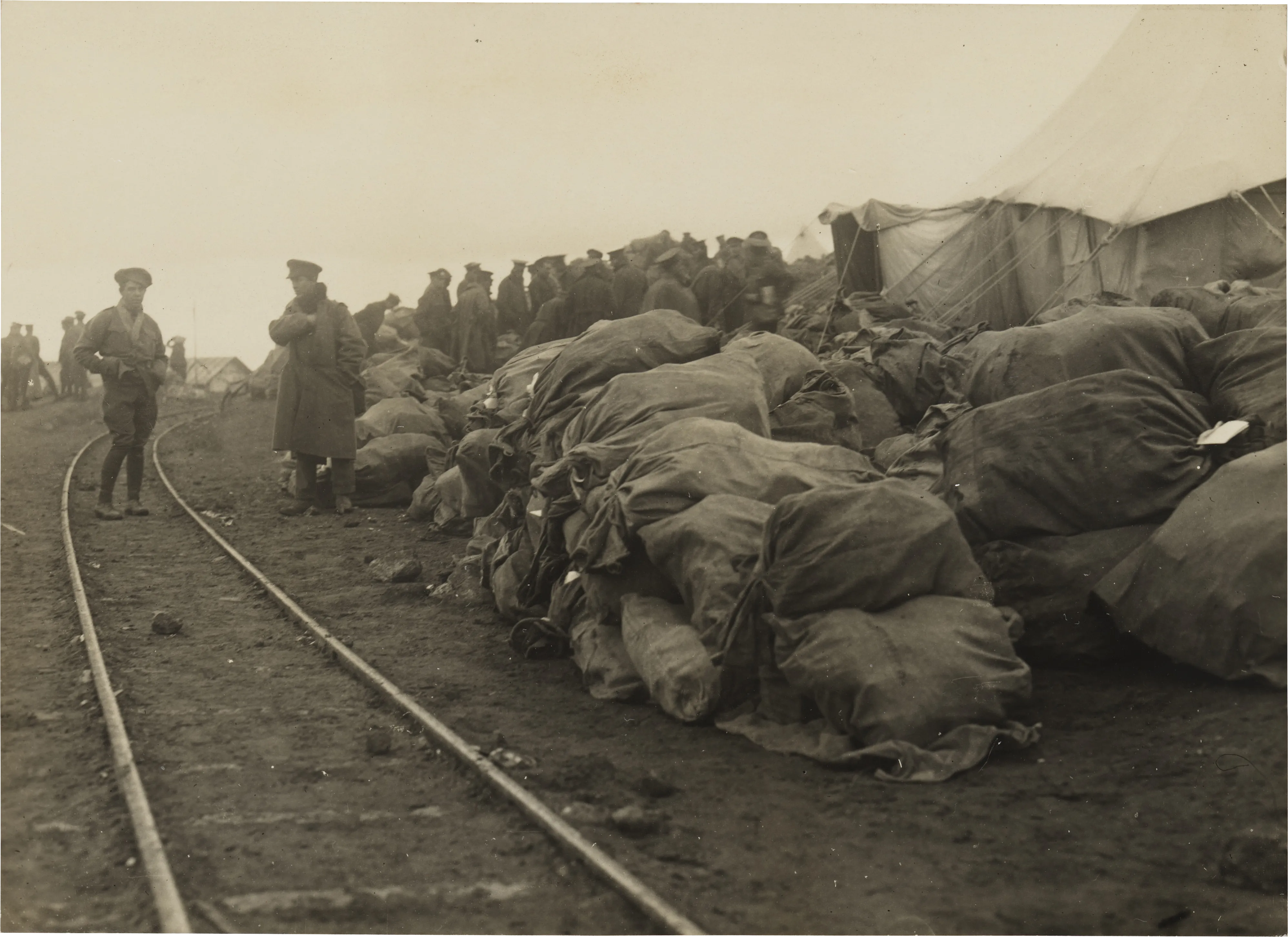
An Australian Army Postal Unit began operating at Lemnos from May, from aboard the depot ship HMT Aragon. Once Sarpi Rest Camp was established in September, a field post office operated there.
Following a visit to the camp from East Mudros, Corporal Harry Gissing expressed in his diary the joy of receiving mail: ‘1 paper, two parcels & three letters awaiting me, a truly splendid day ... I spent a real good half hour opening my treasures.' The following day he ‘Wrote some letters at night in the YMCA tent’.
SUMMER 1915
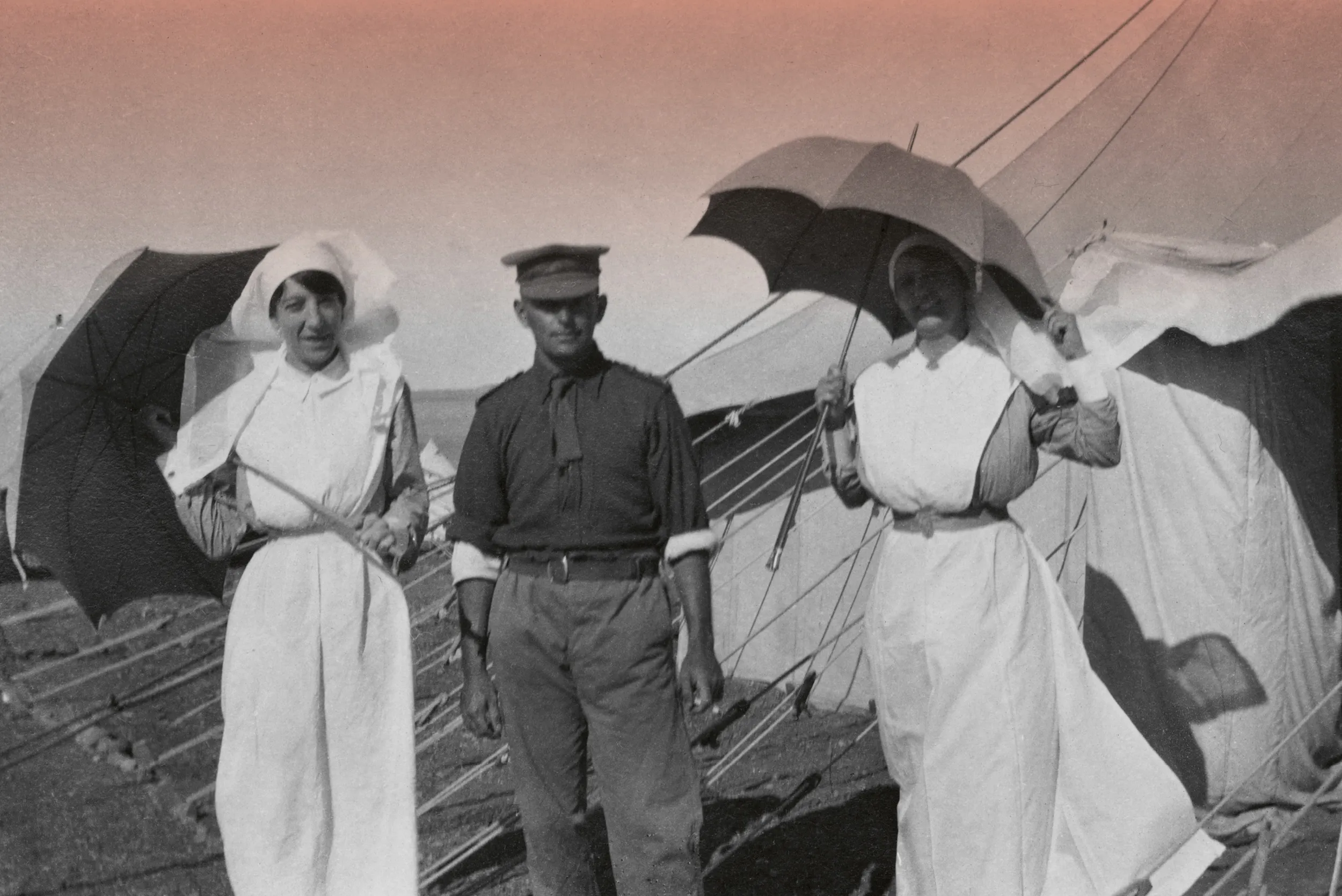
SUMMER BROUGHT INTENSE HEAT, DUST-WHIPPING WINDS AND LEGIONS OF FLIES TO LEMNOS.
FROM JULY, WEST MUDROS WAS DEVELOPED ACROSS THE HARBOUR FROM THE INITIAL BASE. IN READINESS FOR THE AUGUST OFFENSIVE, MEDICAL CAPACITY WAS INCREASED. SEVERAL NEW HOSPITALS – AUSTRALIAN, BRITISH AND CANADIAN – WERE ERECTED FOR THE ANTICIPATED SURGE IN PATIENTS.
The capacity of 1ASH increases
By June, 1ASH was treating about 450 patients evacuated from the frontline. Its capacity increased to 1,000 in anticipation of the August offensive on Gallipoli.
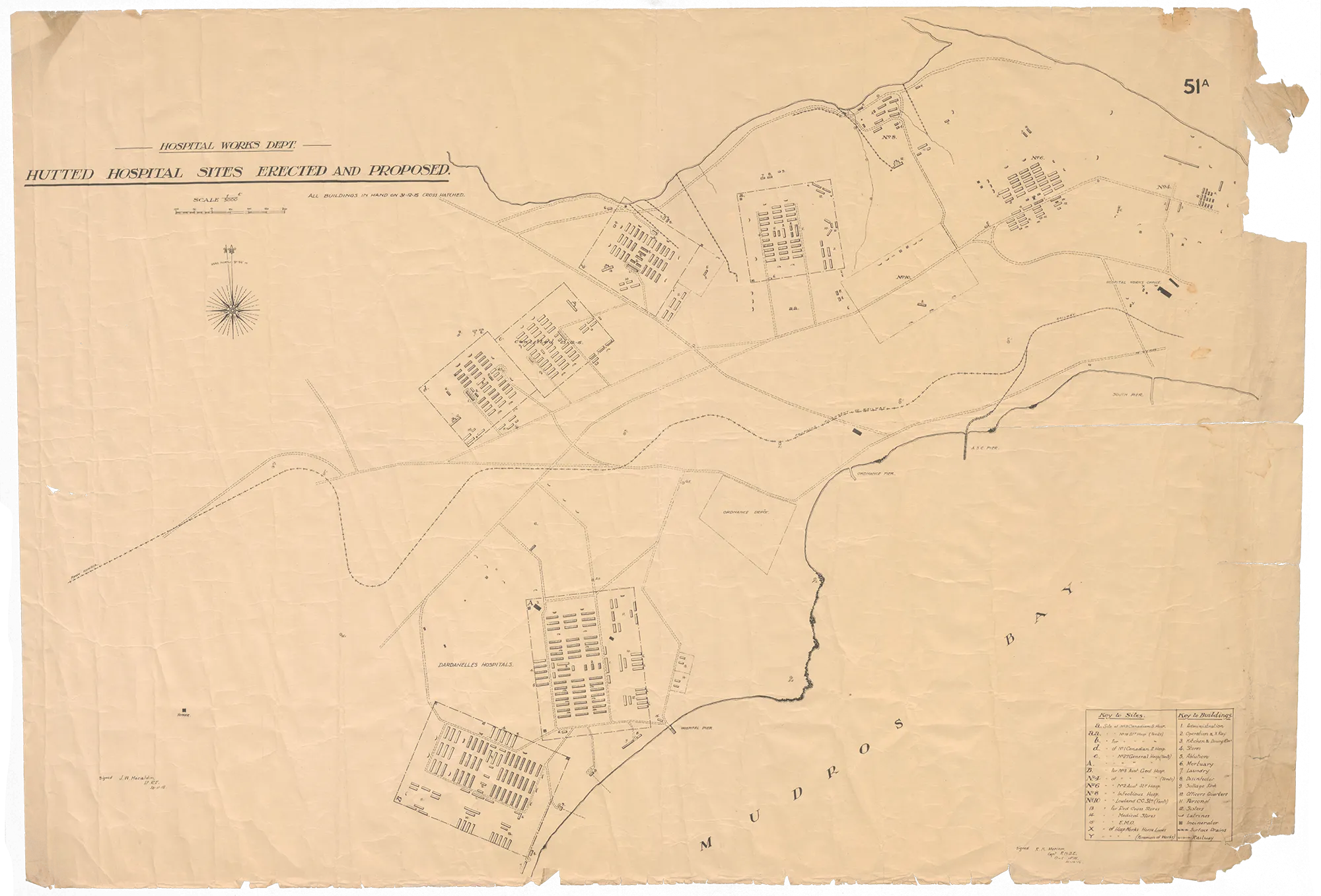
No. 2 Australian Stationary Hospital established
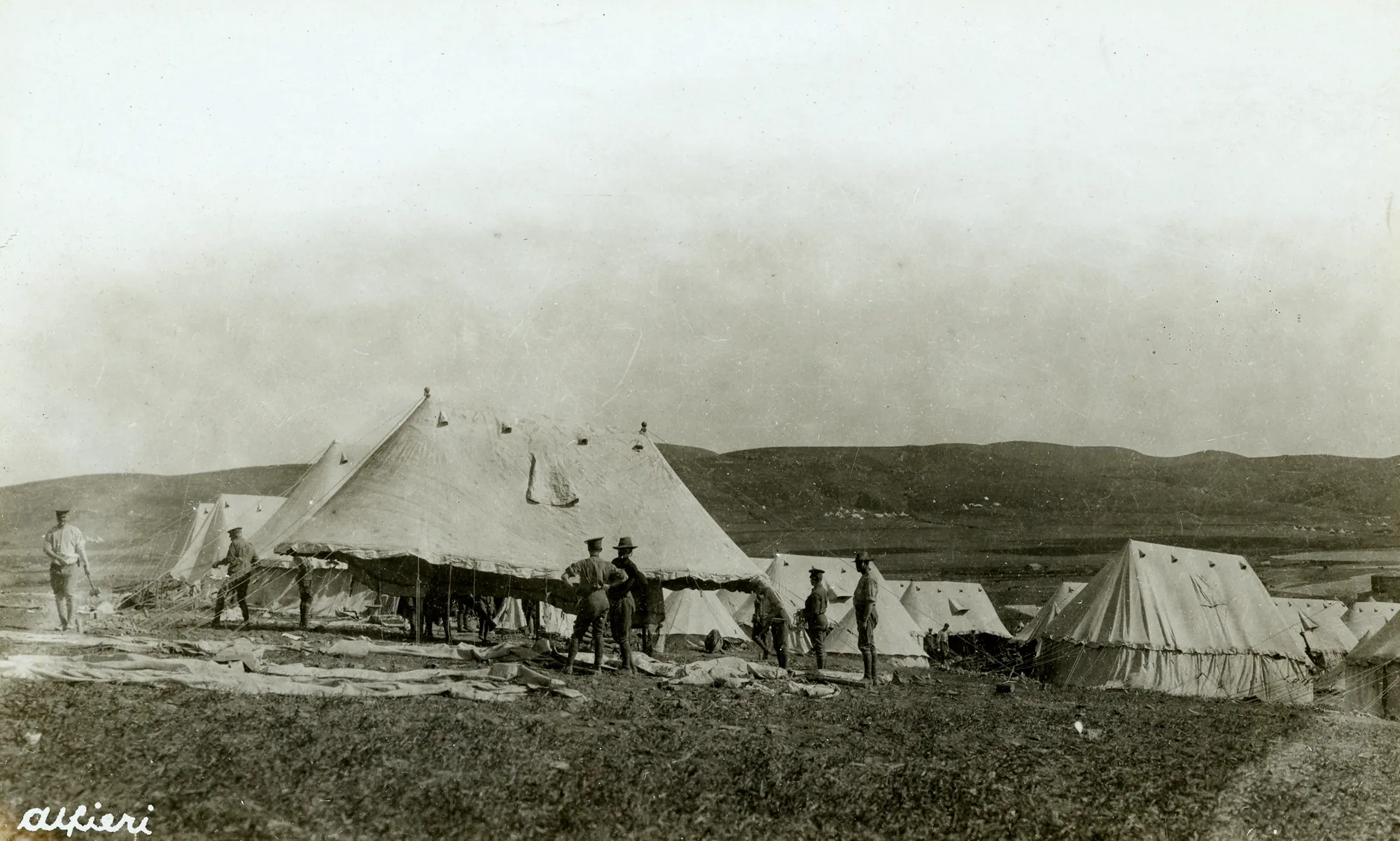
In June, No. 2 Australian Stationary Hospital (2ASH) arrived in East Mudros from Mena camp. In Egypt, it had primarily treated cases of venereal disease.
It moved to West Mudros on 4 August. There, it was part of a growing complex of Allied medical facilities. It was set up to treat around 600 patients but often cared for more.
After nurses arrived with 3AGH in August, some of them also worked in 2ASH.
Water condenser plant built
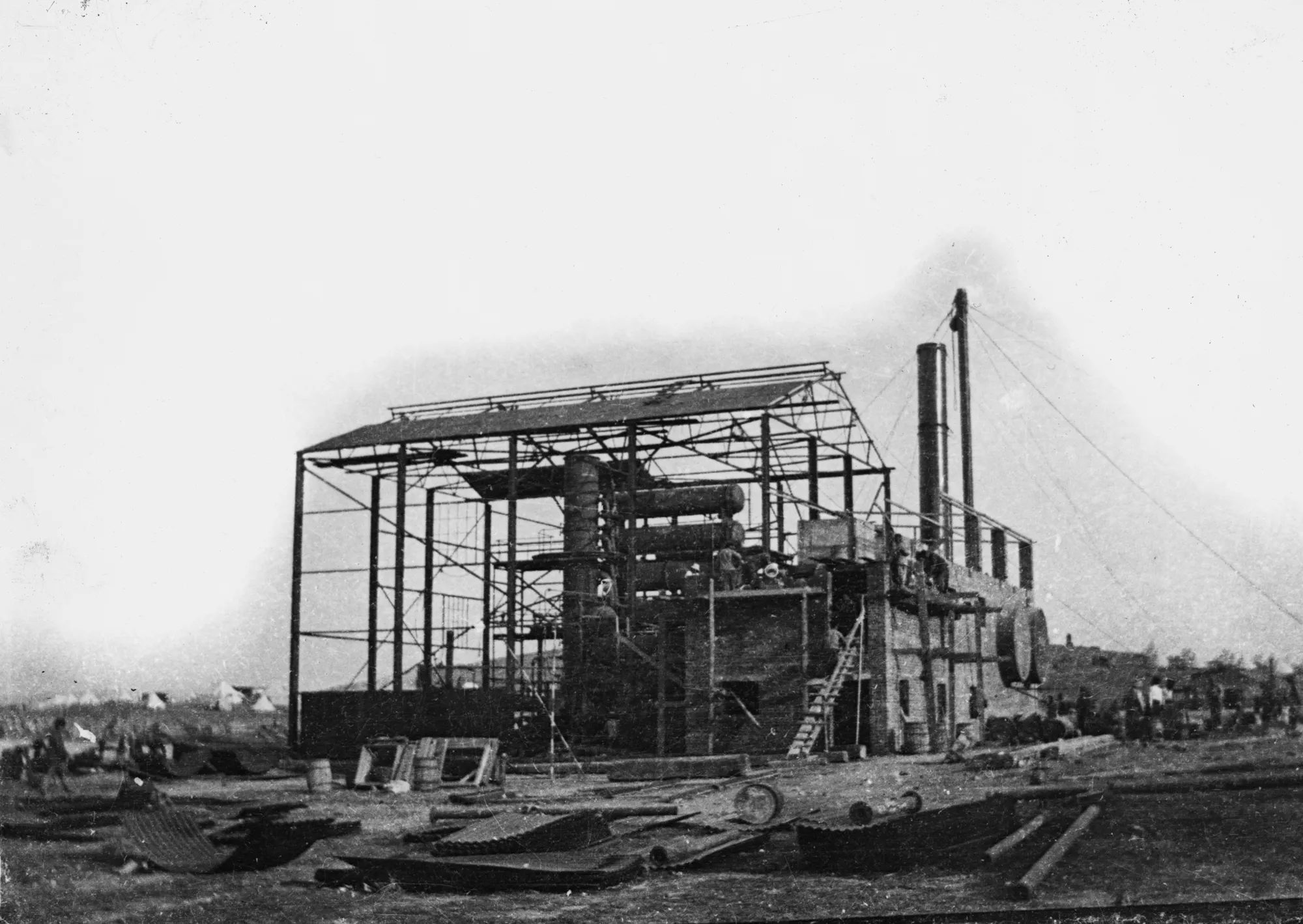
In July, construction began on a large condensation (desalination) plant in West Mudros. It would help ease the chronic shortage of fresh water. The British Navy delivered it in parts and, within weeks, a group of skilled British recruits began erecting it.
Comprising a main plant, water tower and many metres of pipes, it was imposing. Corporal Harry Gissing called it a ‘huge water still’, which took ‘several months to build’. The tower stood 20 metres high and was vital for water distribution.
It did not, however, completely solve the problem.
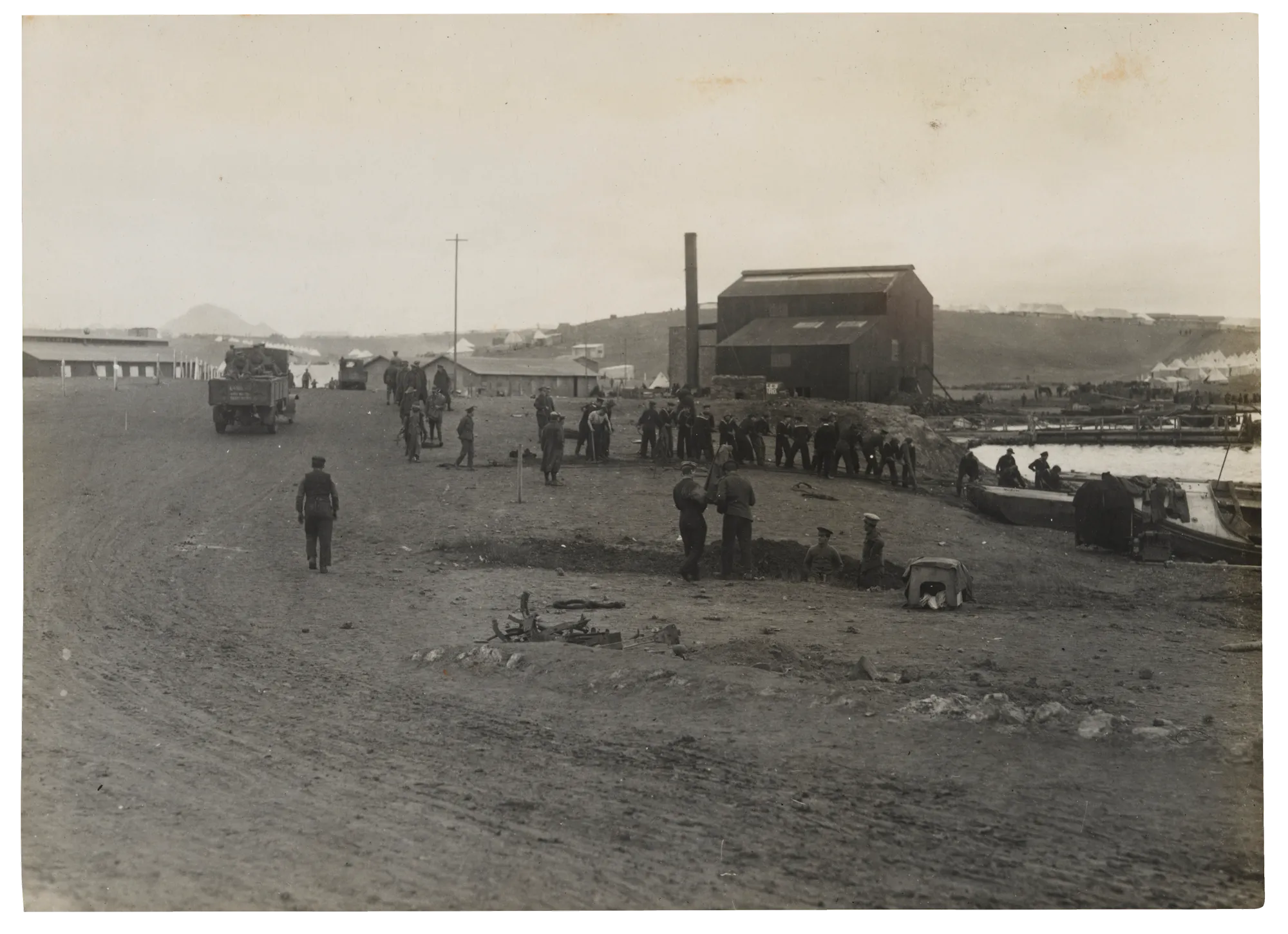
The Red Cross
In early July, a British Red Cross store opened near the Australian Pier in East Mudros. It provided supplies to wounded soldiers.
‘You have no idea what a comfort it is for them to have the useful and lovely things you are making ... The poor patients come in tired and ready to sleep for a week, and to be able to get into a nice clean bed with a nice suit of pyjamas is a luxury no one can imagine who has not been here.’
– Lieutenant Colonel W.H. Bryant, Mercury (Hobart), 24 Sept. 1915
No. 3 Australian General Hospital established
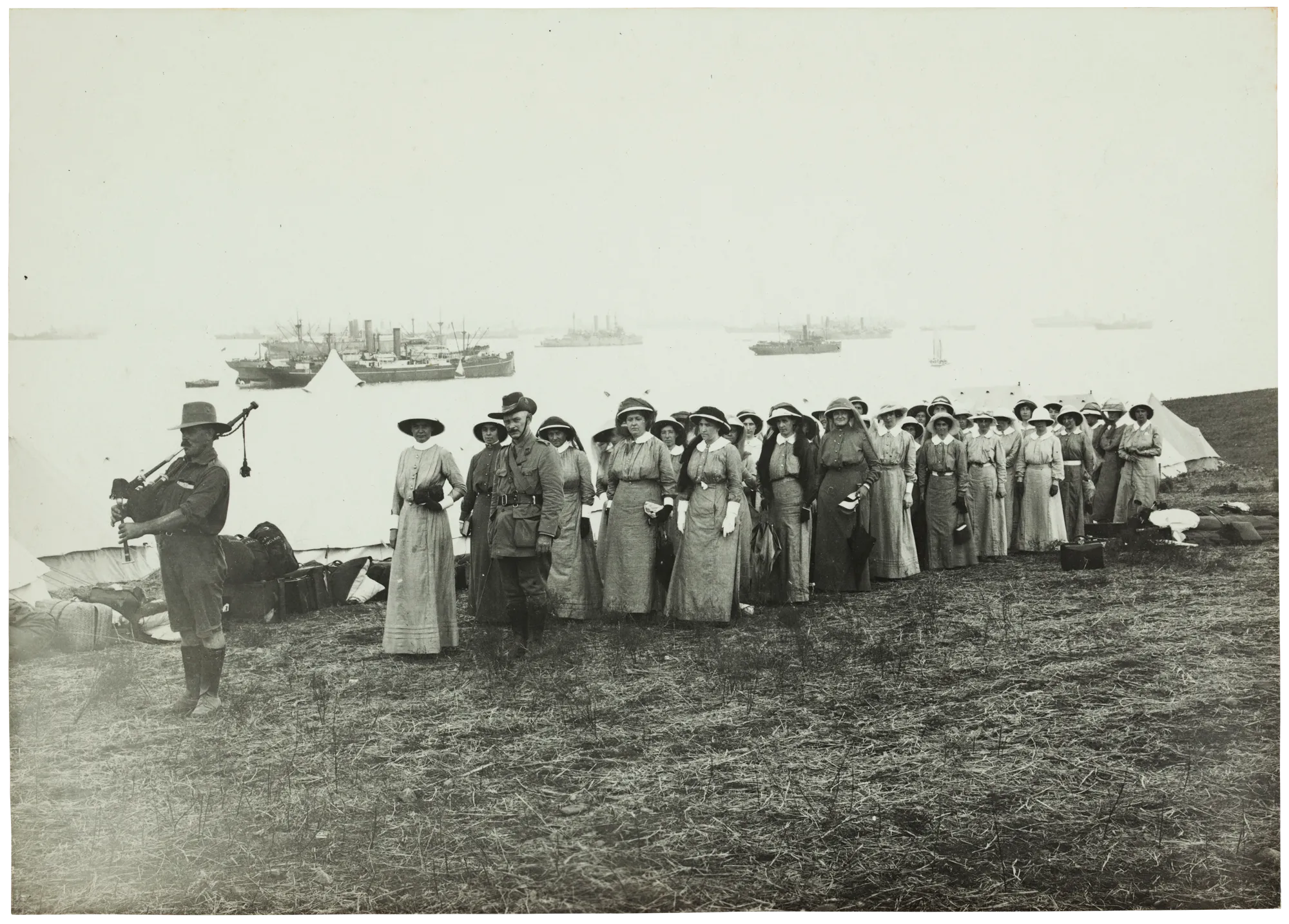
On 5 August, 3AGH arrived at Turks Head (now Pounda) Peninsula. Three days later, Scotsman Warrant Officer Archibald Monk led the nurses ashore to the strains of his bagpipes.
The hospital’s vital medical equipment and supplies were delayed by several weeks. Staff treated the wounded on open, stony ground, using whatever was at hand. This included nurses’ own kits, and bandages made from their petticoats.
Matron Grace Wilson soon created order from chaos. The 1,000-bed hospital was serviced by around 100 nurses, 25 medical officers and 230 other staff of differing ranks.
‘It is awful to see the way they are shattered and to have nothing to give them ... All we can do is feed them and dress their wounds. They beg to be washed, but we have no water. It is awful to just leave them in their dirty blood-stained clothes … A good many died; they were beyond hope when they arrived’.
– Matron Grace Wilson, quoted in Lemnos and Gallipoli Revealed, p. 173
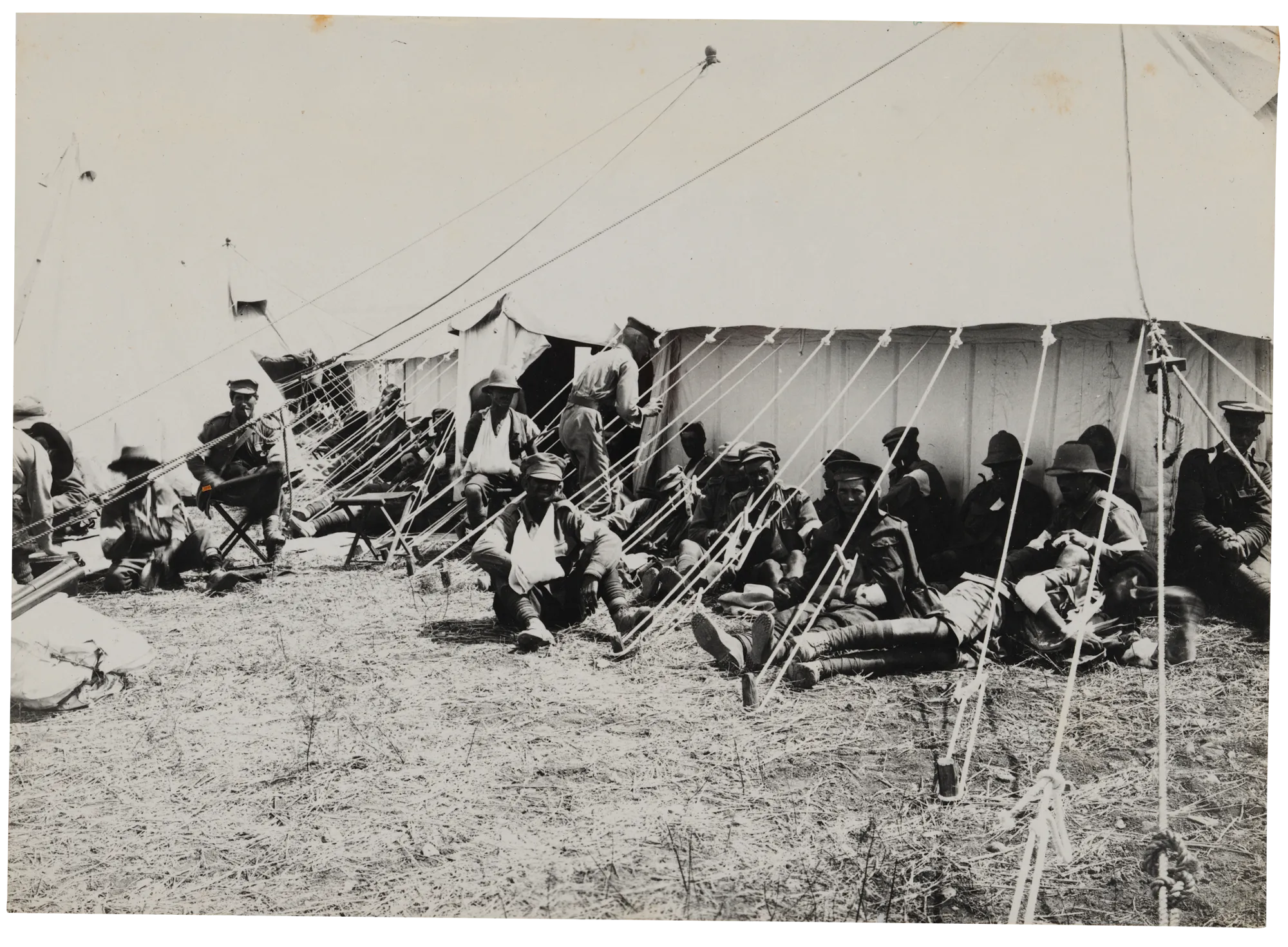
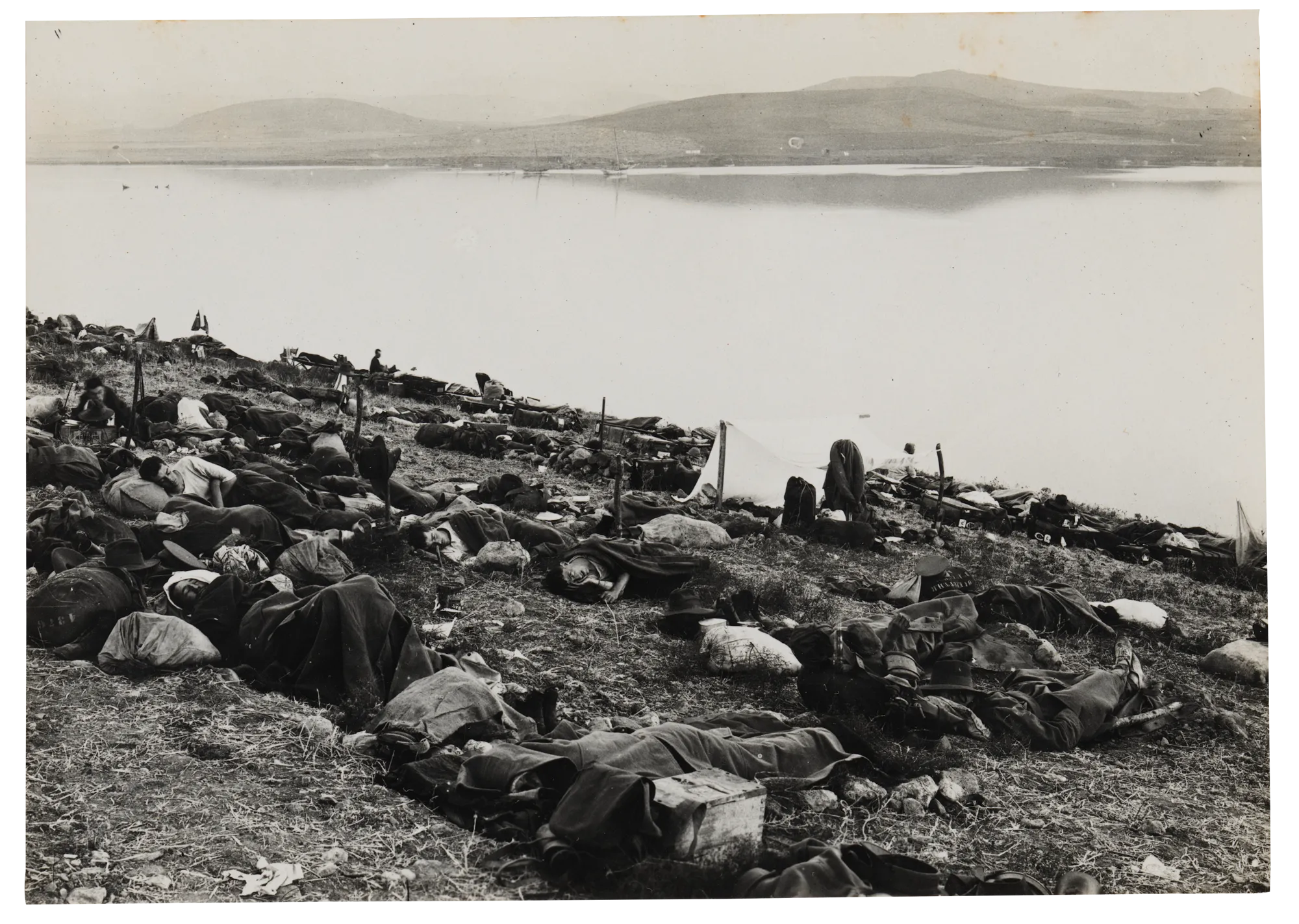
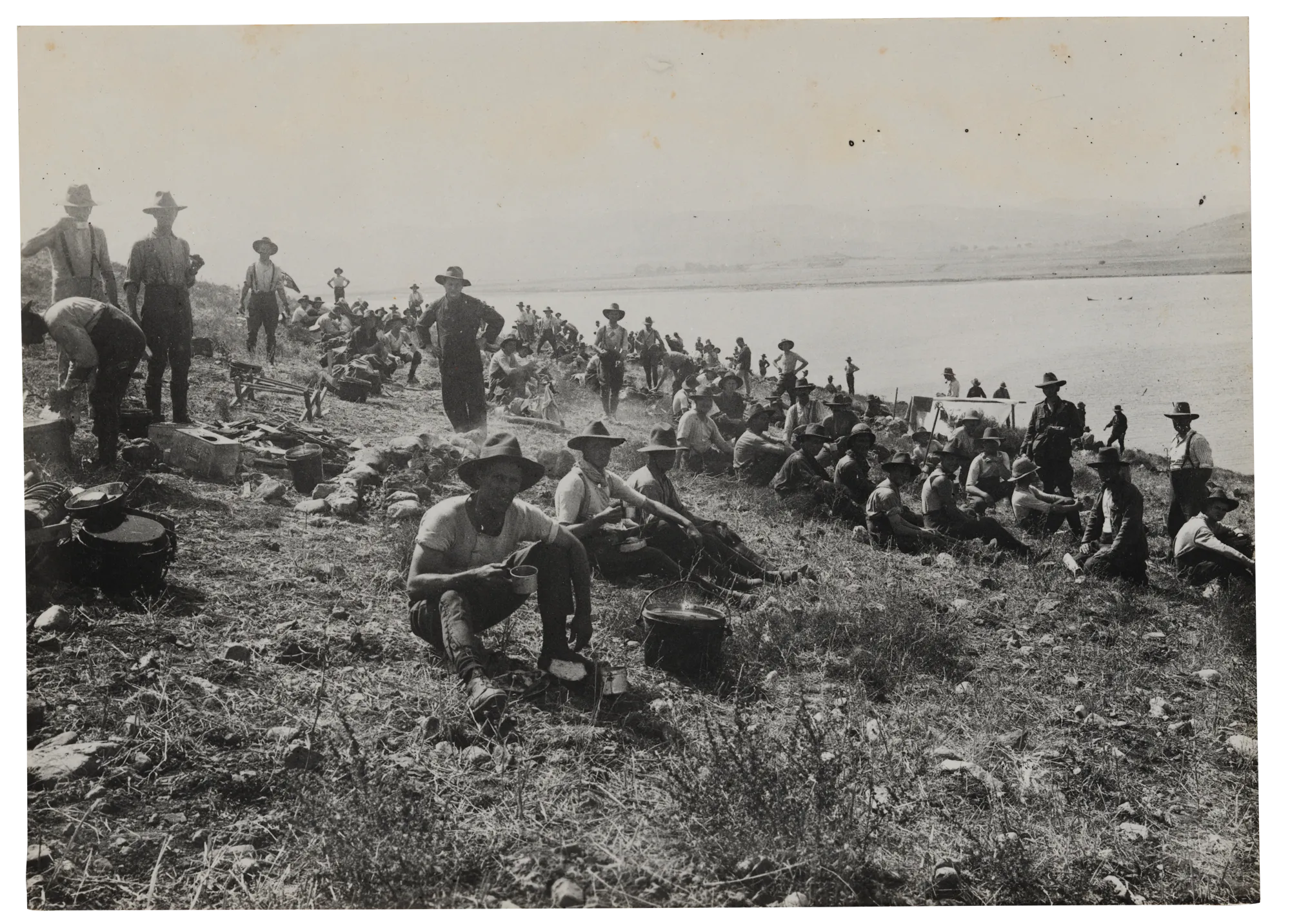
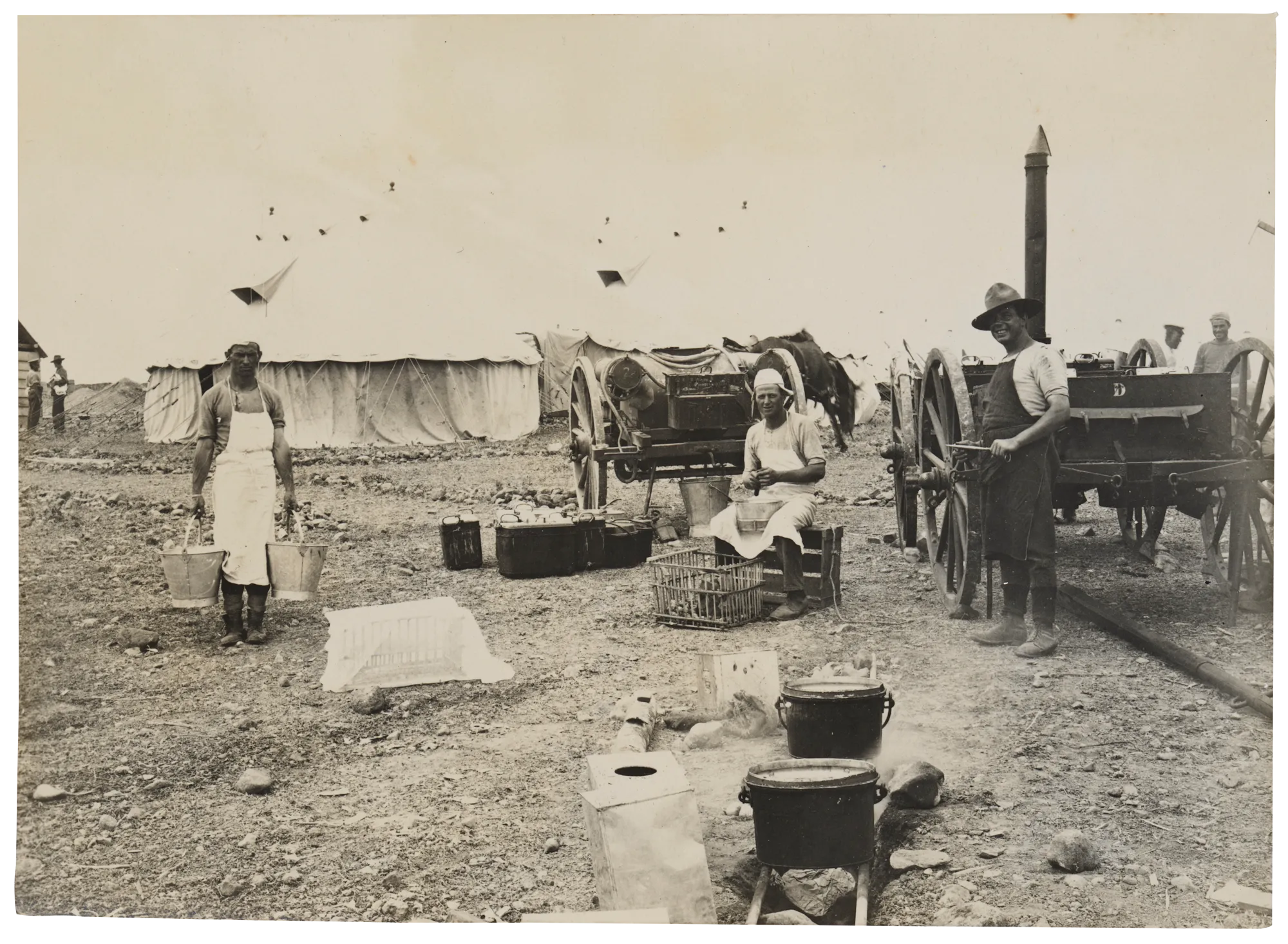
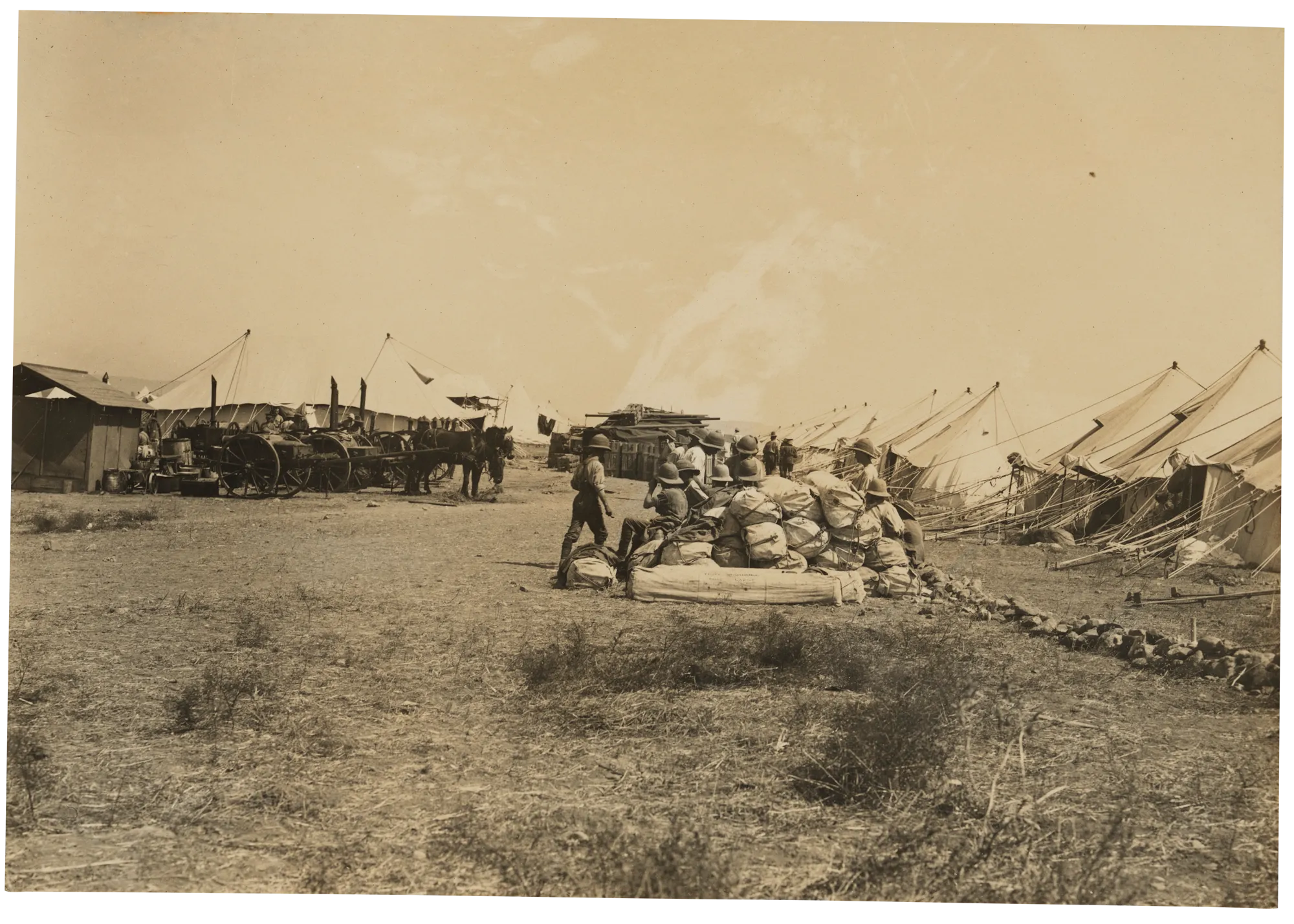
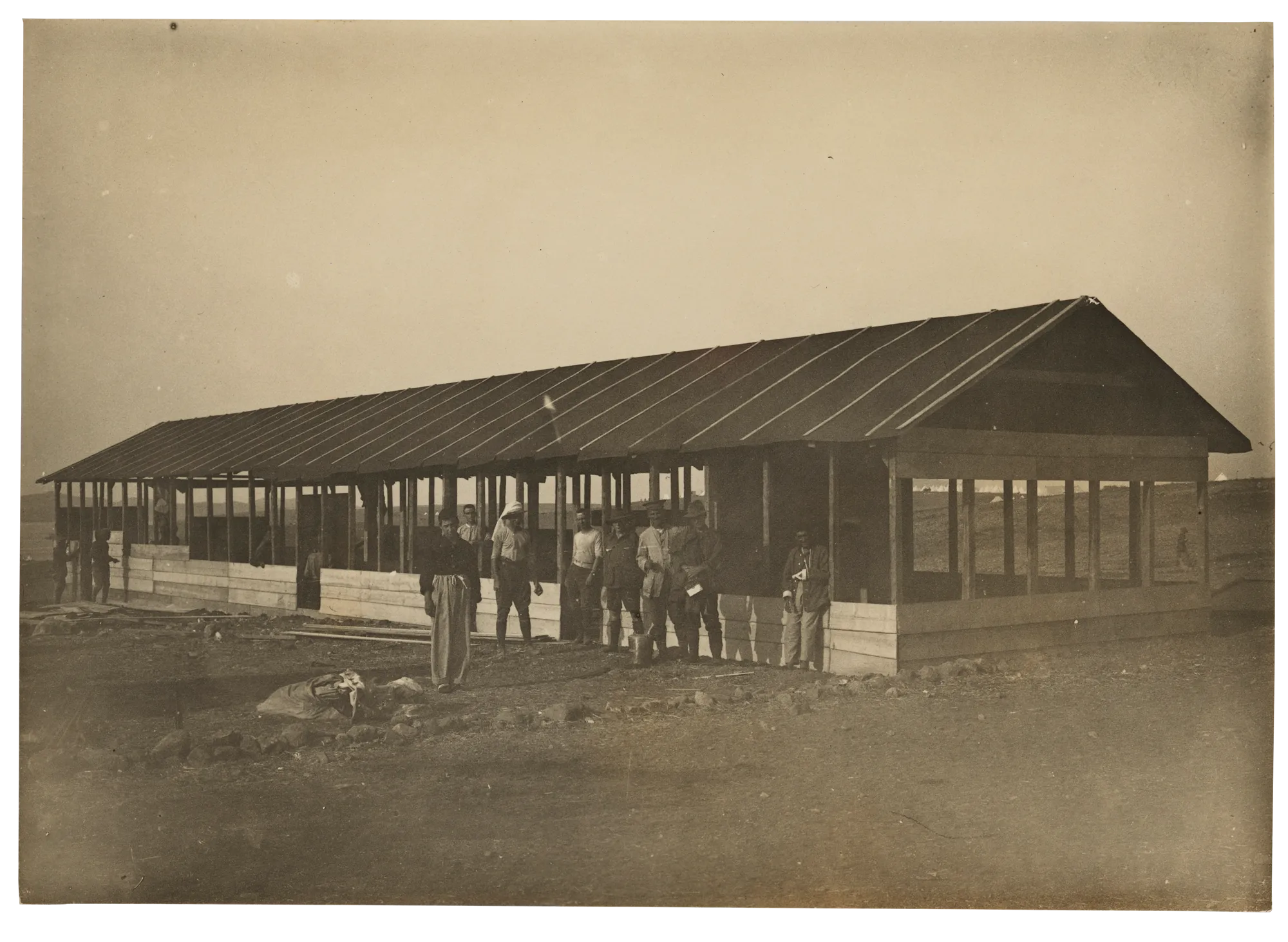
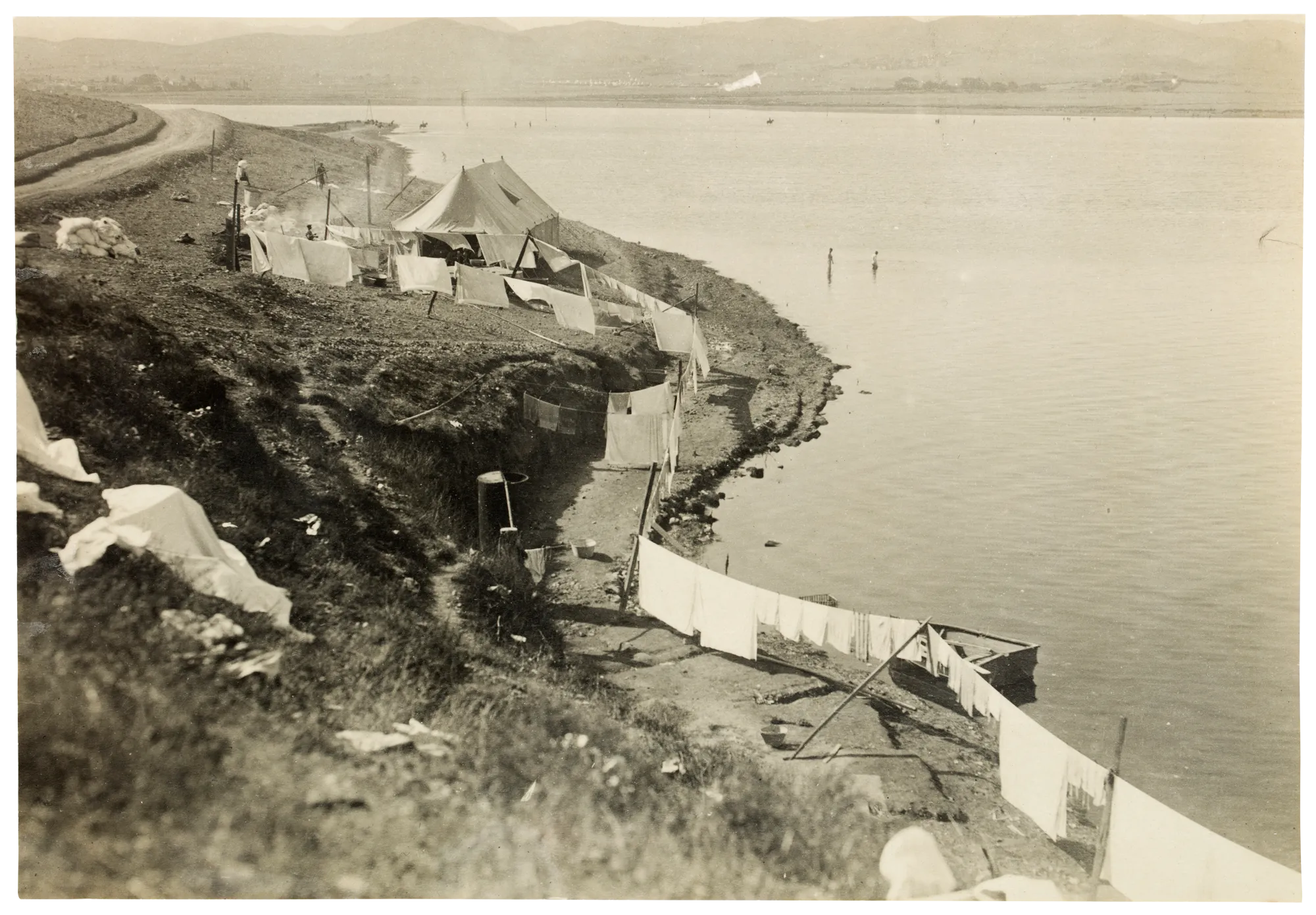
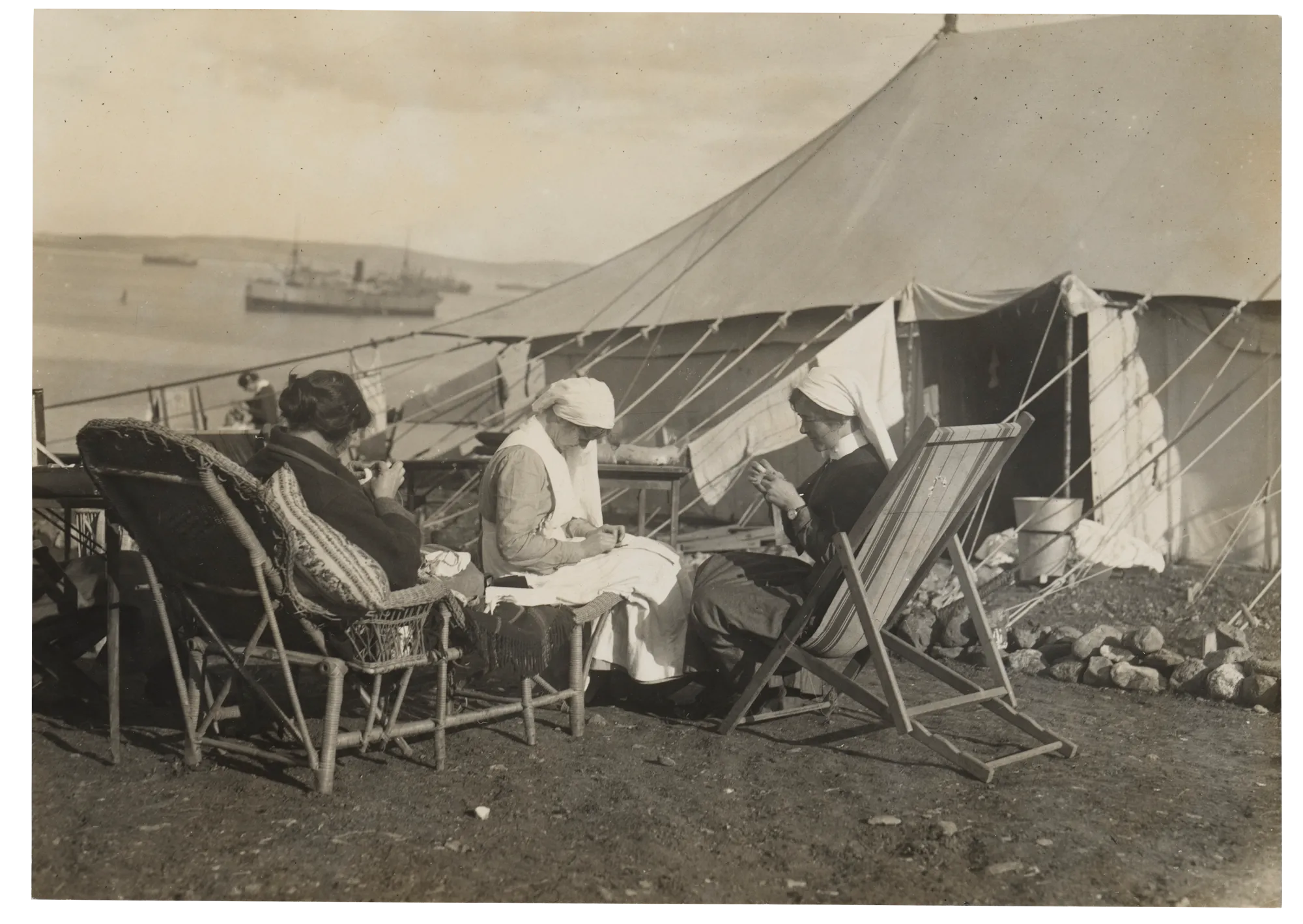
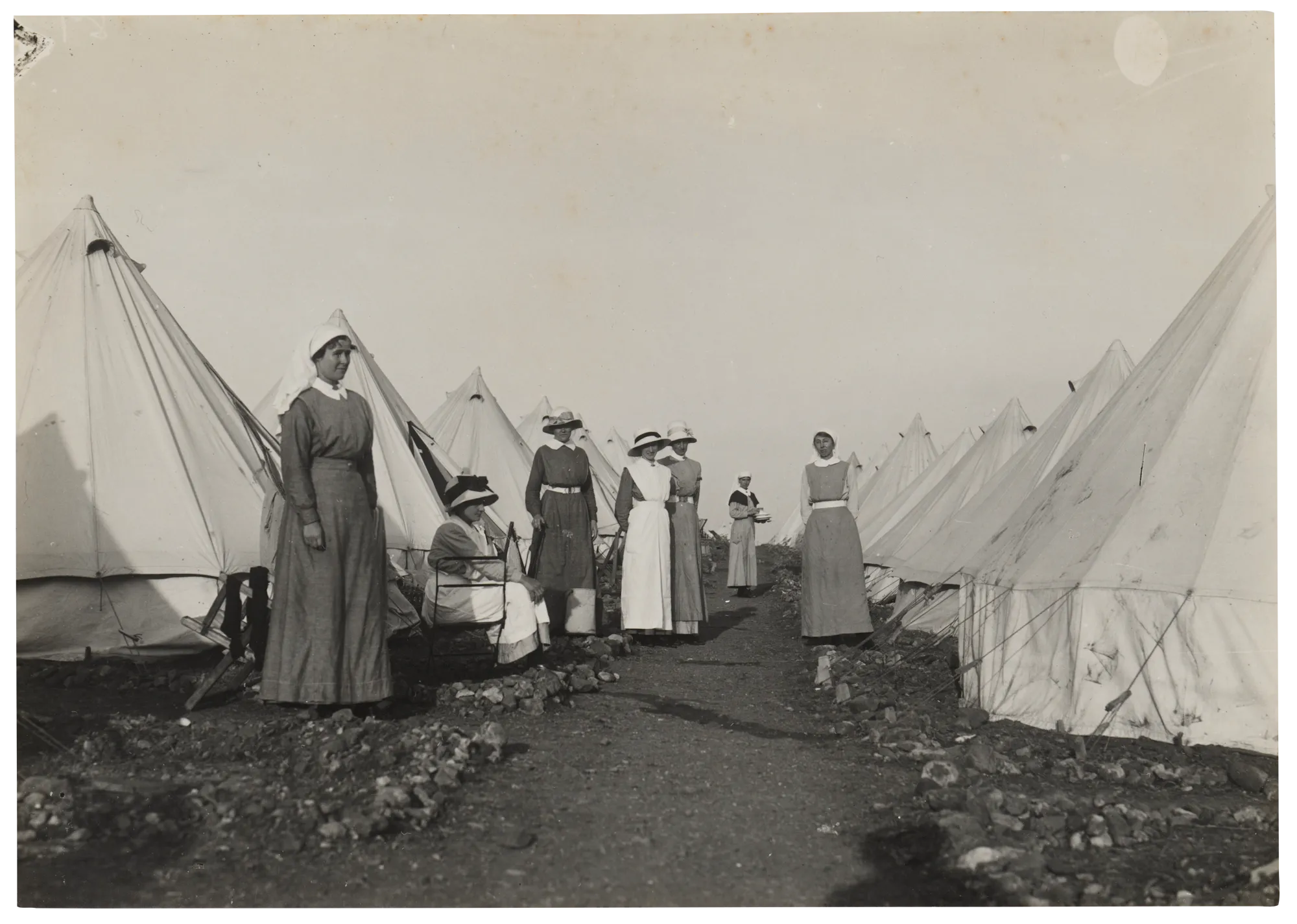

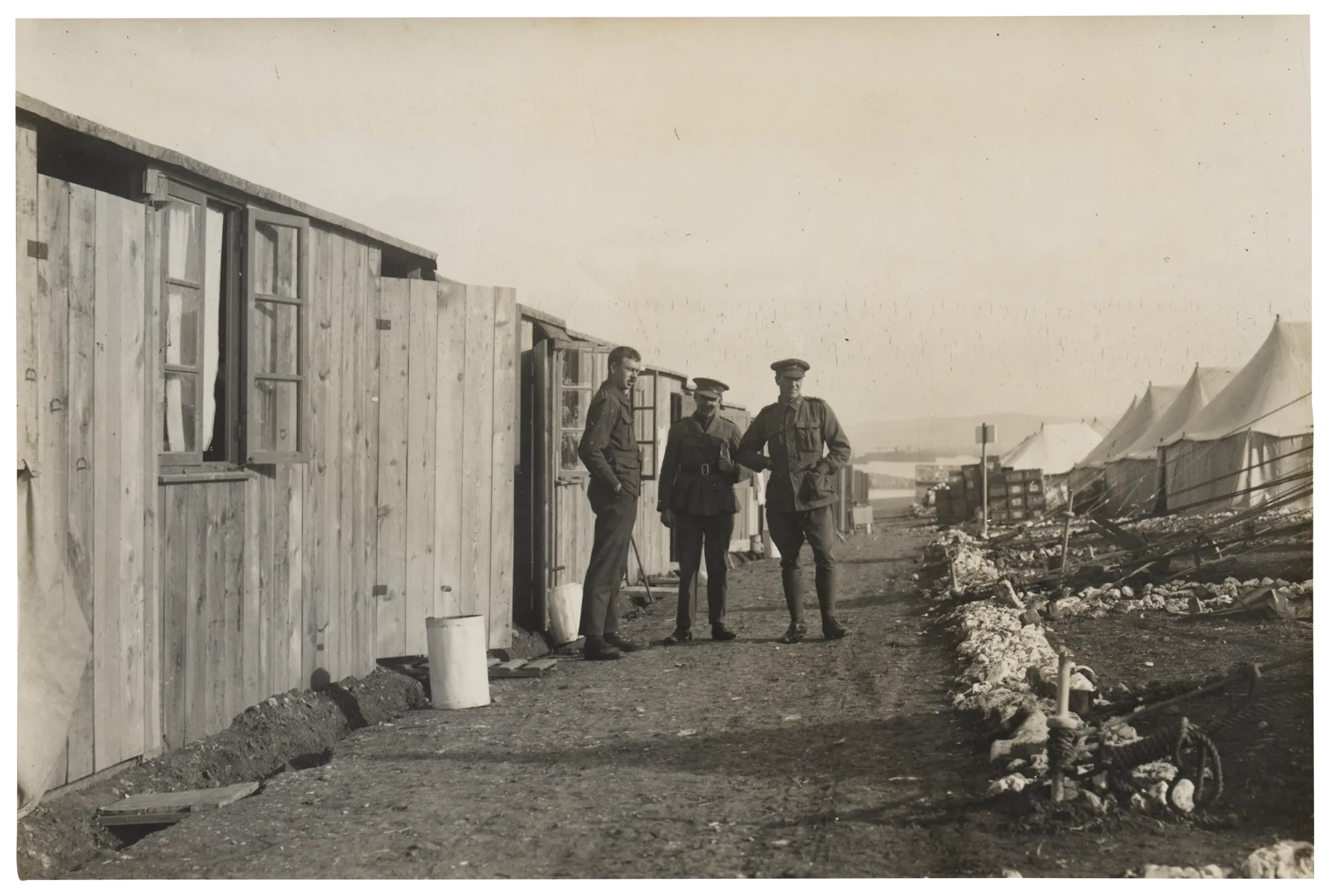
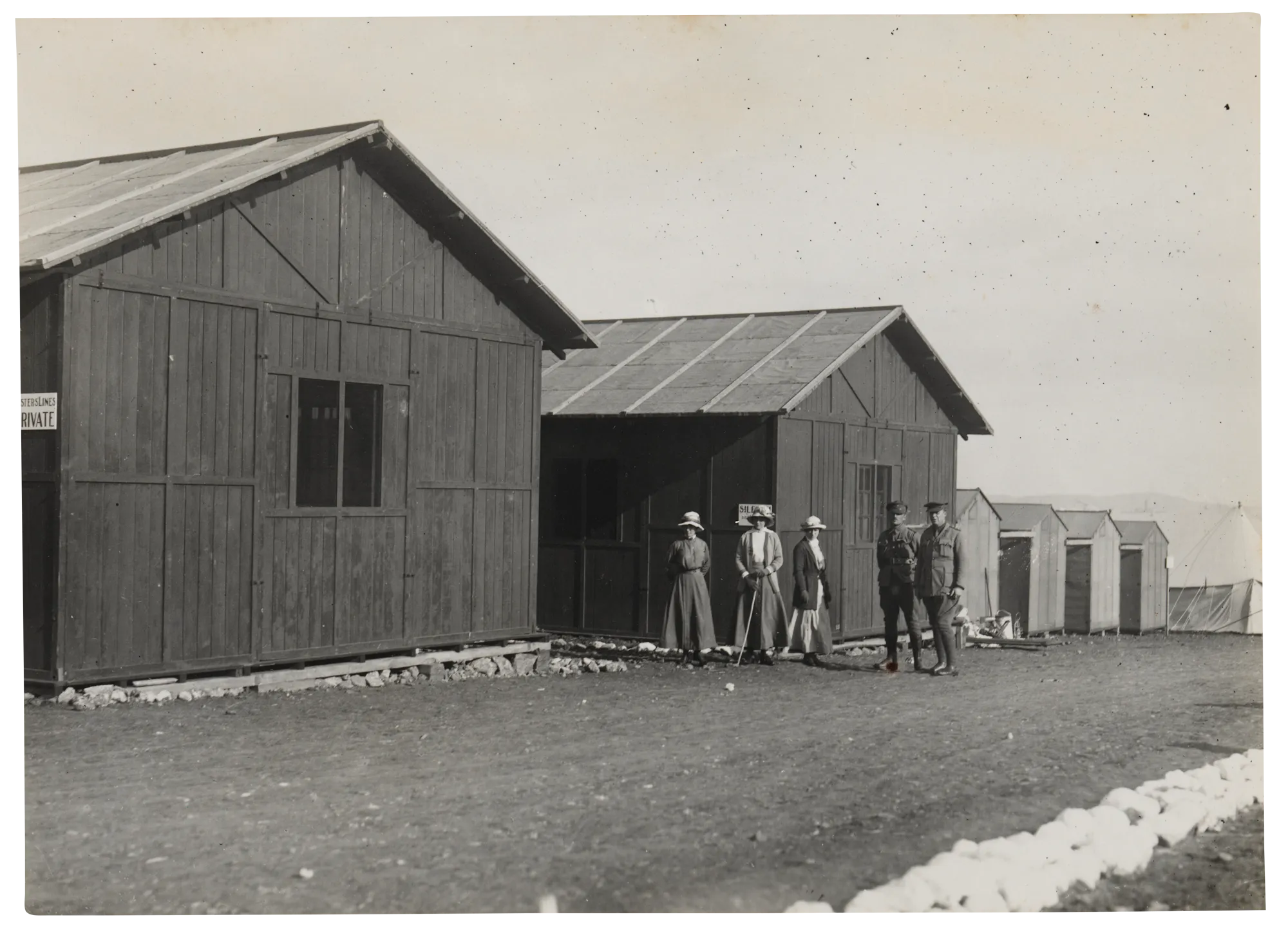
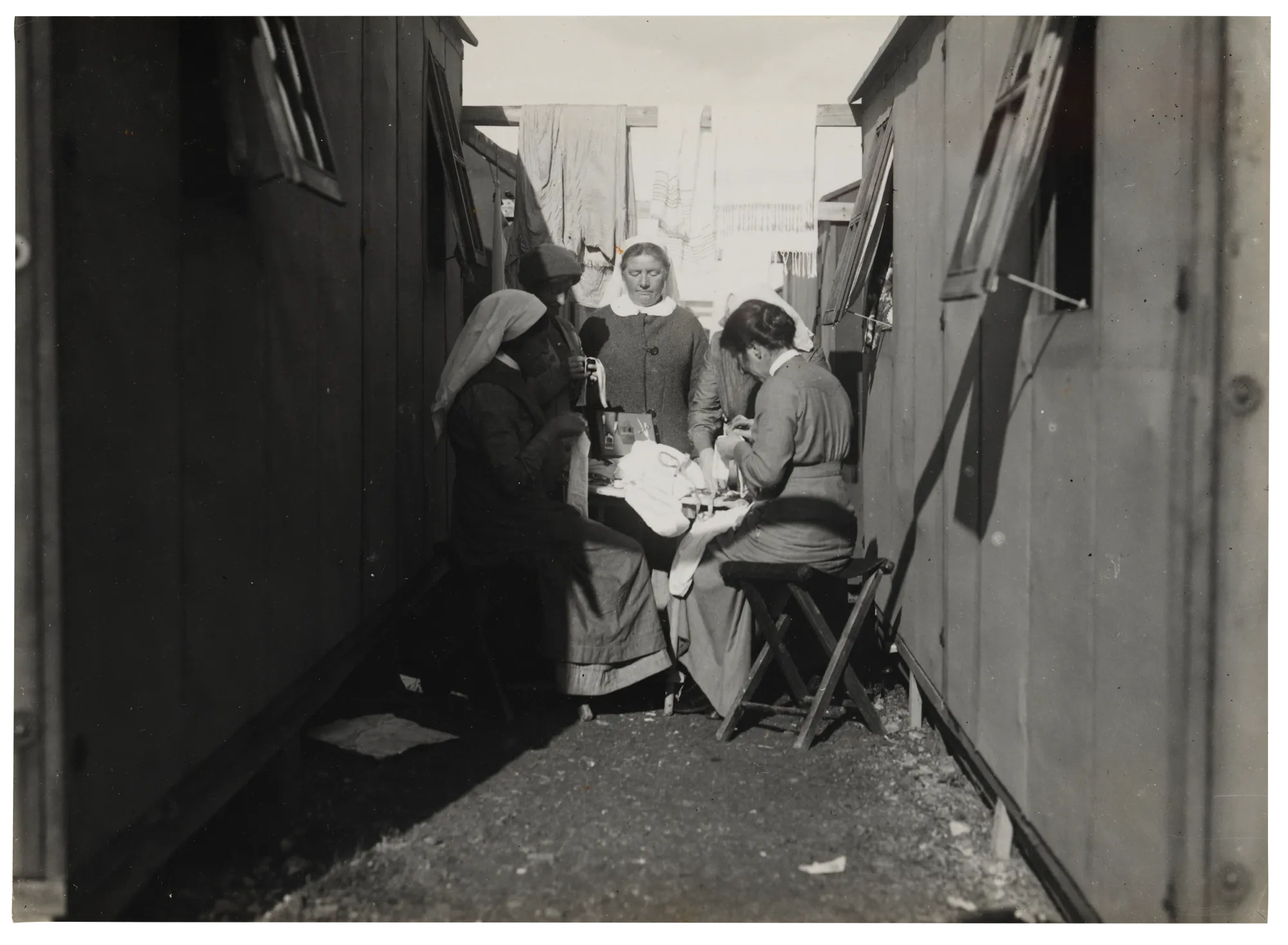
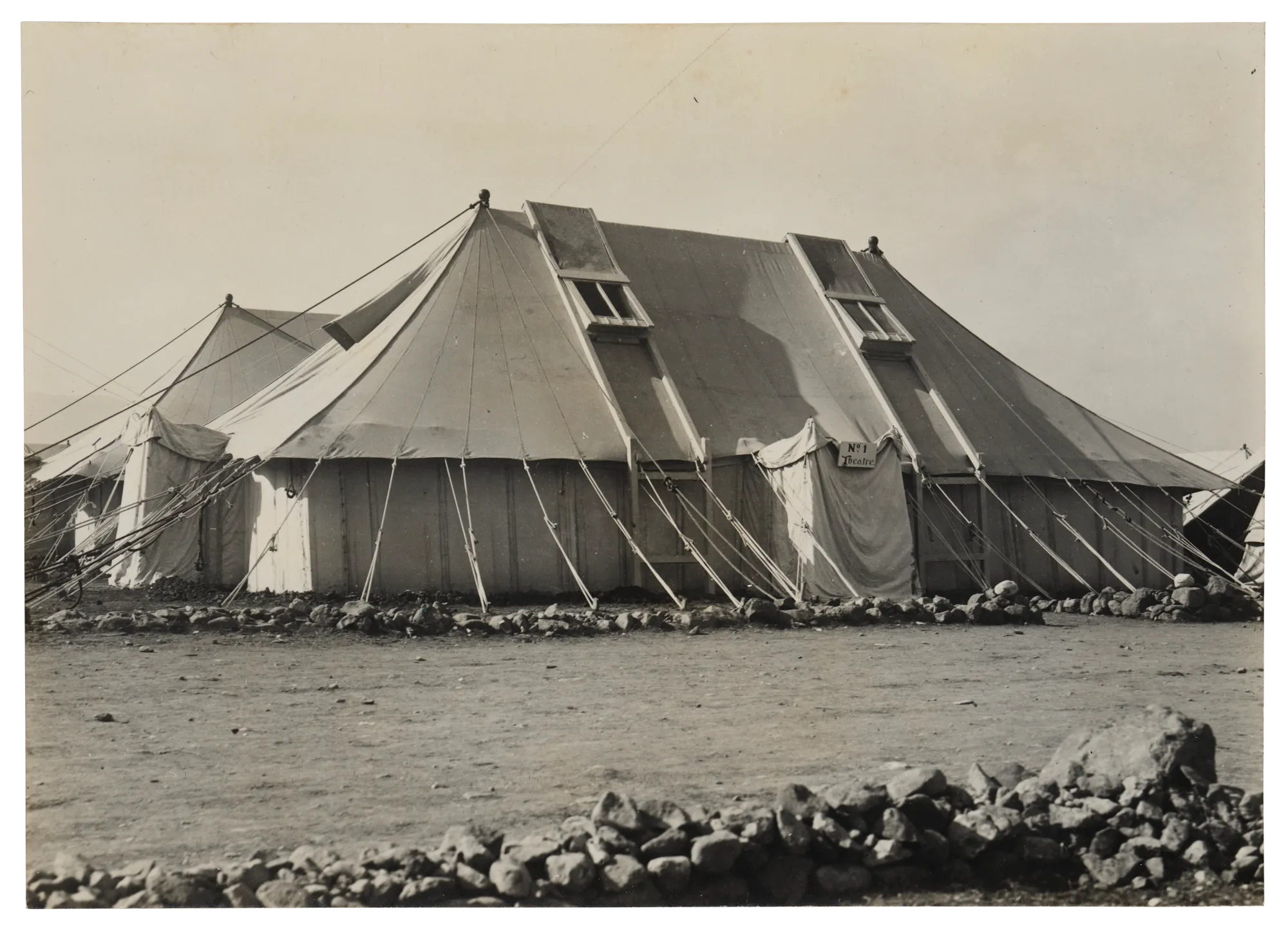
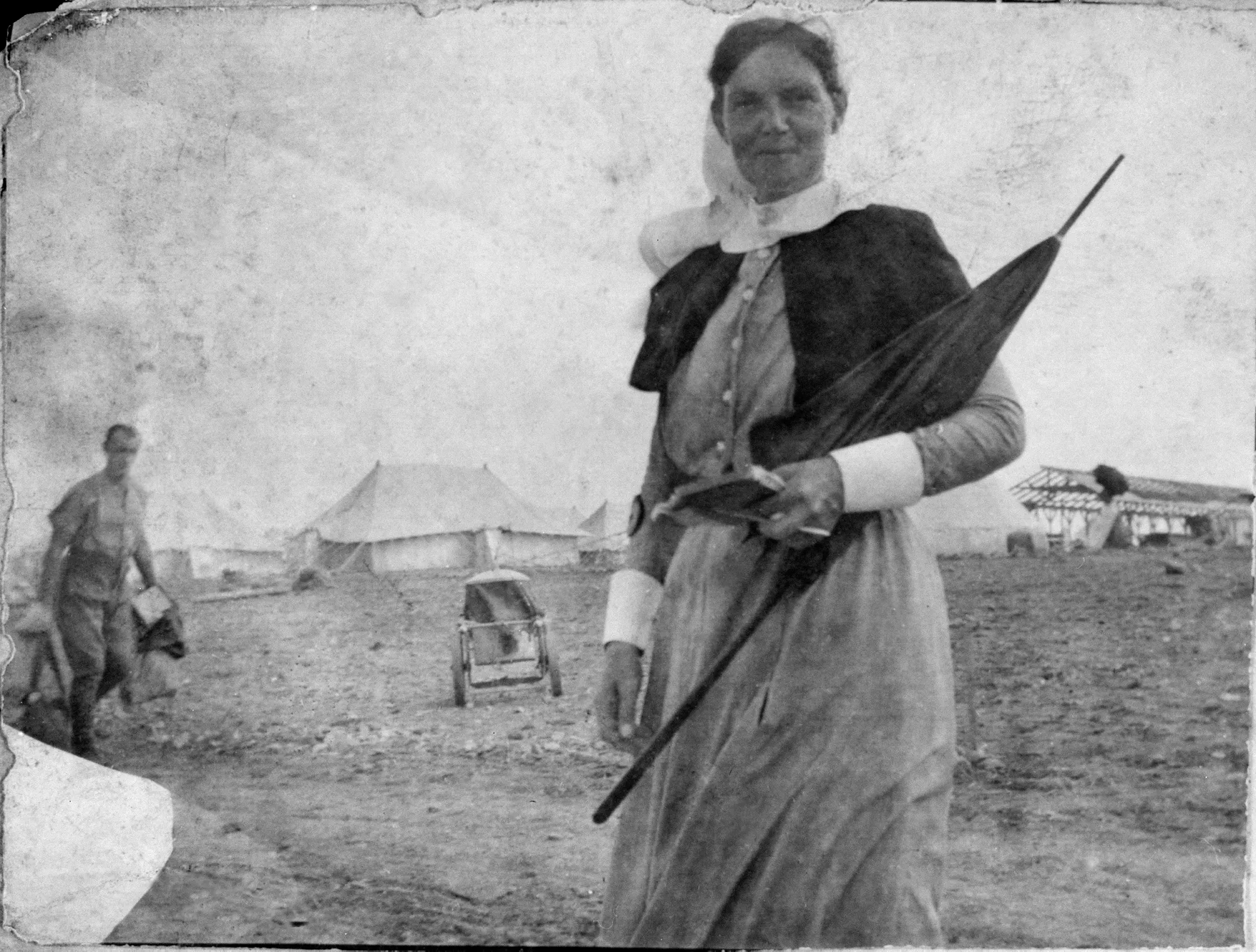
The hospital had surgical, medical, ear, throat and infectious wards, along with X-ray, dental and pathology facilities. Its mortality rate was 2 per cent, remarkably low given its limited equipment and supplies.

‘The theatre was going day and night, and in about six weeks time, we were fully fitted up.’
– Staff Nurse Charlotte Donnelly, quoted in Veiled Lives, p. 171
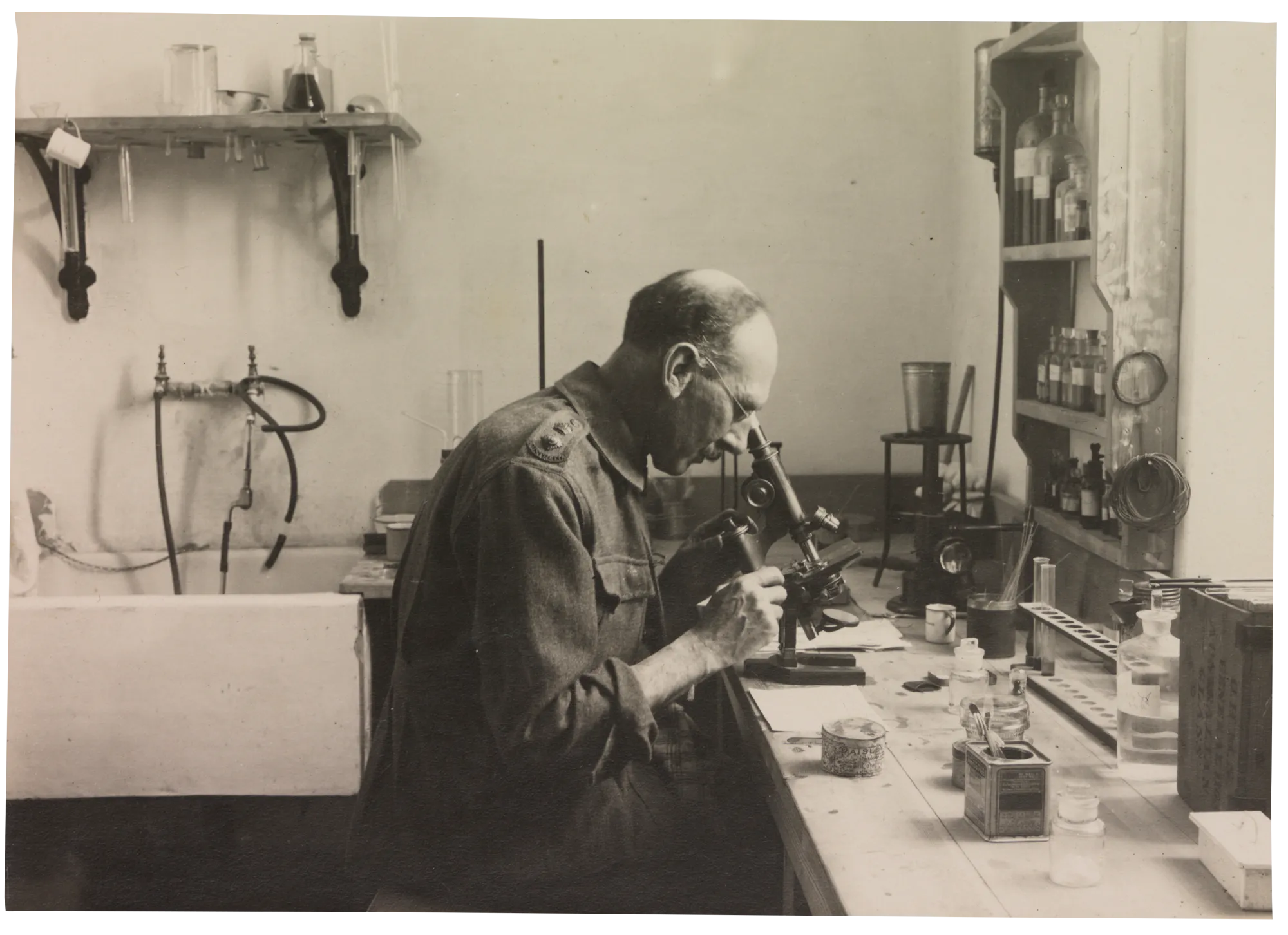
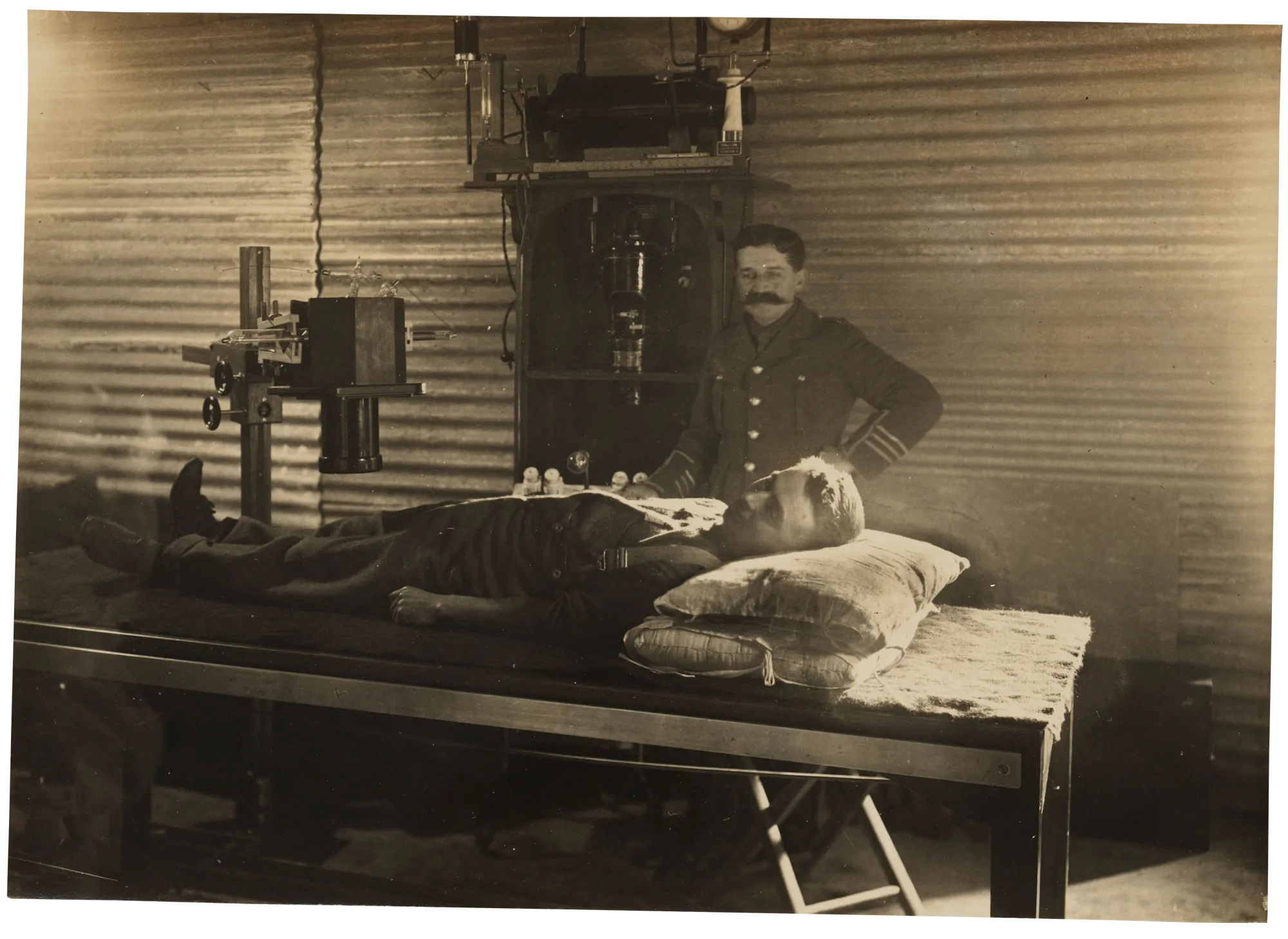
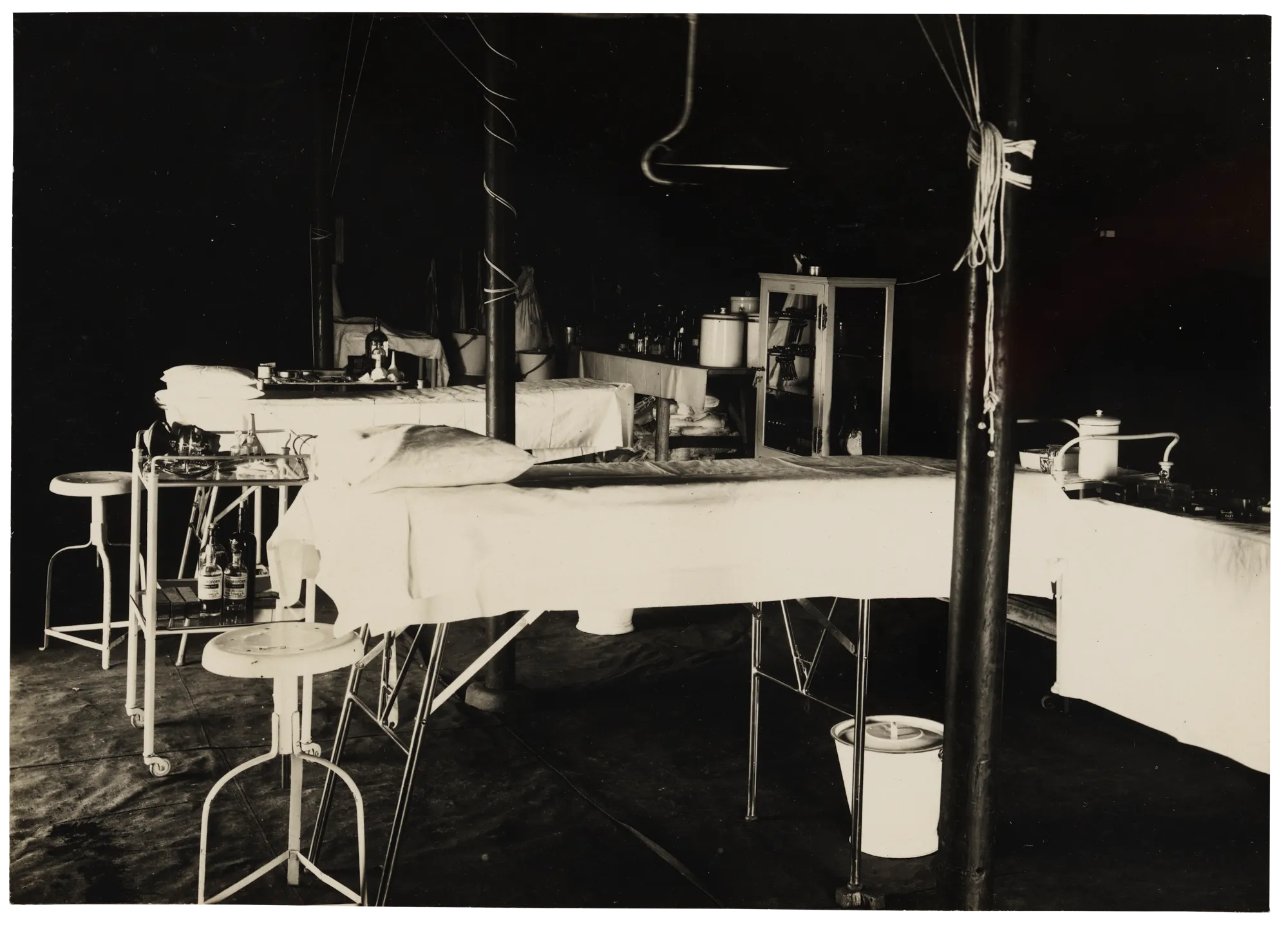
Mudros ferry service
The growth of West Mudros led to a regular ferry service. It saved personnel from the long walk around the bay between East and West Mudros. Beginning during August, the service appears to have been well used. It likely operated from North Pier on Turks Head Peninsula.
Portianos Military Cemetery established
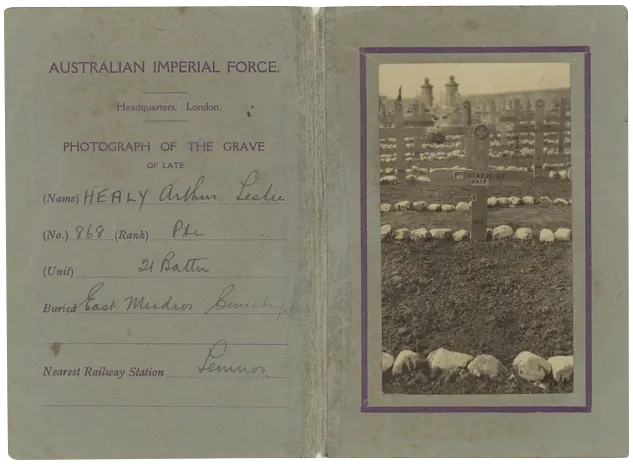
The Portianos Military Cemetery operated from August 1915. Located outside Portianos village, it was established near the civilian cemetery.
It comprises 347 Commonwealth graves. These include the graves of 50 Australians, 29 New Zealanders and 262 Britons. Three Egyptian Labour Corps men, one Turkish officer and two Canadian nurses are also buried here. When the Old Square Tower Cemetery closed in August 1915, the bodies of five Britons and four Australians were re-interred here.
More than half of the Australians in this cemetery lost their lives in the two months from the beginning of the August offensive on Gallipoli.
AUTUMN 1915
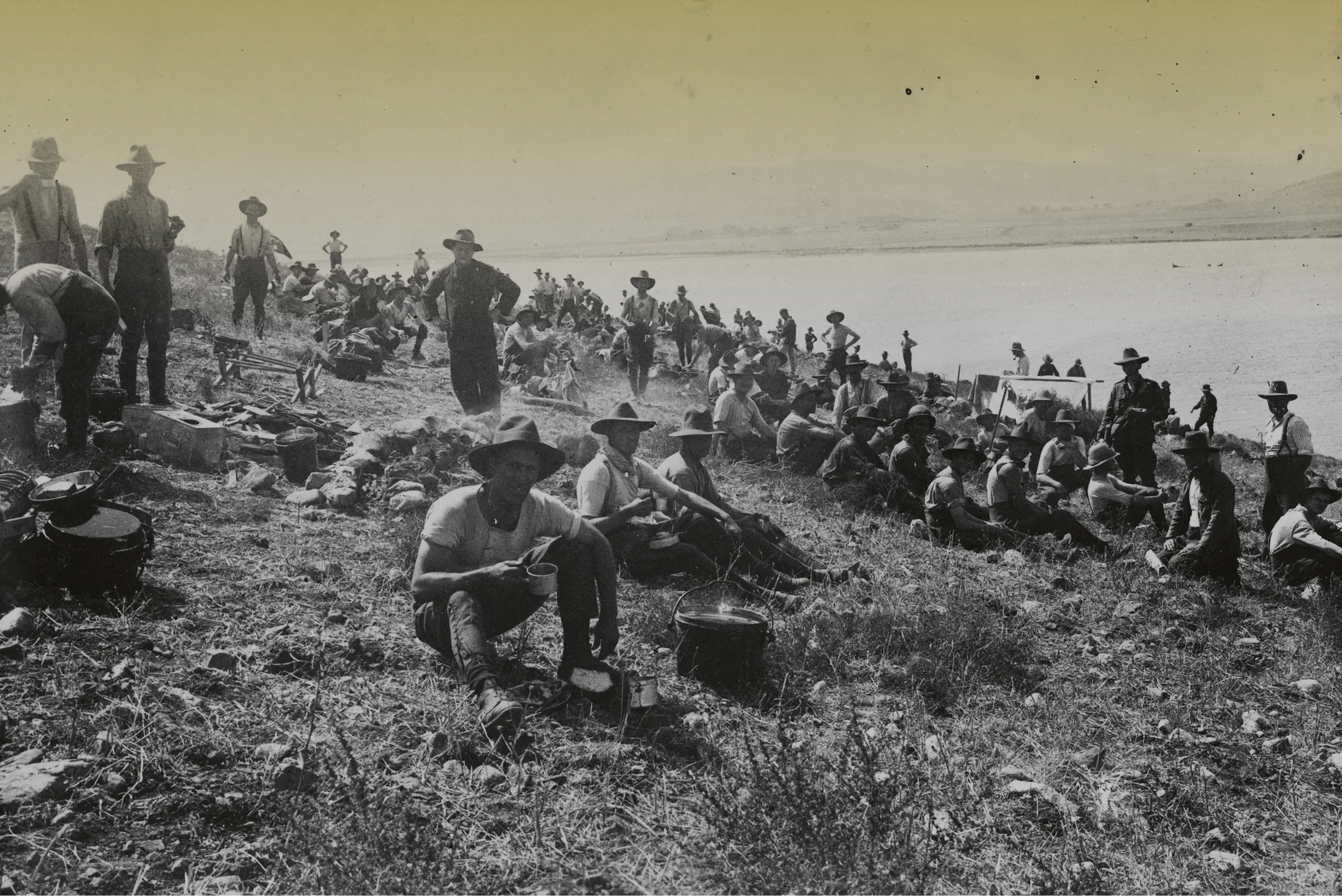
COME AUTUMN and THE INTENSE HEAT AND MADDENING WINDS BEGAN TO ABATE.
ANZACS ALSO GAINED SOME RELIEF FROM THE HORRORS OF TRENCH WARFARE WHEN SARPI REST CAMP WAS ESTABLISHED IN SEPTEMBER. THE RESTED MEN WOULD RETURN TO GALLIPOLI BUT THE FAILURE OF THE AUGUST OFFENSIVE SHIFTED THE MILITARY OBJECTIVES FOR THE CAMPAIGN.
MEANWHILE, THE DEVELOPMENT OF WEST MUDROS CONTINUED.
Railway established
In September, the British 117th Railway Company Royal Engineers began work on a railway line, pier and depot.
The light railway would greatly increase capacity for moving heavy supplies and equipment at West Mudros. Nine Hawthorn Leslie 0-4-0 PM (Petrol Mechanical) 2’6” gauge locomotives were shipped for hauling goods.
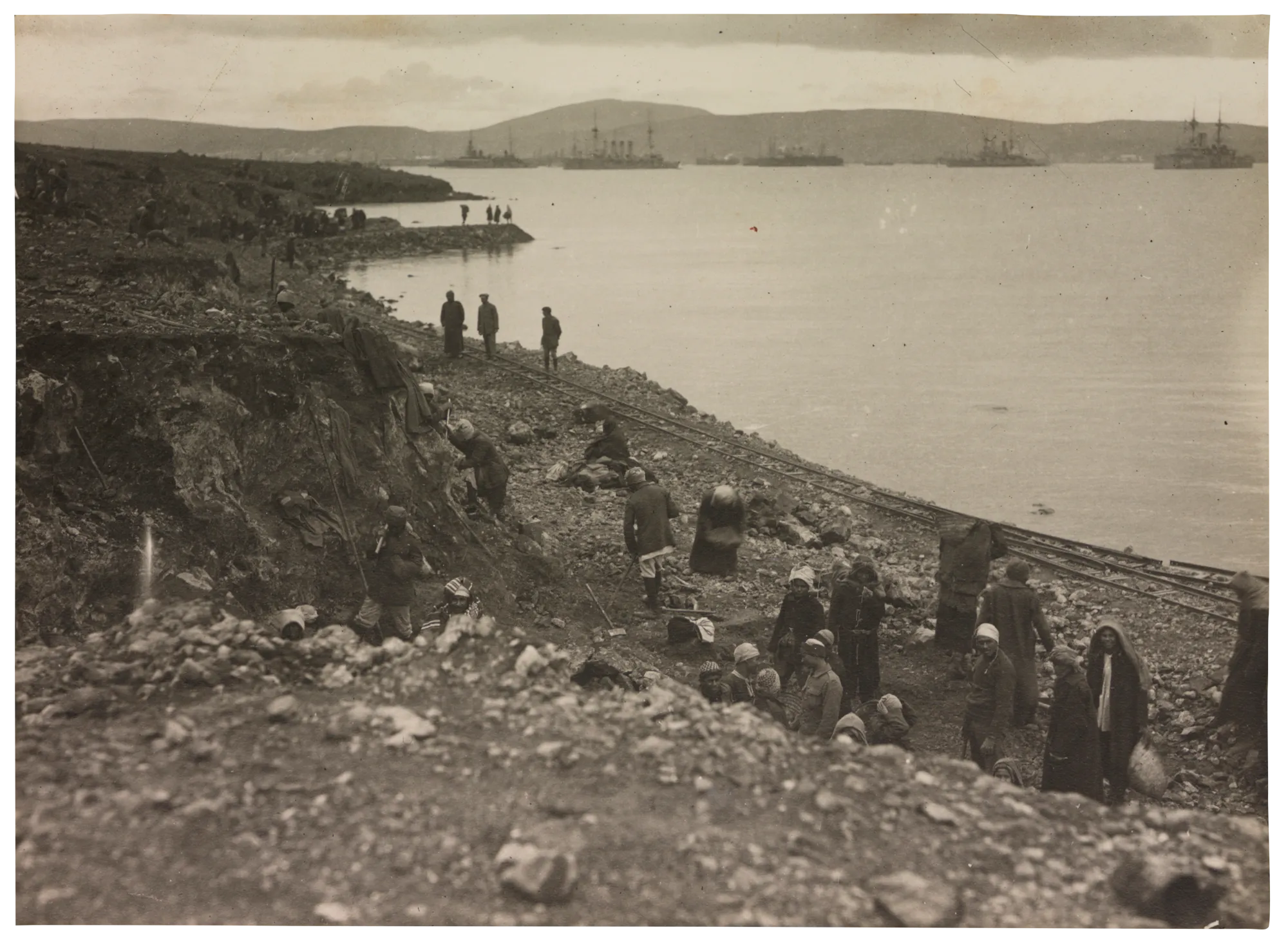
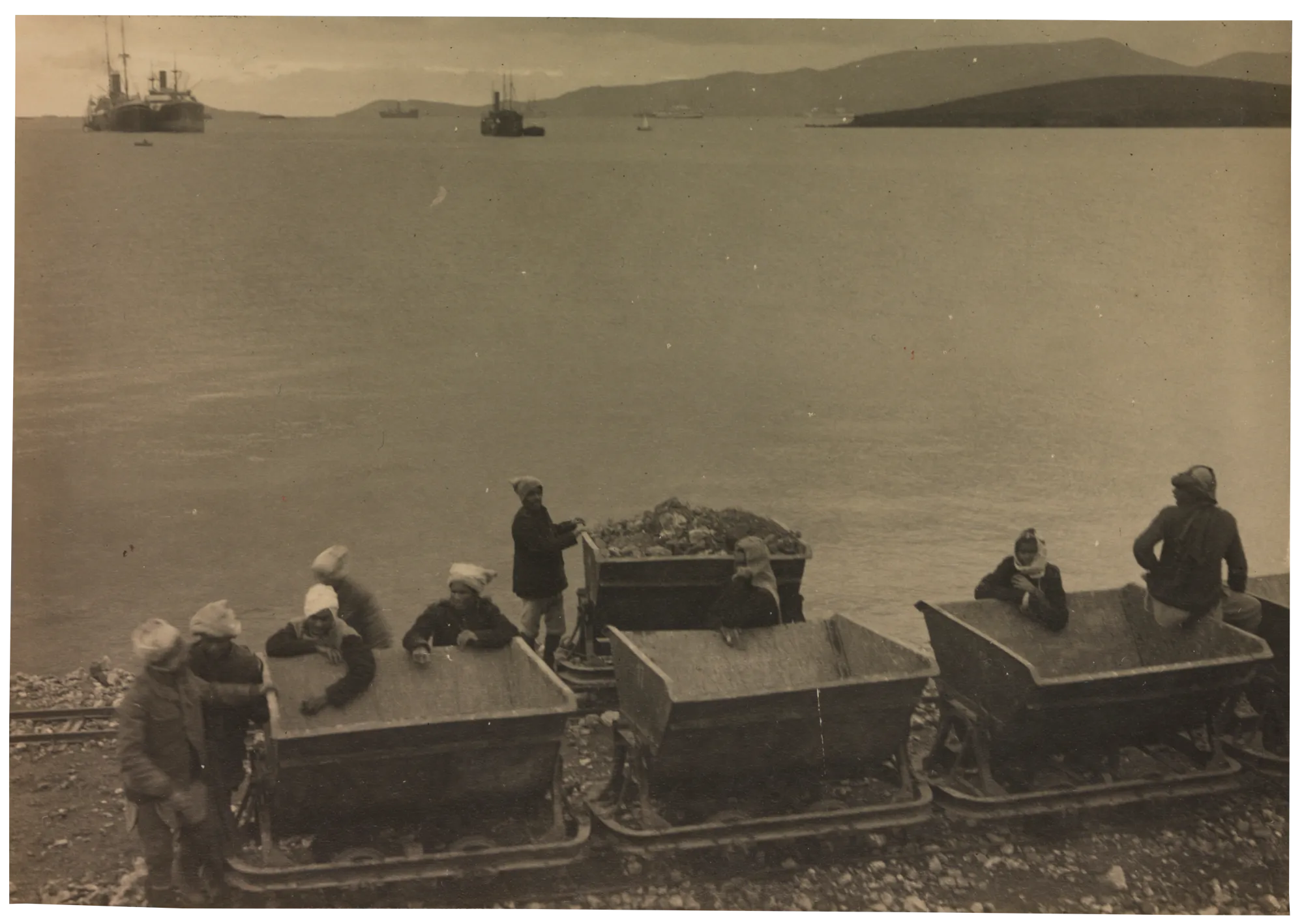
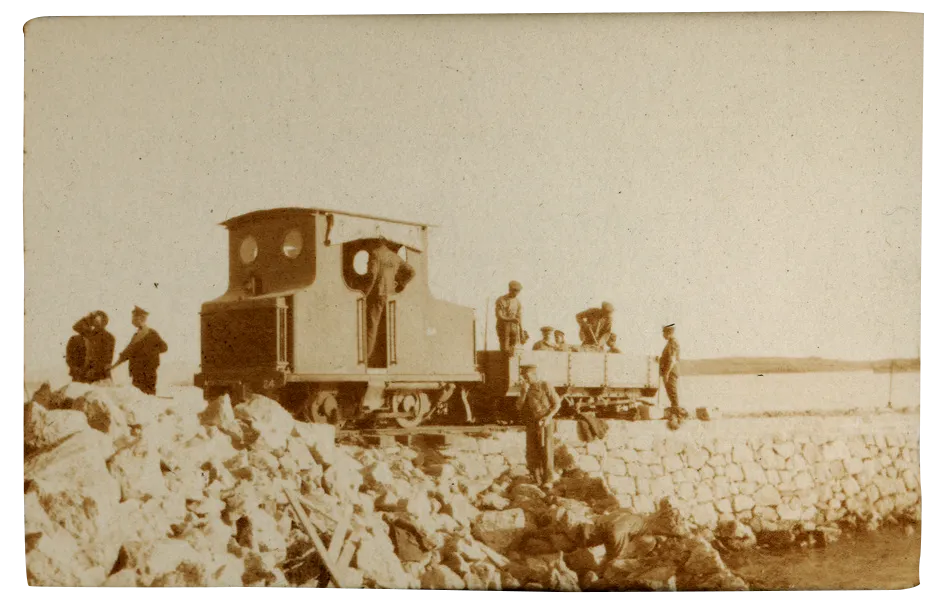
Torpedoing of HMT Southland
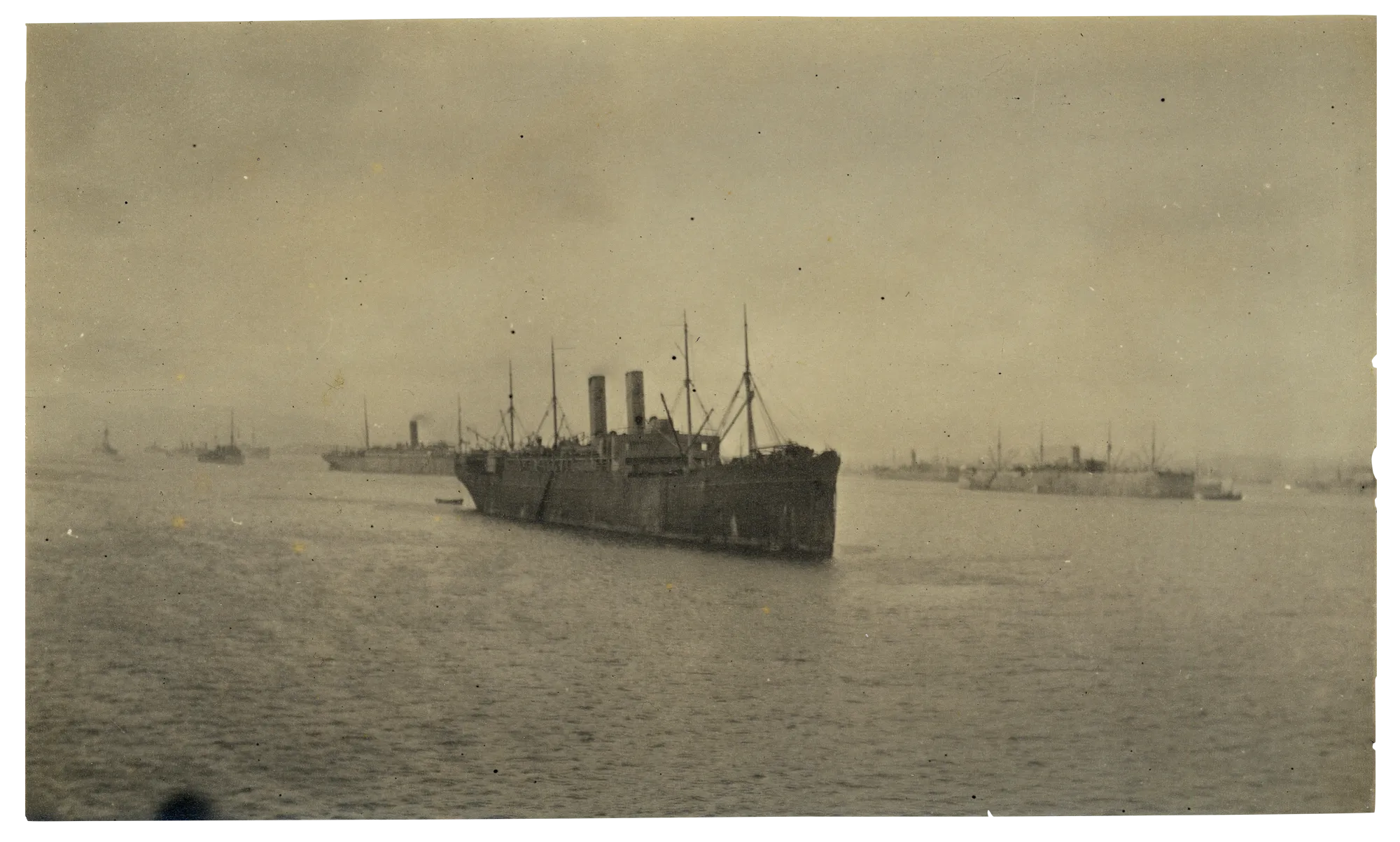
A torpedo hit HMT Southland when it was taking Anzac and British troops to Gallipoli via Lemnos. The torpedo was fired from a German U-boat around 65 kilometres from Lemnos.
Thirty-two Anzacs lost their lives, most through drowning. Some 1,400 individuals survived the attack. Volunteer stokers kept the vessel afloat and it made its way to Mudros Bay that evening.
East Mudros Cemetery is the final resting place of 11 of the Australians who lost their lives on HMT Southland. Presumed dead, the missing were later named on memorials at Gallipoli.
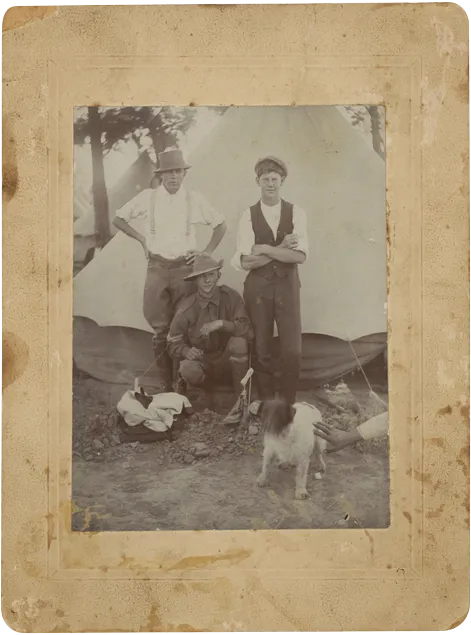
Sarpi Rest Camp established
Sarpi Rest Camp was established on the north-western shore of Mudros Harbour. It was across a shallow inlet from Turks Head Peninsula, close to the pier at which the soldiers came ashore. To reach the camp, the men marched across the peninsula, through the inlet and up the slope.
Sarpi would have been welcome respite from the noise and horror of the frontline. As they regained their strength, the men resumed training and fatigue duties.
Rugby, football, cricket and ambling across the island were part of recuperation. There were also opportunities for socialising. One evening, an Australian brigade held a campfire concert to entertain New Zealand and Canadian comrades. The New Zealanders reciprocated.
In due course, they returned to the frontline.
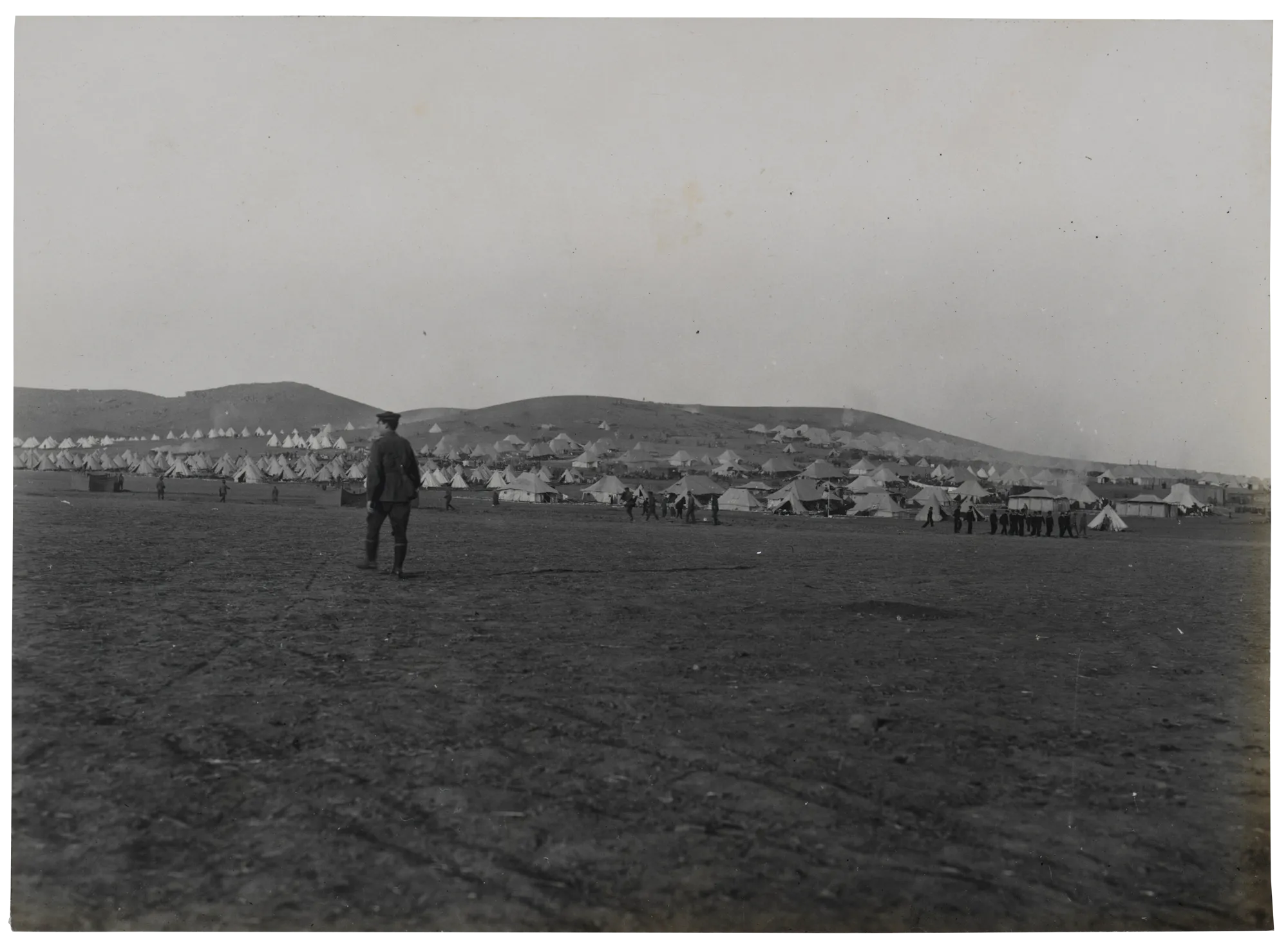
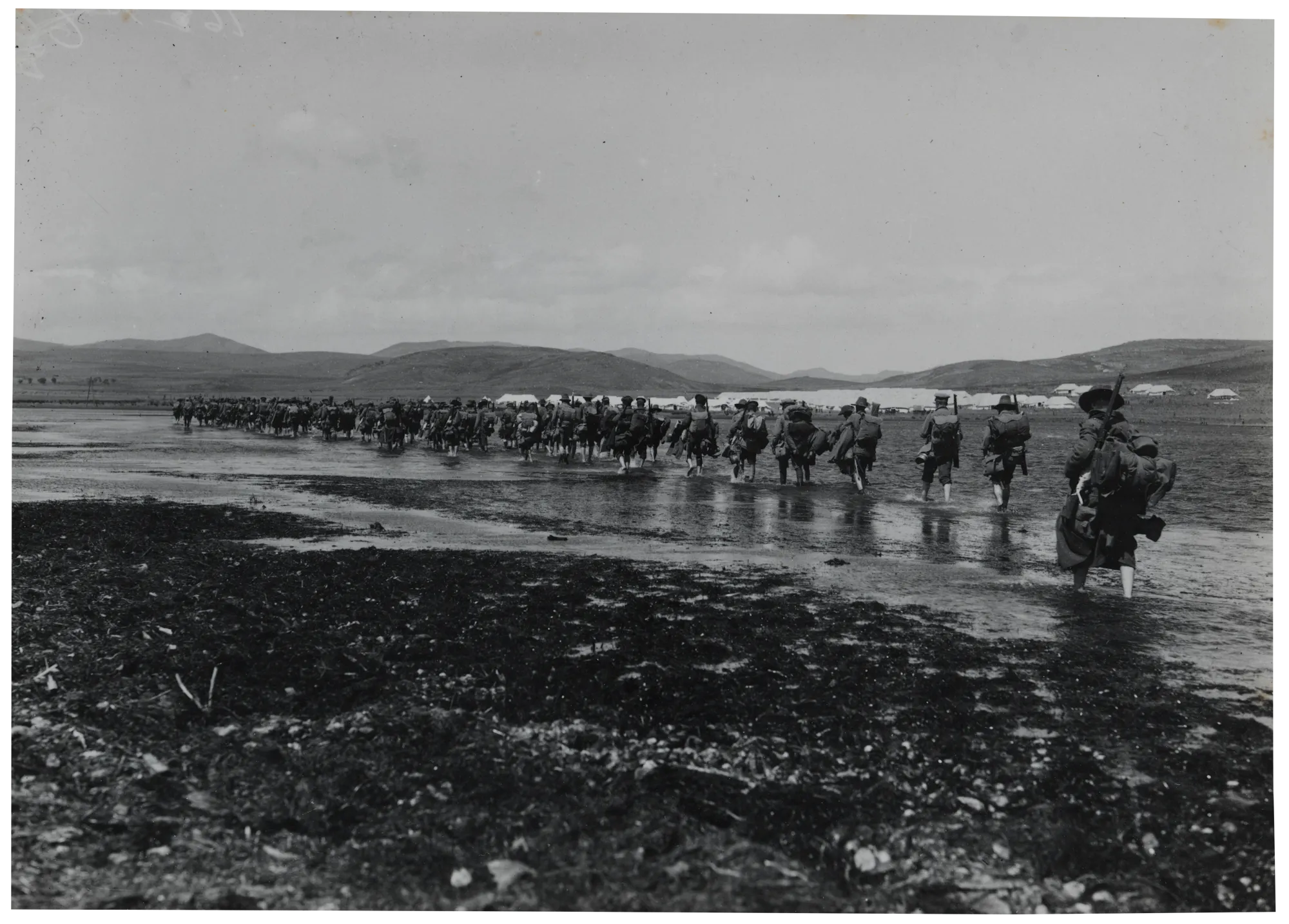
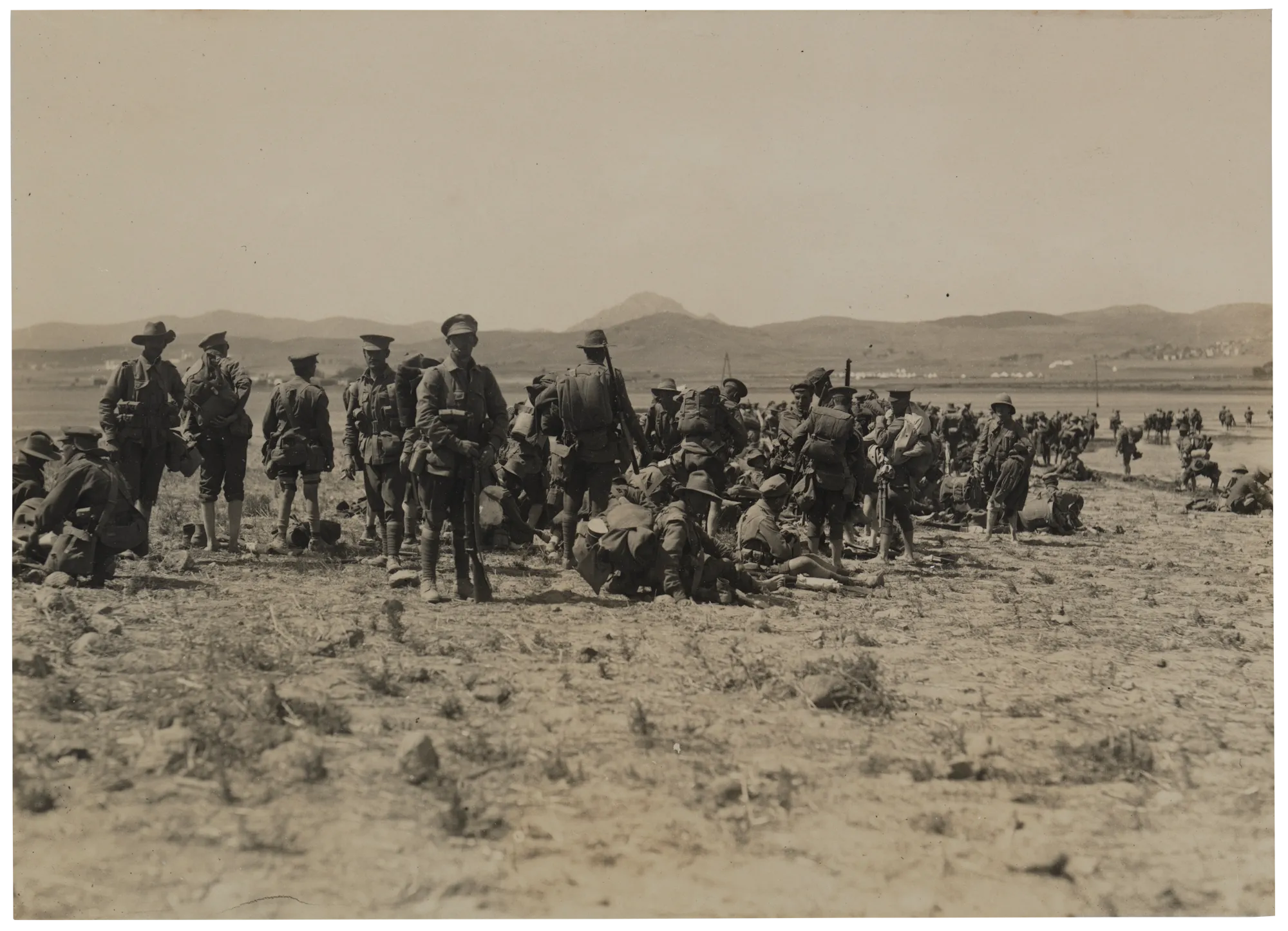
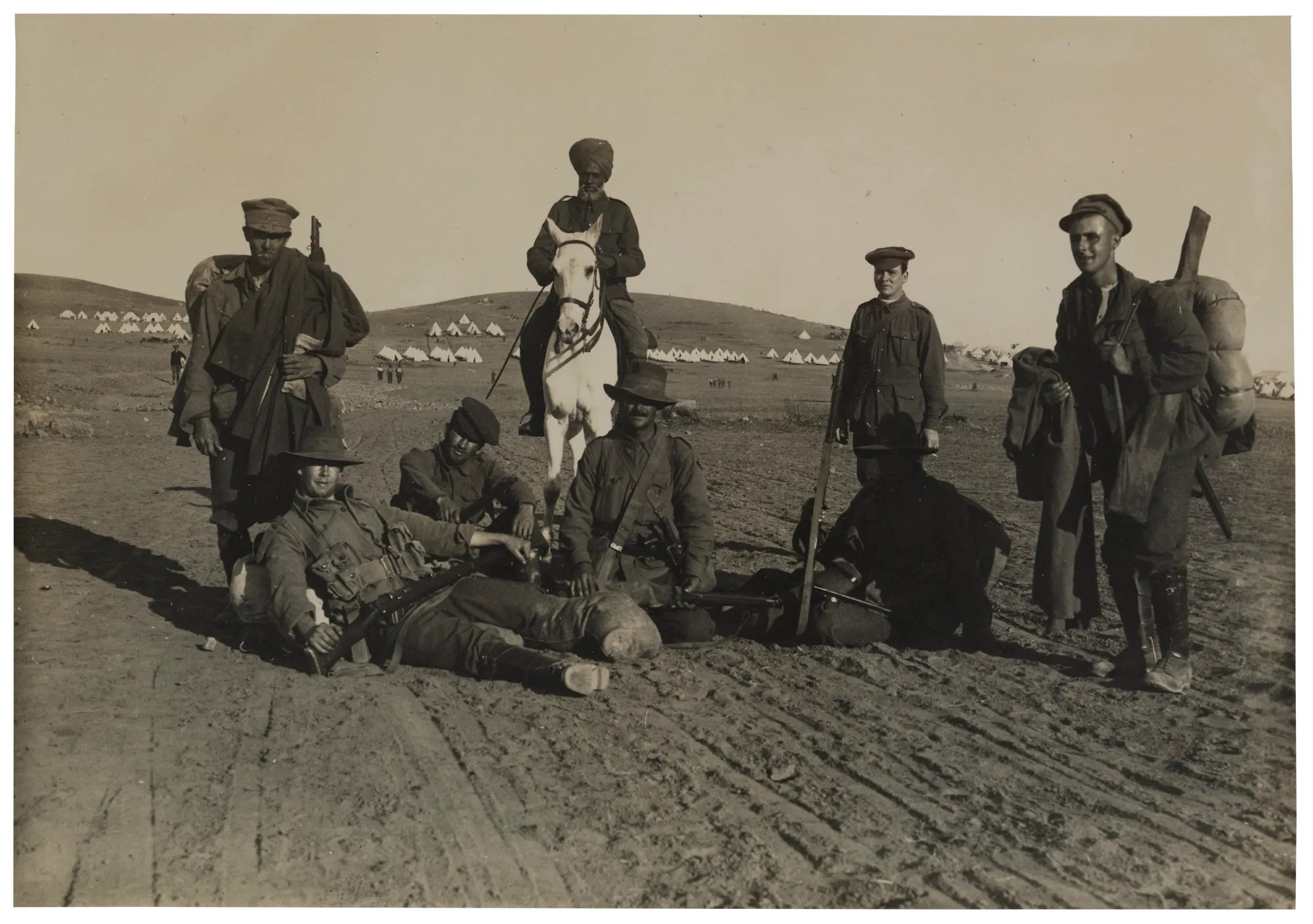
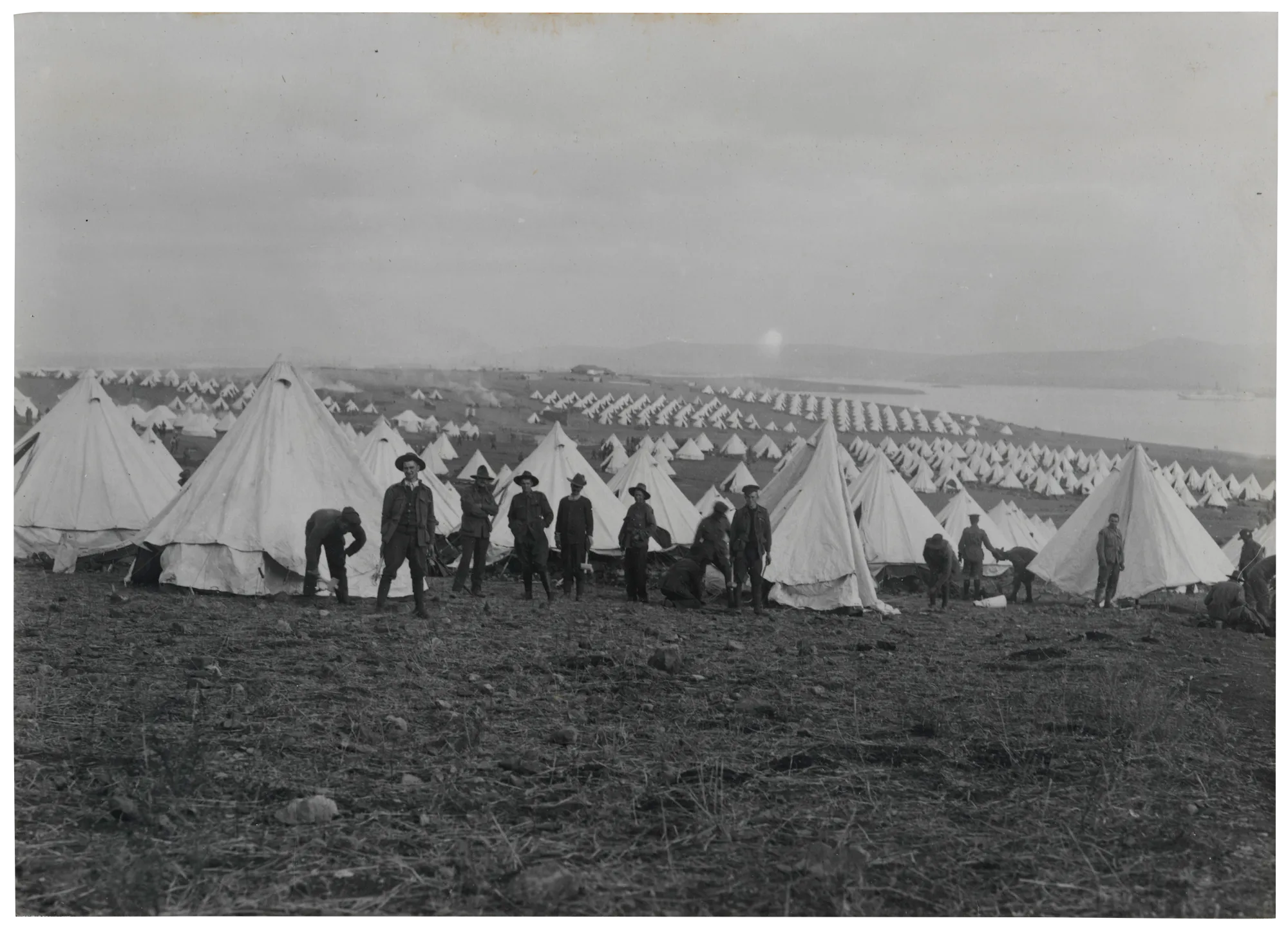

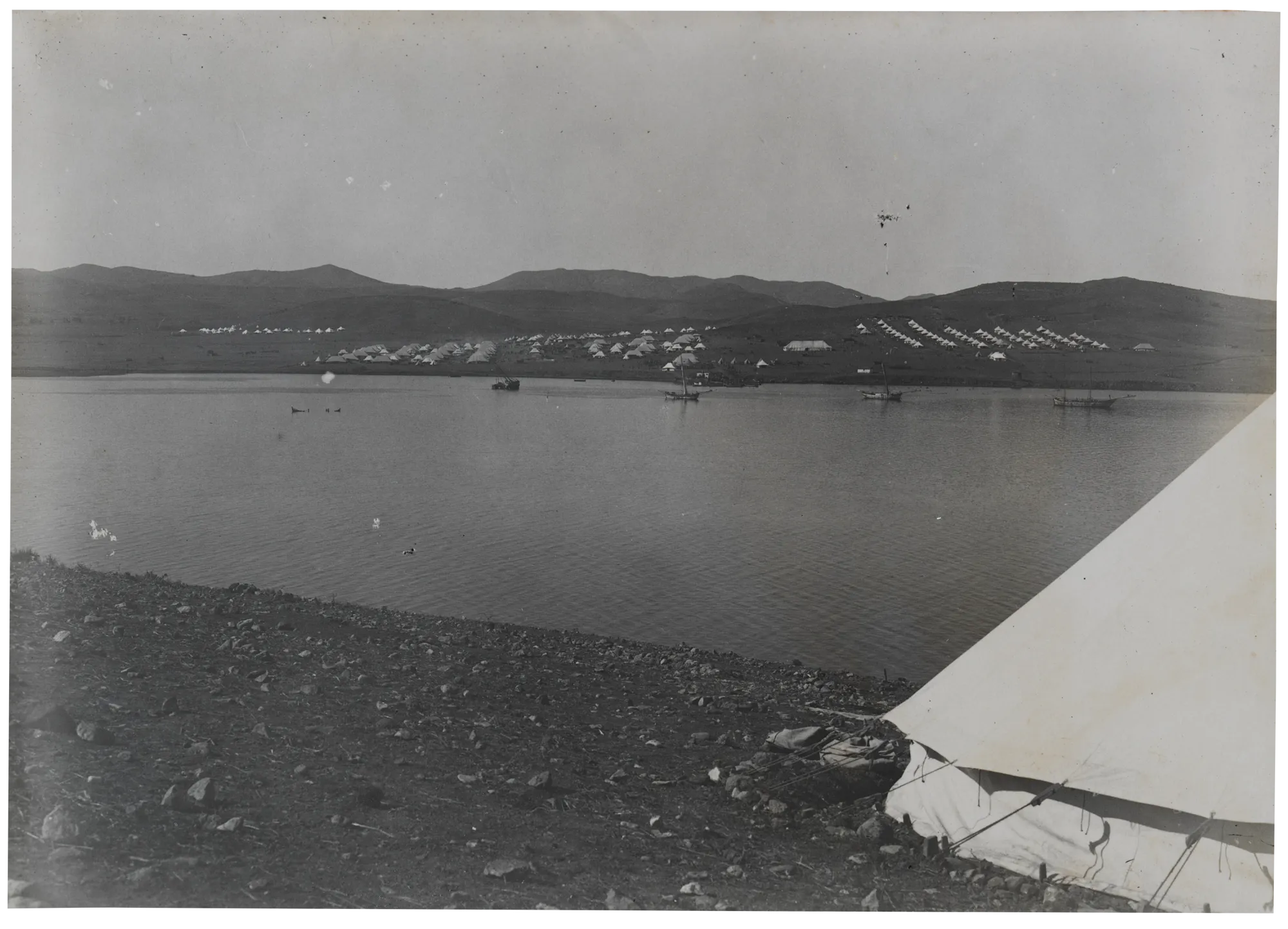
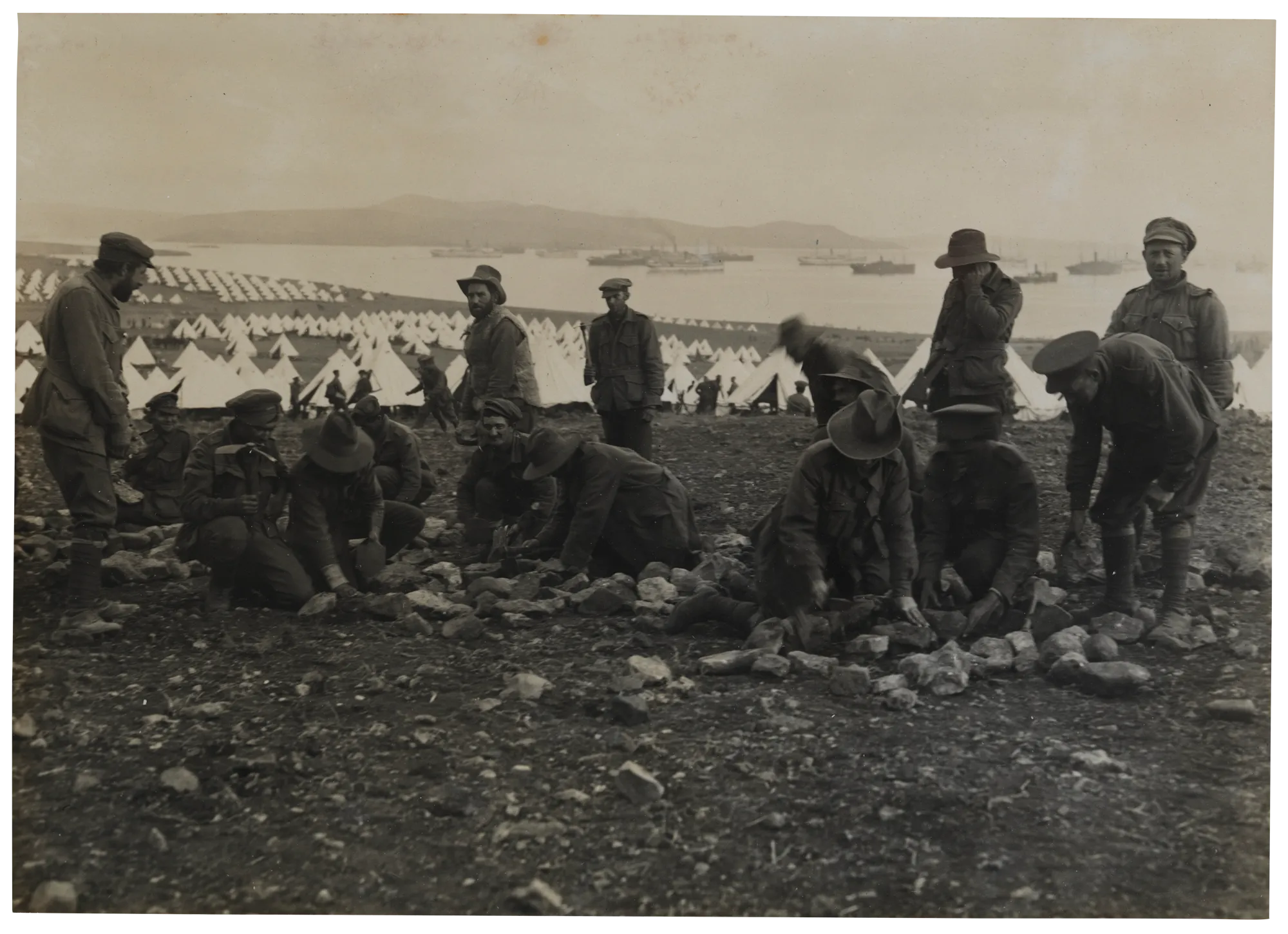
‘This morning we heard the band playing. It was the 1st Brigade on its way back to Anzac after a rest. They came along the main street of our Hospital. We Sisters gather up all the cigarettes and chocolates and tins of food we can and throw them to the smiling faces as they march by. They are brave and apparently cheerful, though we all know how in their inner heart they dislike going back to all they remember there. It makes us feel terribly sad.’
– Staff Nurse Anne Donnell, Letters of an Australian Army Sister, p. 60
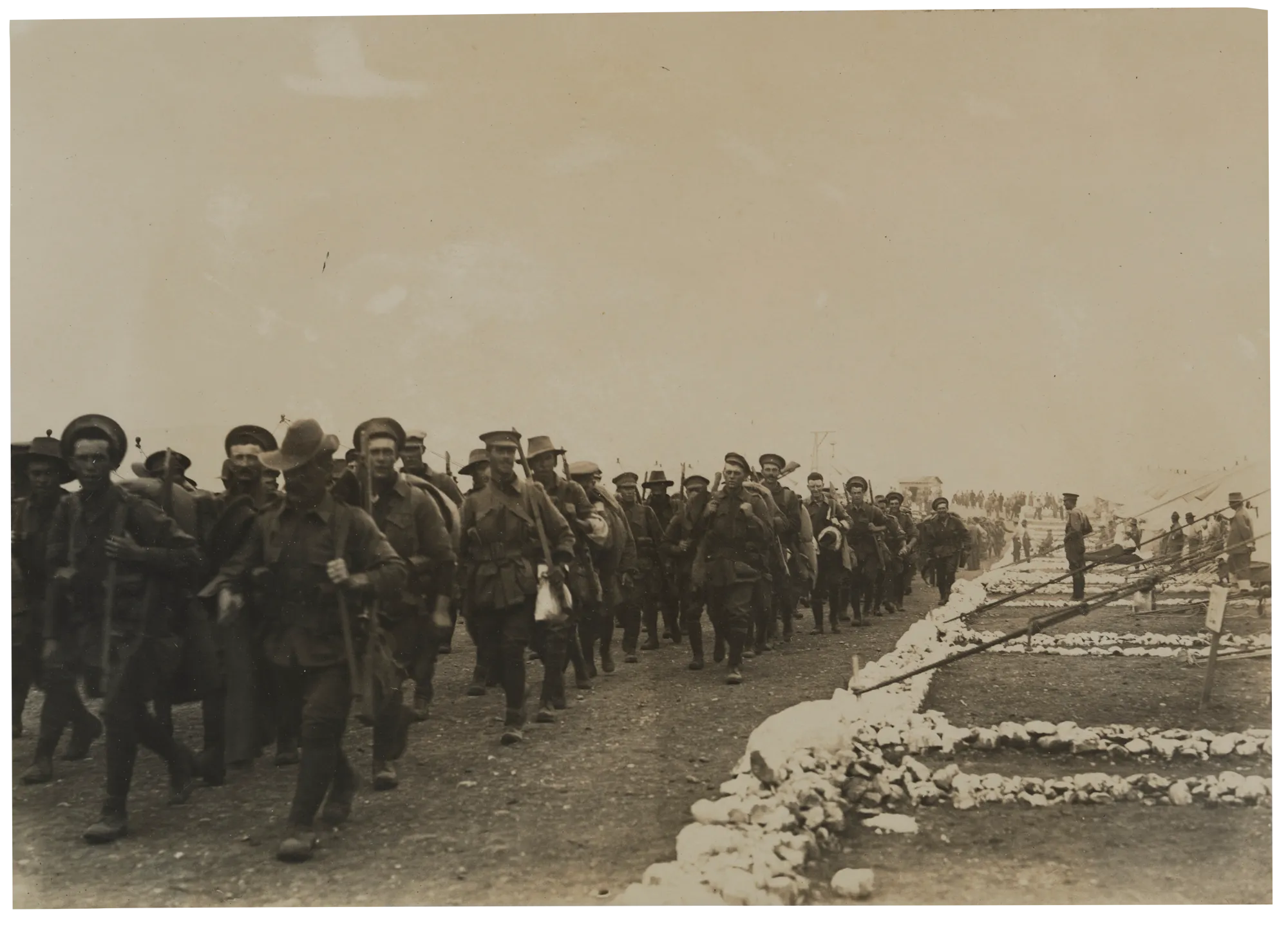
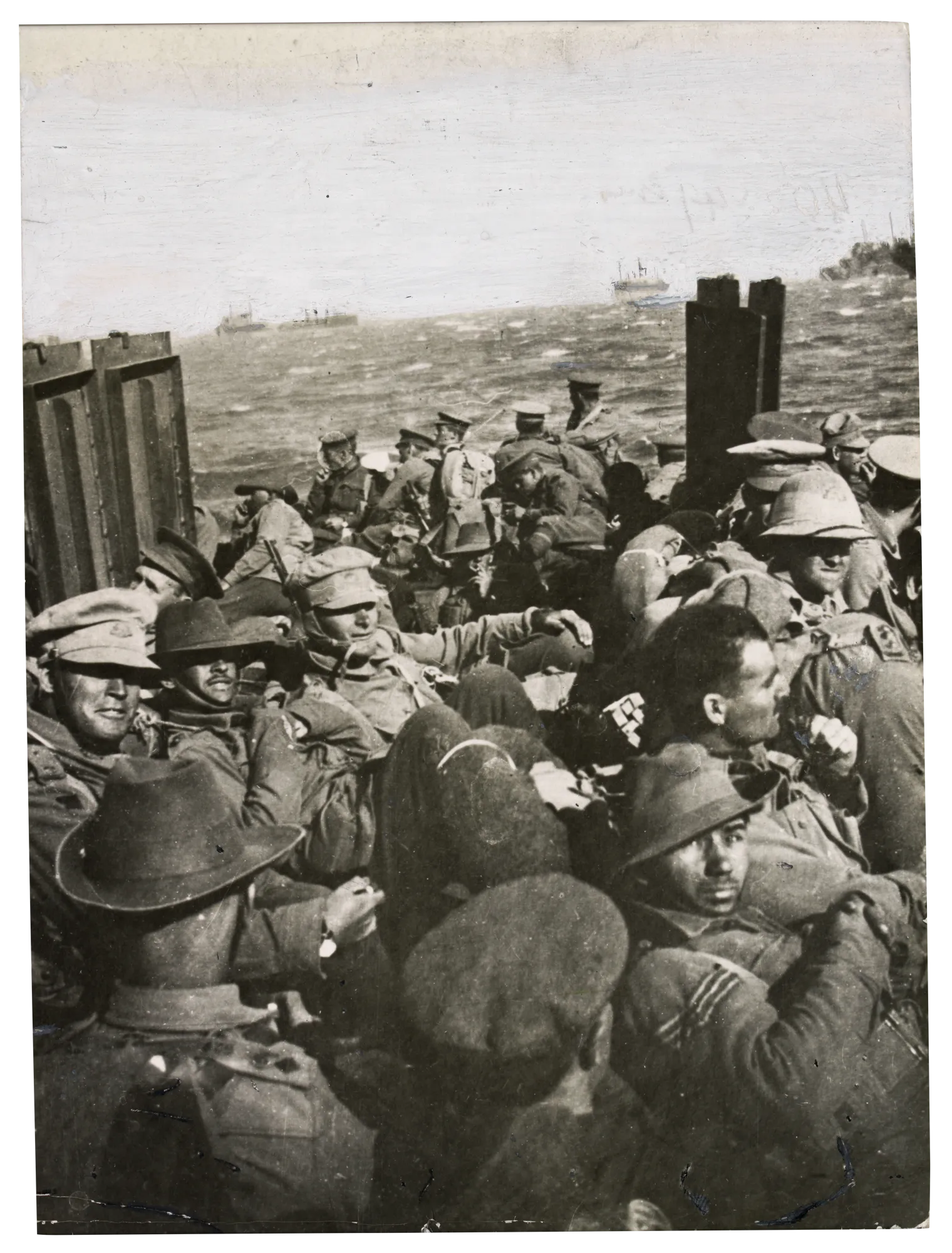
Containing an outbreak of mumps and measles
In October, both the 2nd and 4th Brigade reinforcements were confined to an isolation camp. Some of their number suffered an outbreak of mumps and measles.
‘I wonder why this island is so unhealthy … Yet I don’t suppose it is the island so much as the flies and the want of suitable food.’
– Staff Nurse Anne Donnell, diary, 29 Oct. 1915
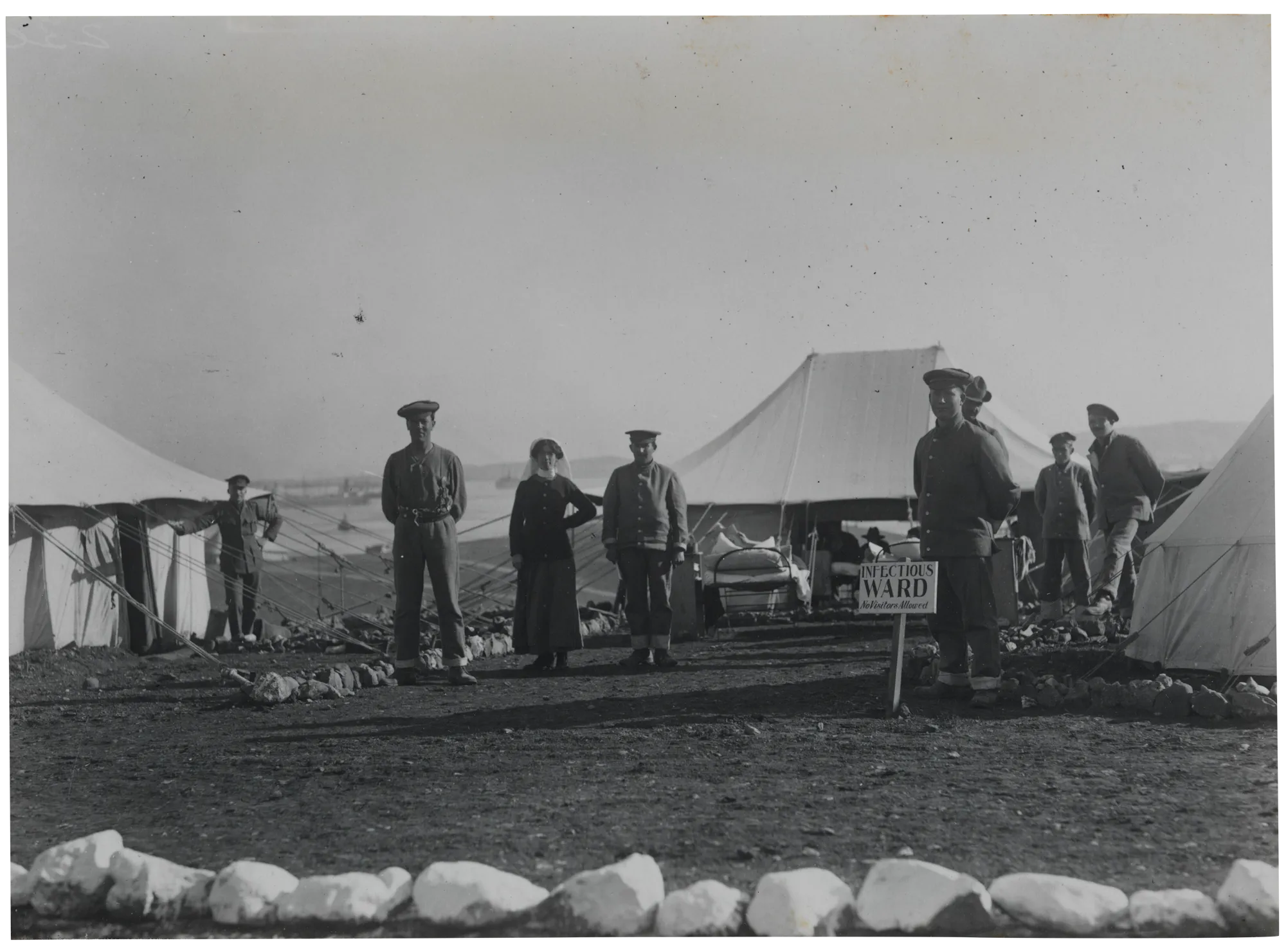
Australian Red Cross depot established
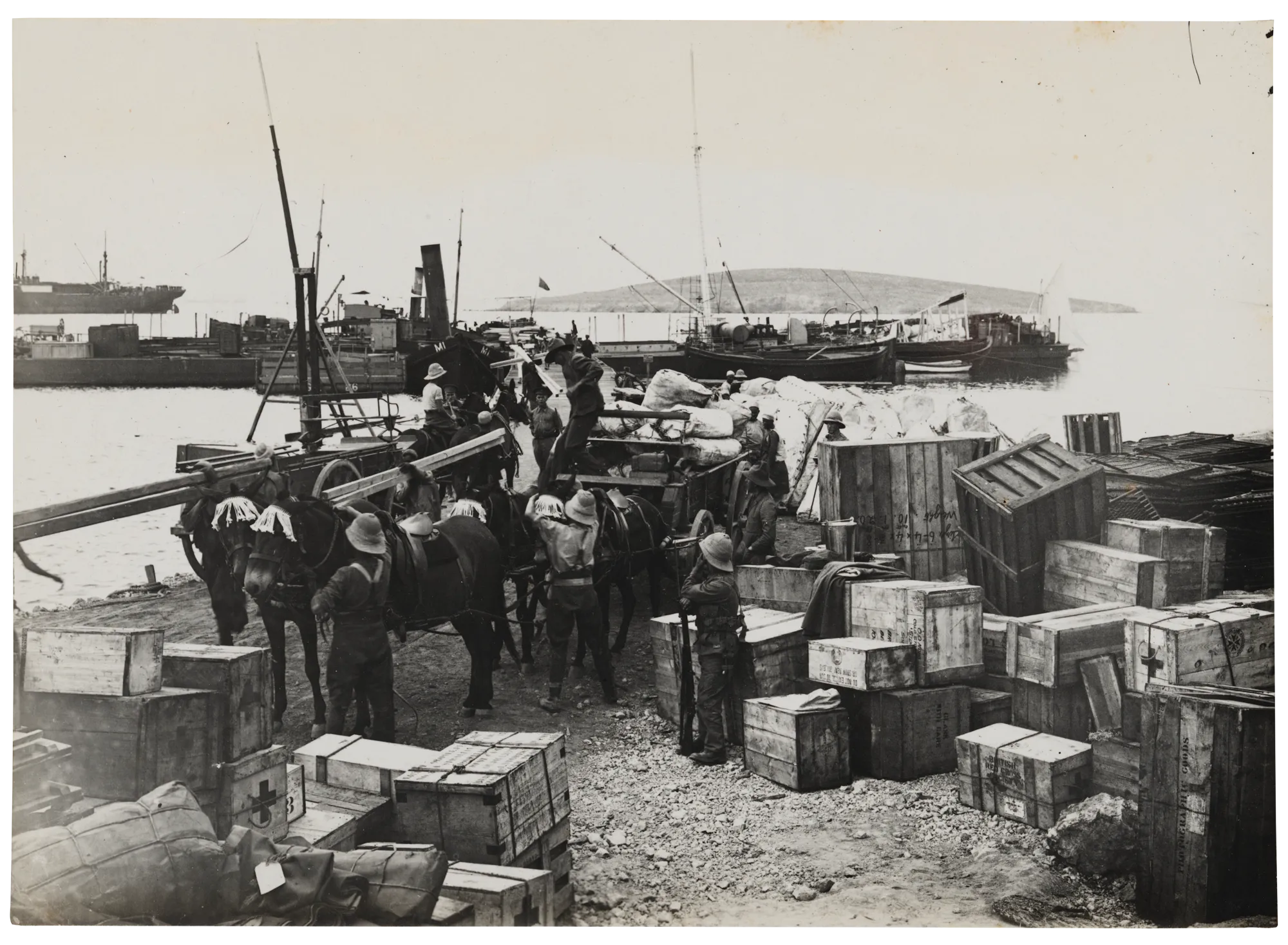
An Australian Red Cross depot operated on Lemnos from October. The following month, a representative joined the depot. Their role was to distribute the welcome goods and comforts that had been sent to personnel.
WINTER 1915–16
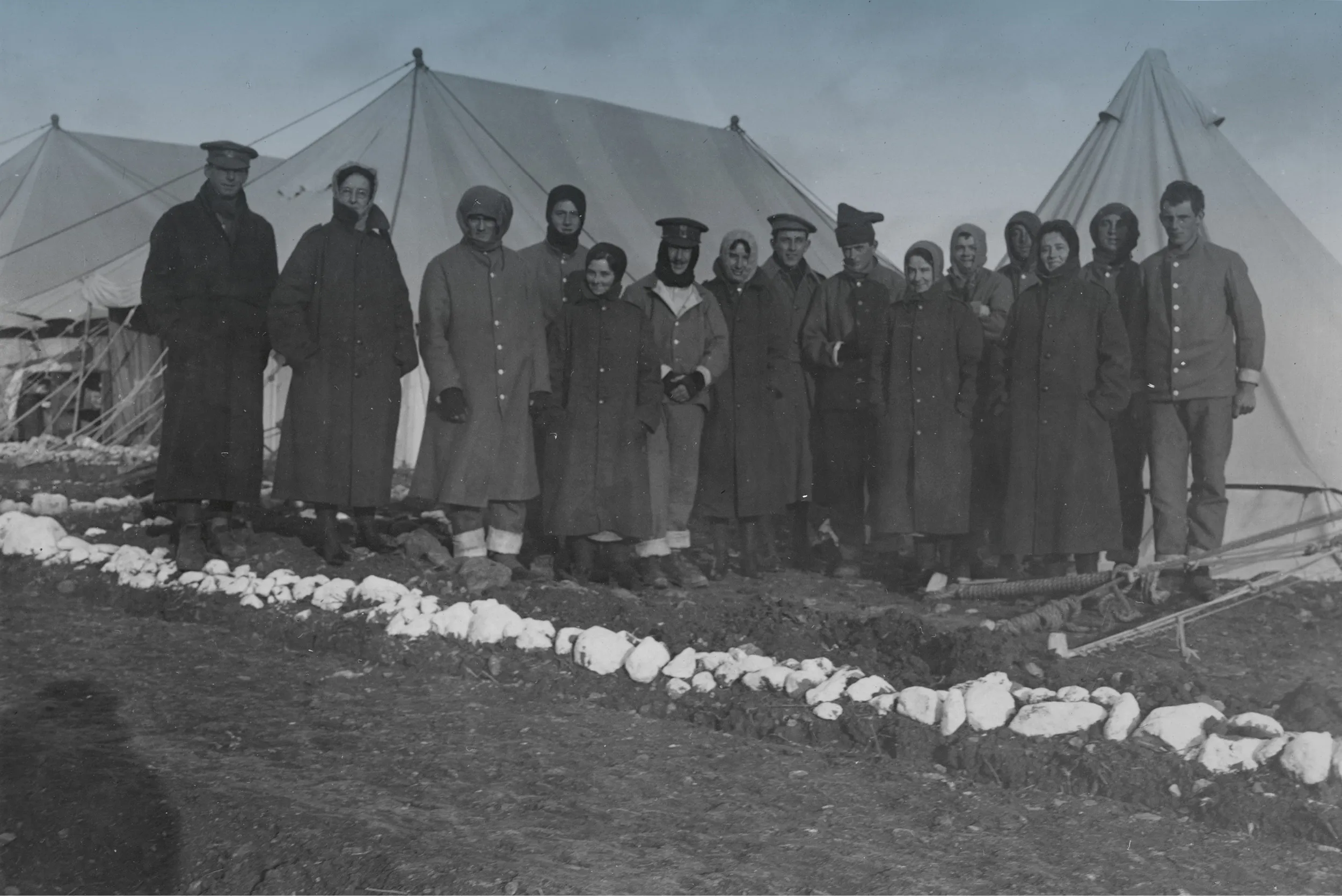
WINTER WAS BITTERLY COLD. SNOW FELL AND THE ISLAND WAS ALSO BATTERED BY STORMS AND DRIVING RAIN.
THE ALLIES PLANNED AND EXECUTED THEIR WITHDRAWAL FROM THE UNWINNABLE GALLIPOLI CAMPAIGN.
BY MID-JANUARY, THE MILITARY BASE ON LEMNOS WAS PACKED UP. FACILITIES ESTABLISHED OVER THE PREVIOUS NINE MONTHS WERE TRANSPORTED TO EGYPT. SO TOO WERE THE PERSONNEL, MANY OF WHOM WOULD SOON SERVE ON THE WESTERN FRONT.
Winter arrives
‘We all suffered terribly with the cold, and with all our warm clothing we couldn’t get warm day or night. Personally I shivered for three nights without sleep: I have chilblains and my two small toes are frostbitten – agony.’
– Staff Nurse Anne Donnell, letter, 6 Dec. 1915
Evacuation of Gallipoli
On 20 December, the last of the Anzacs withdrew from Gallipoli. Around 50,000 troops arrived on Lemnos. Some were treated in the hospitals, others rested their war-weary bones before they boarded troopships bound for Egypt.
The withdrawal of British and French troops from Helles was completed on 8 January 1916.
‘The whole island [of Lemnos] is simply a mass of men and tents.’
– Matron Grace Wilson, quoted in Lemnos and Gallipoli Revealed, p. 219

Christmas Day
This was first Christmas Day the Australians experienced following battle. The bruising Gallipoli campaign was only just behind them.
The Red Cross had helped distribute Christmas billies to Lemnos. Packed with treats, the billies offered some excitement and connection with home, and perhaps were a reminder of normality.
Captain George Furner Langley wrote that his men were ‘just like children with Christmas stockings’.
‘The boys hung up their socks, and I had to sneak round at 3am and fill them with toys and sweets. Two men saw me and said Father Christmas had a white cap and gown on. There was great excitement in the morning.’
– Staff Nurse Evelyn Davies, letter, 15 Jan. 1916
‘Never will I forget my Xmas Day of 1915 on Lemnos Island. We were all issued with billies and a plum pudding on the morning, and if you could only have seen the rush and intense interest shown in the opening of them all, I guess every dear Australian who so kindly sent them could not have been more satisfied.’
– Private Roy Malcolm, Riverina Recorder, 8 Mar. 1916
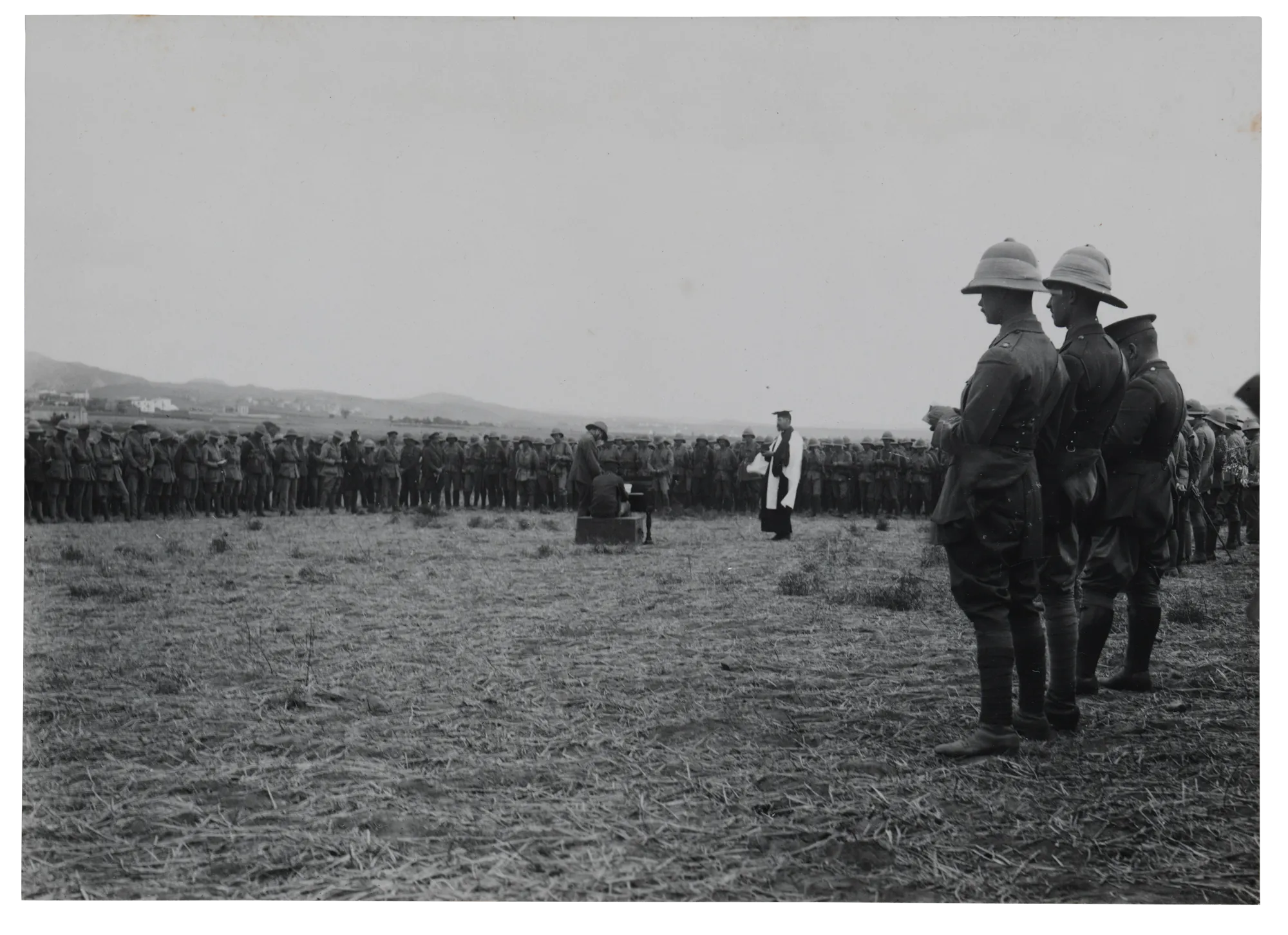
3AGH and 2ASH depart Lemnos
With the Gallipoli campaign having drawn to a close, the advanced military base at Lemnos was wound back.
Australia’s two hospitals were packed up. 2ASH departed Mudros Harbour on HMT Dunvegan Castle on 17 January, 3AGH on HMT Oxfordshire four days later, on 21 January.
The nurses surely left with mixed feelings. They had experienced war’s horror and deprivations, yet Lemnos had brought new experiences and unfamiliar liberties.
‘We have just seen the last of Lemnos. Of course we are glad – yet there are many things we will miss – the unconventional freedom for one and the unique experiences we had there ... Goodbye Lemnos – We take many happy memories of you. I would not have liked to miss you, yet I have no desire to see you again.’
– Staff Nurse Anne Donnell, diary, 21 Jan. 1916
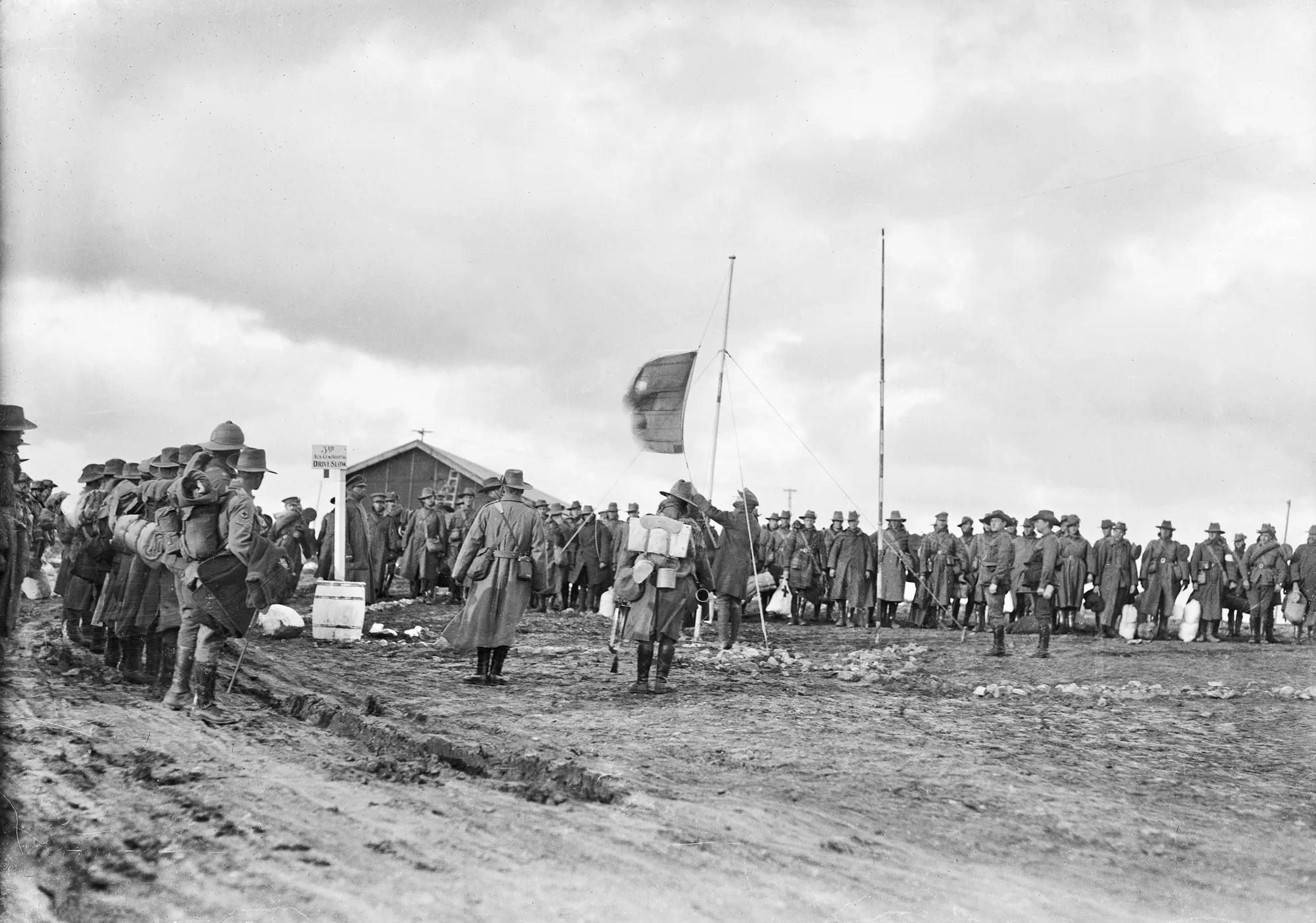
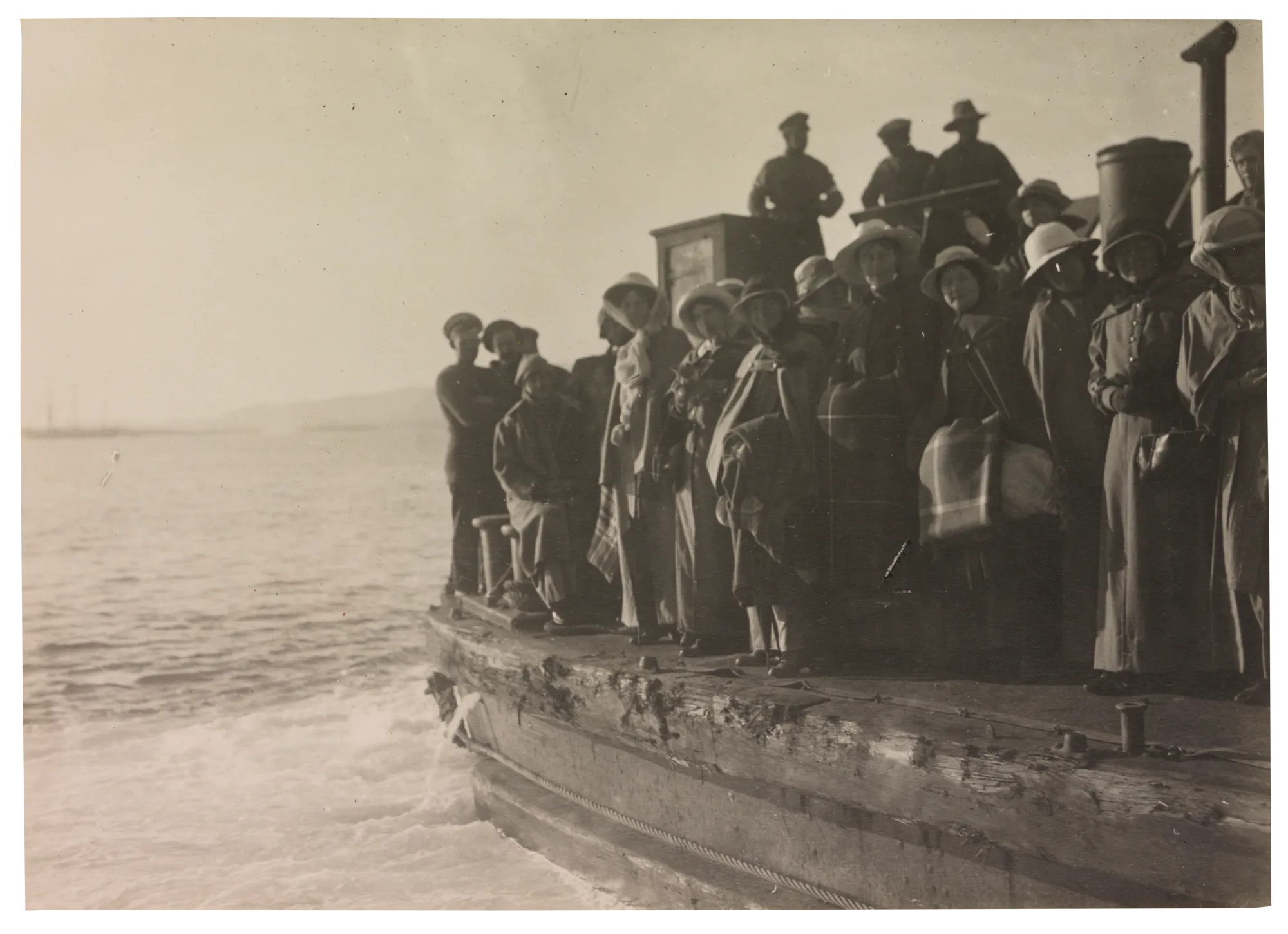
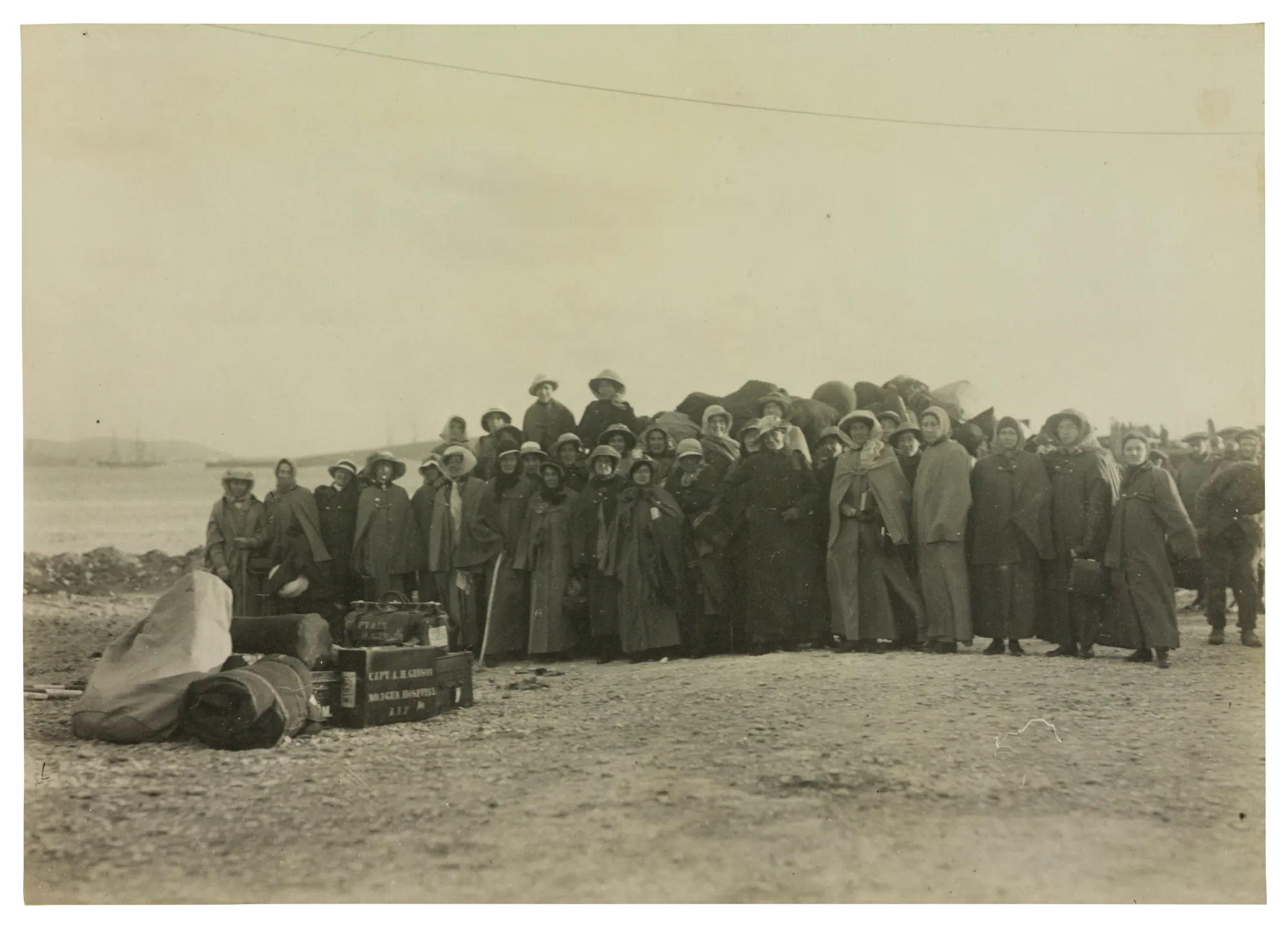

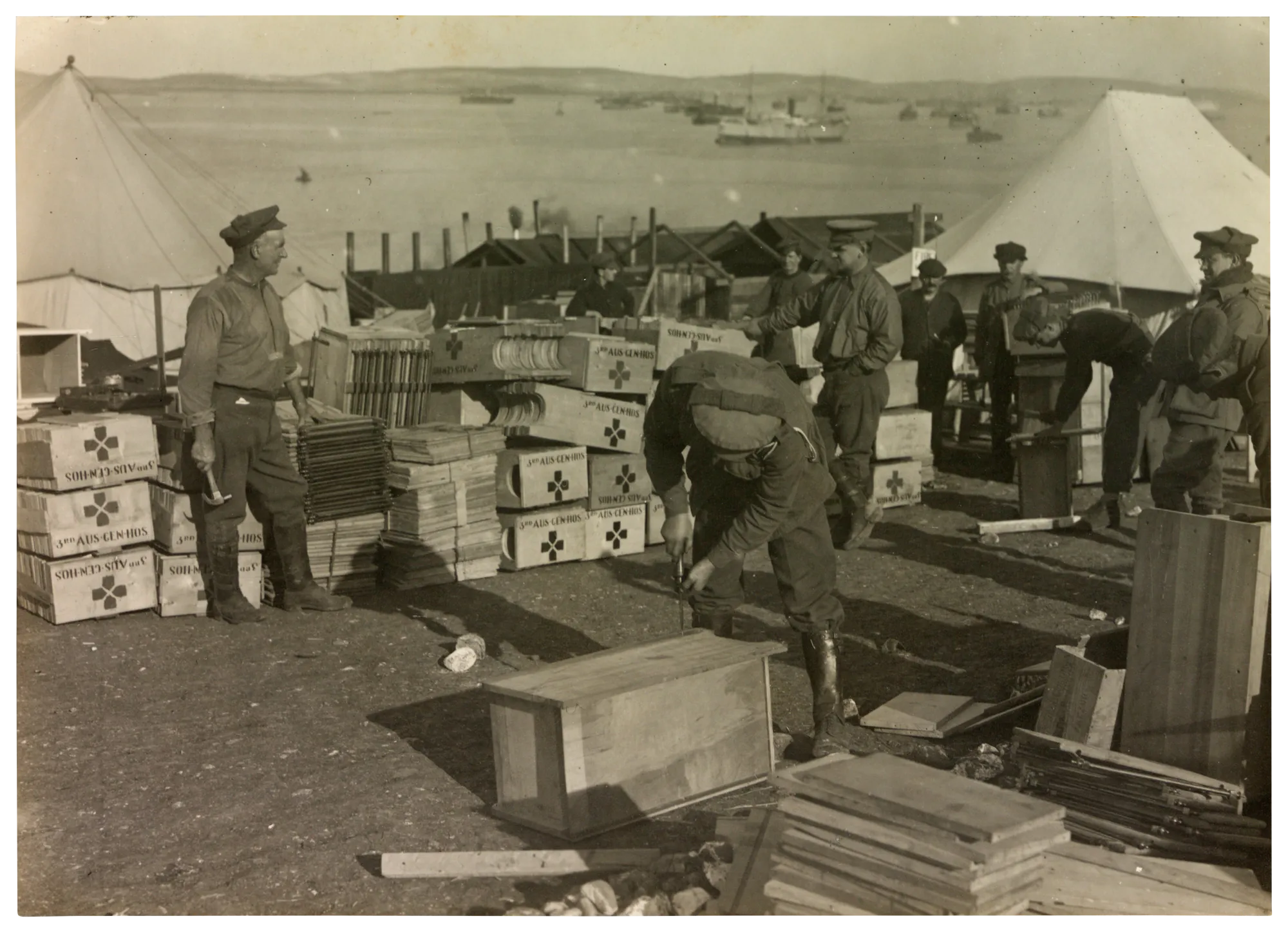
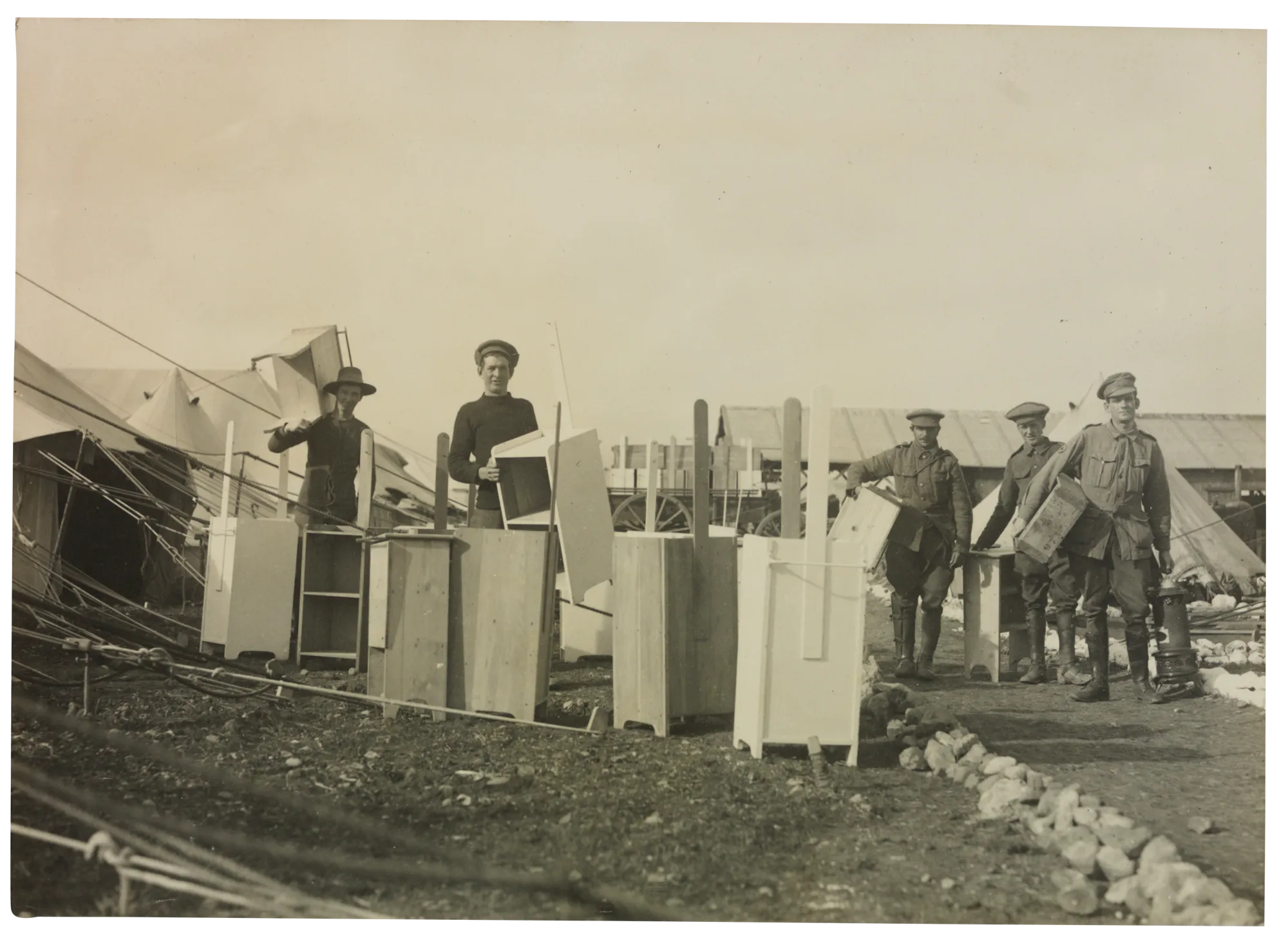
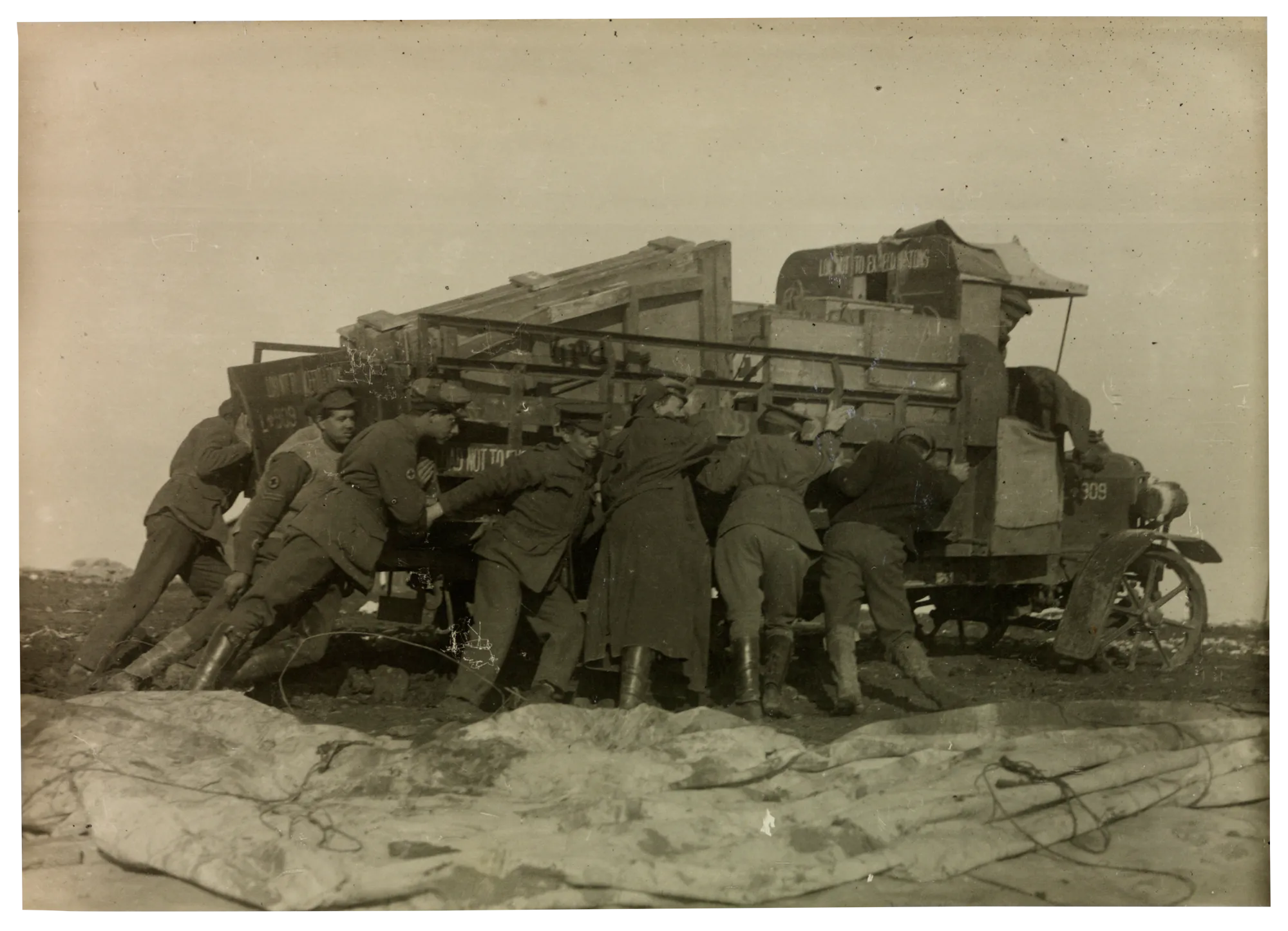
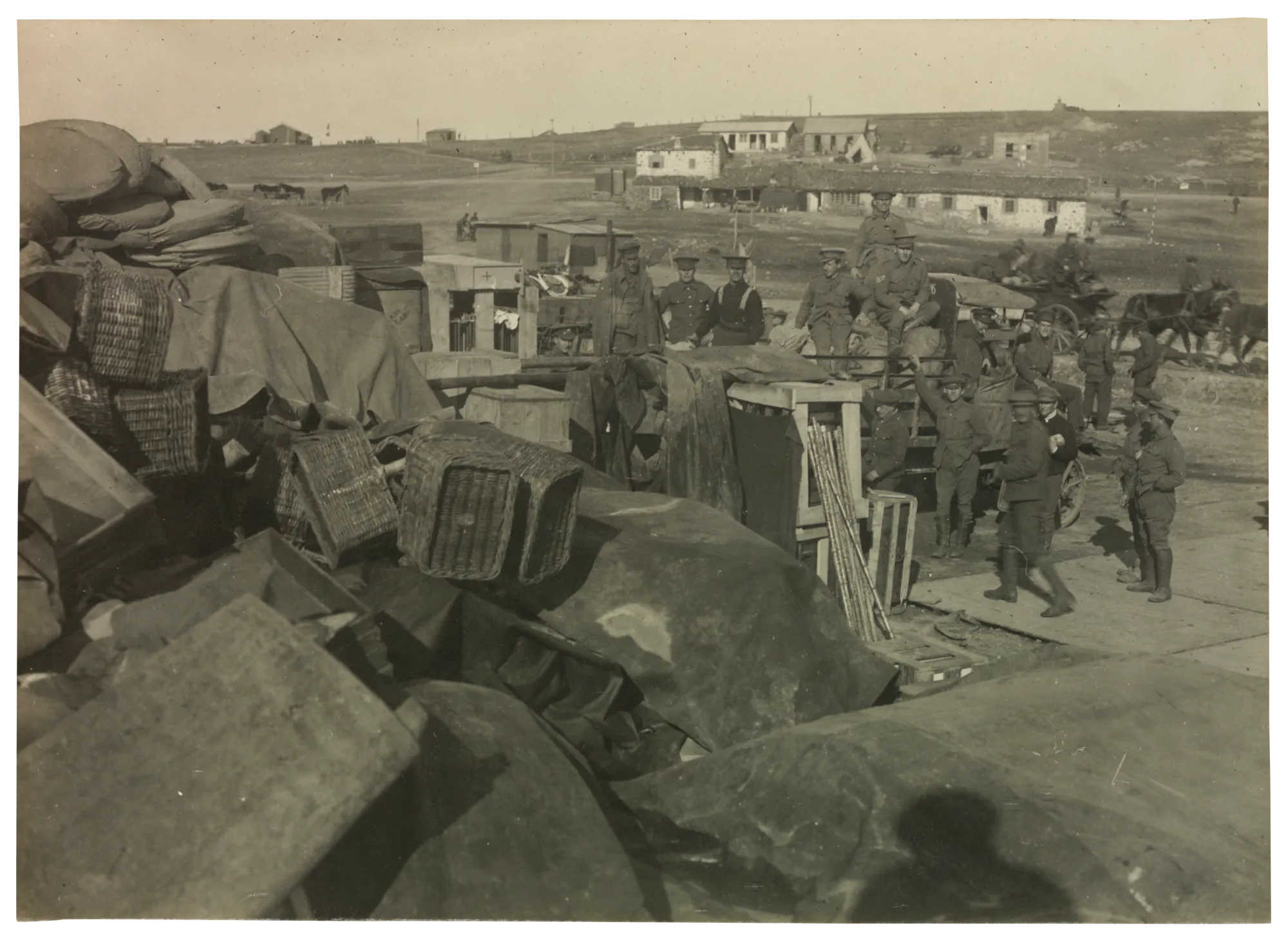
The Armistice of Mudros
On 16 October 1918, British prisoner of war Major-General Sir Charles Townshend was released. He carried a message from the Ottoman Empire that it wanted to enter peace negotiations.
A delegation negotiated with the British for several days on board HMS Agamemnon at Port Mudros. The resulting Armistice of Mudros came into effect on 30 October 1918.
By late 1918, Germany was facing defeat in the field and its civilian population was suffering under an Allied naval blockade. Germany’s leaders were ready to negotiate peace terms. On 11 November, the armistice with Germany was signed at Compiègne, France.
